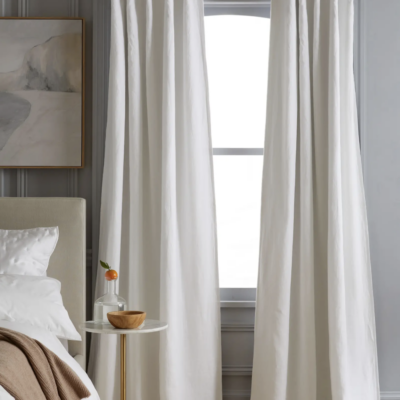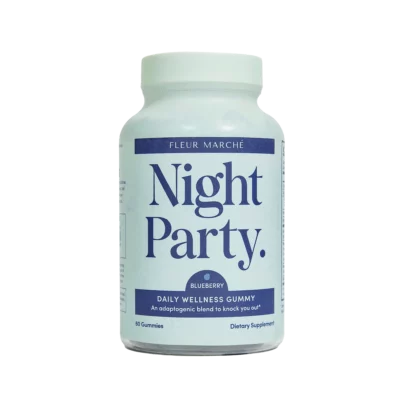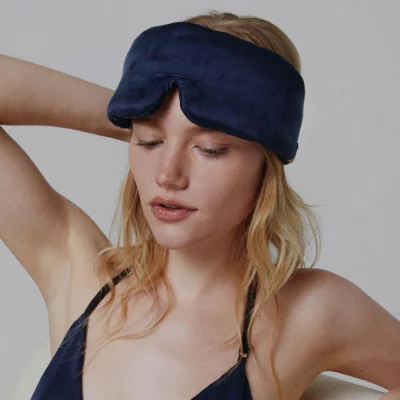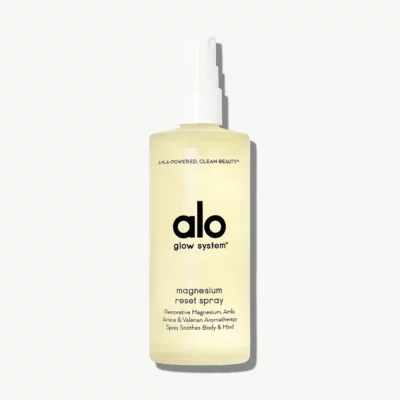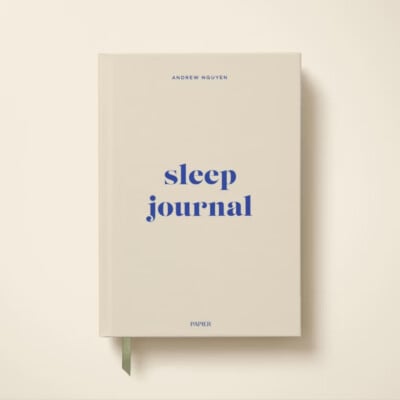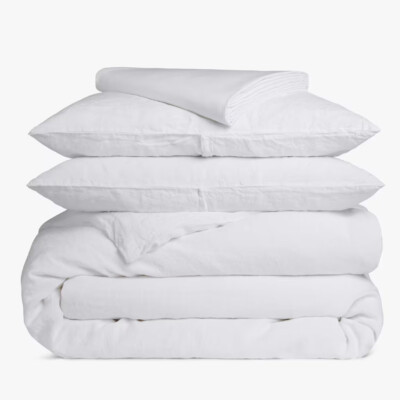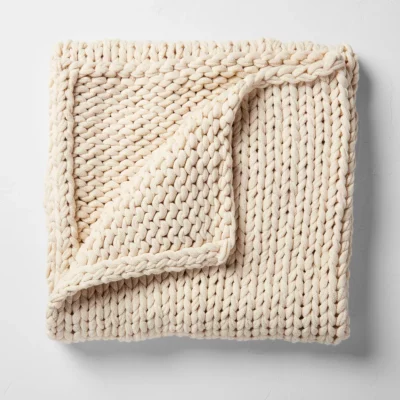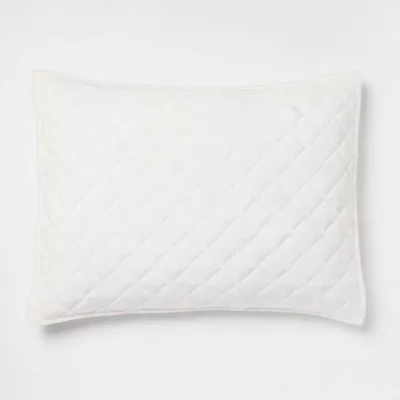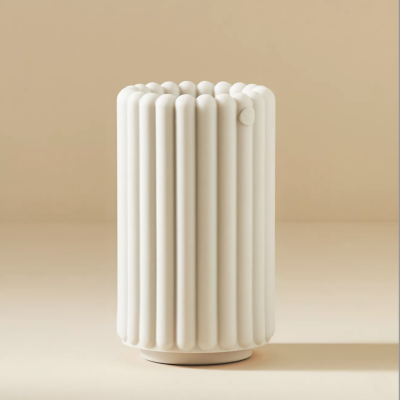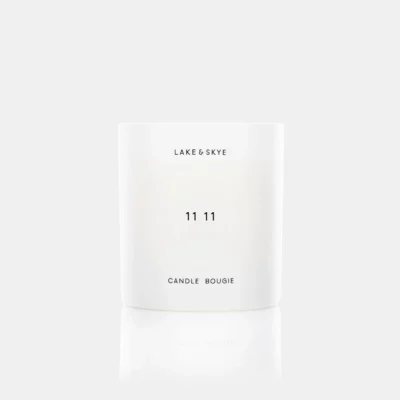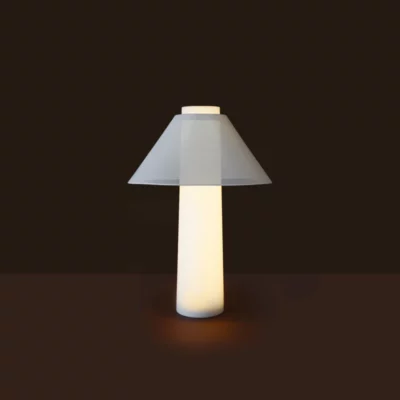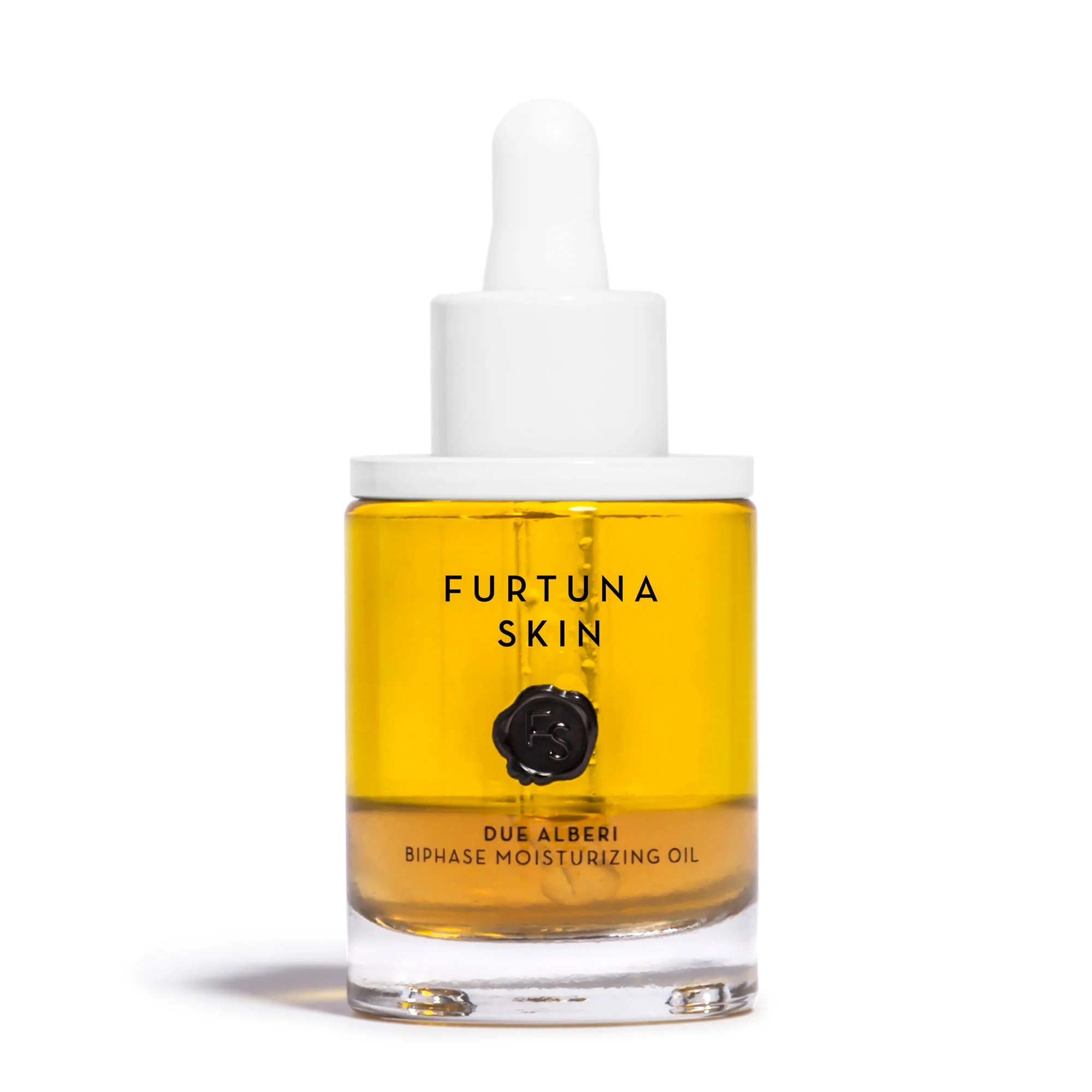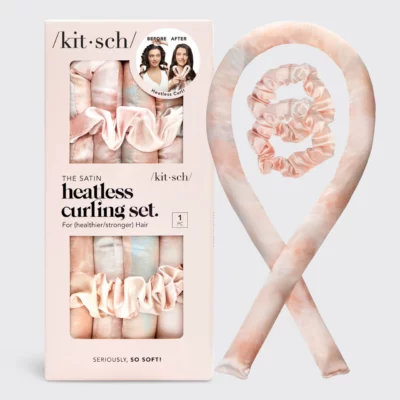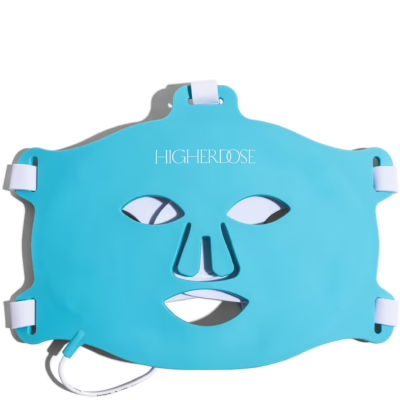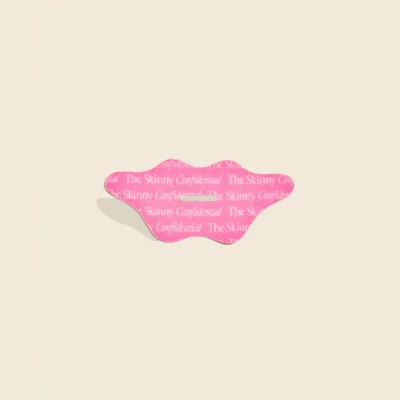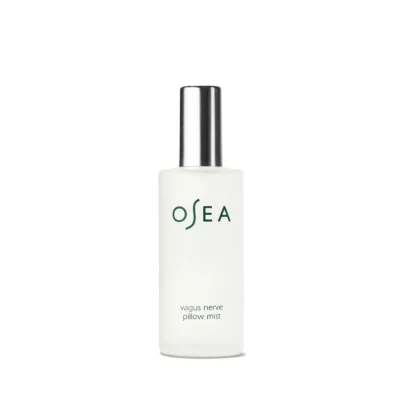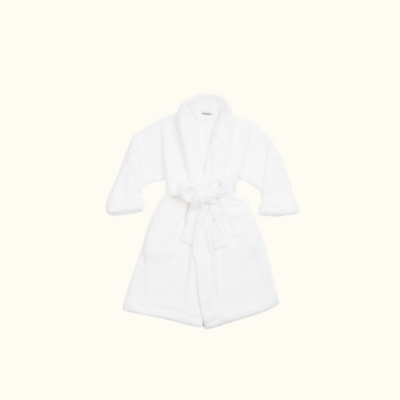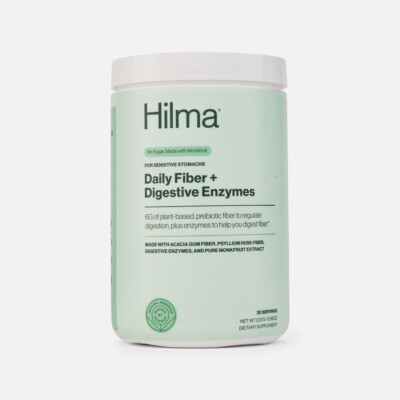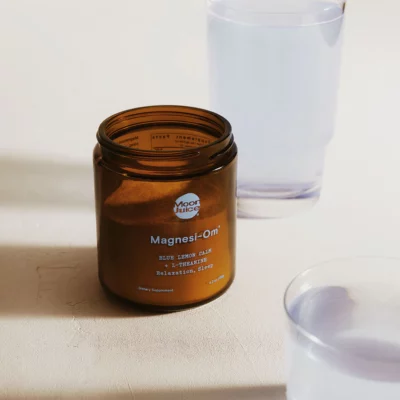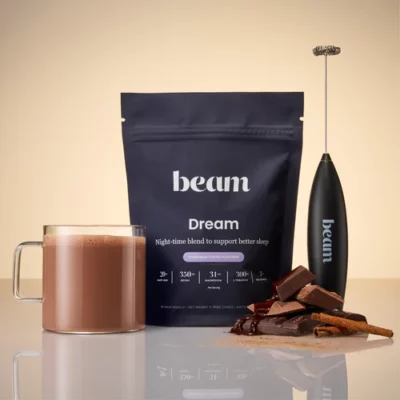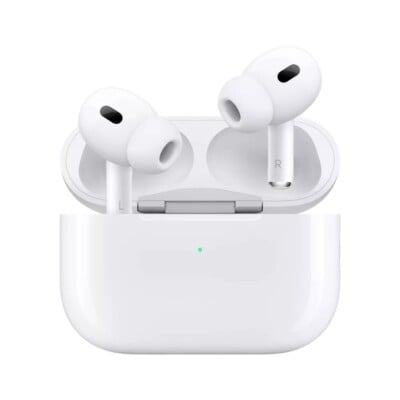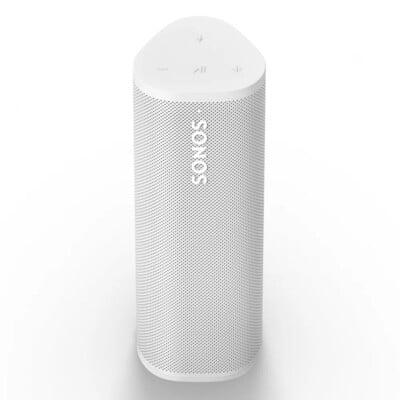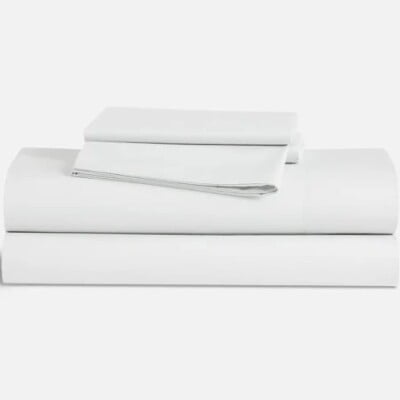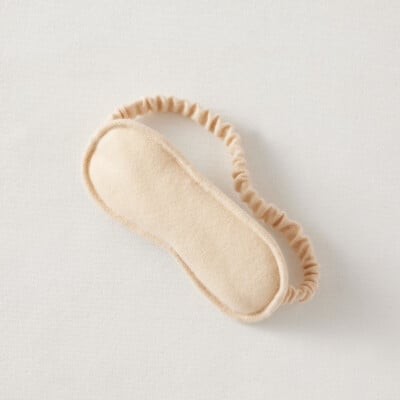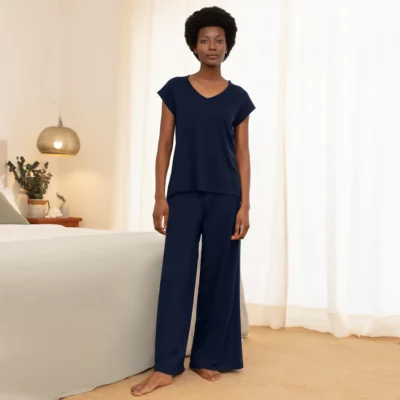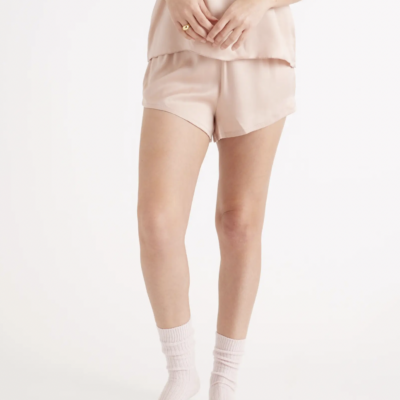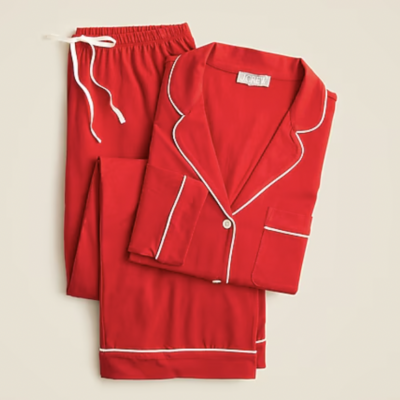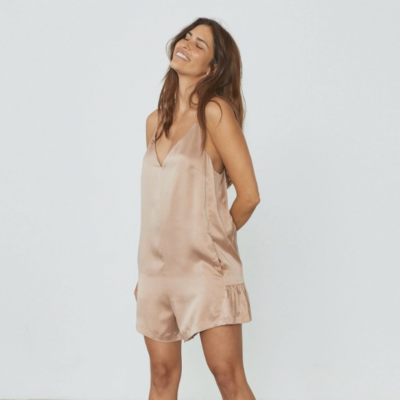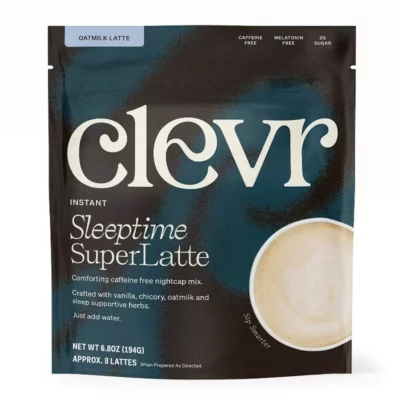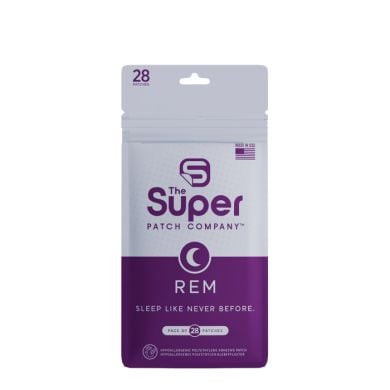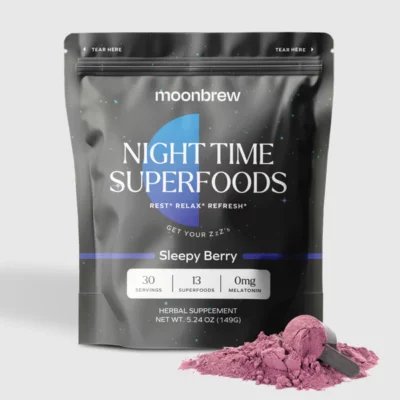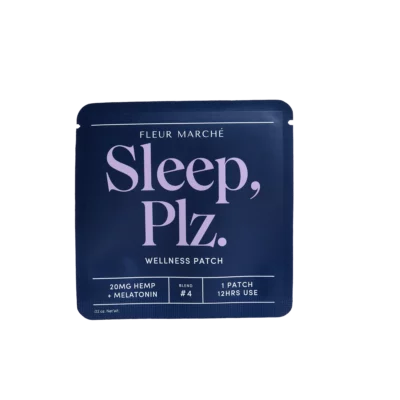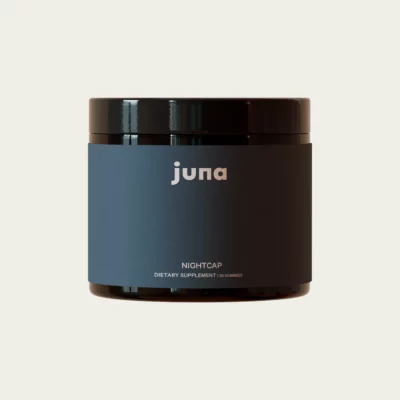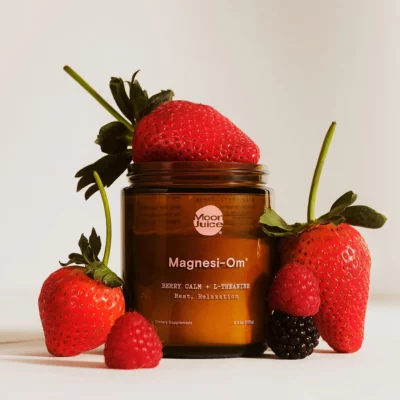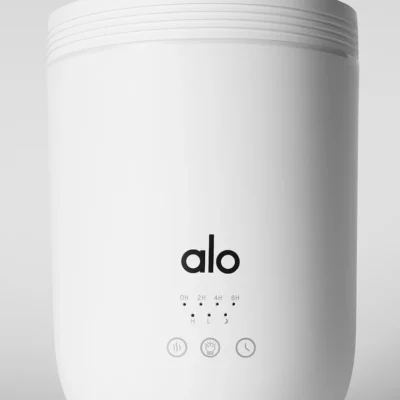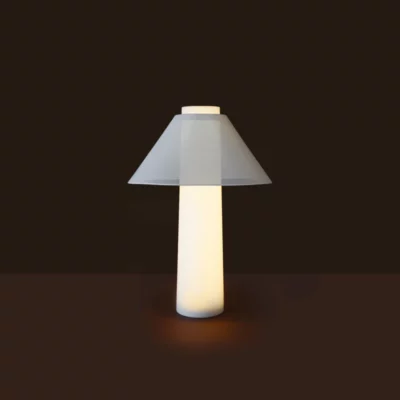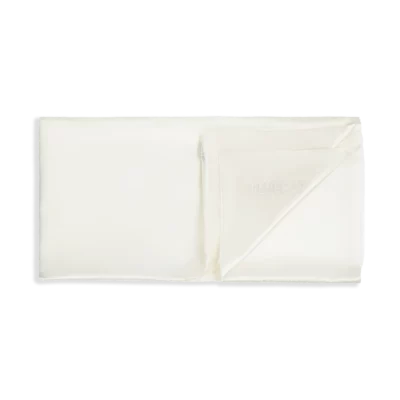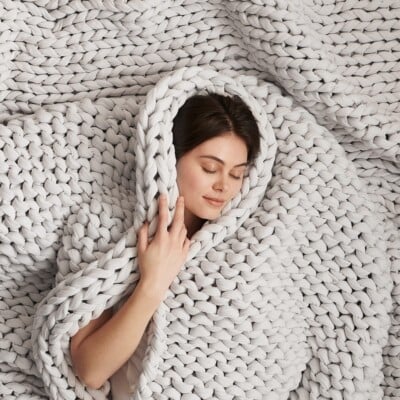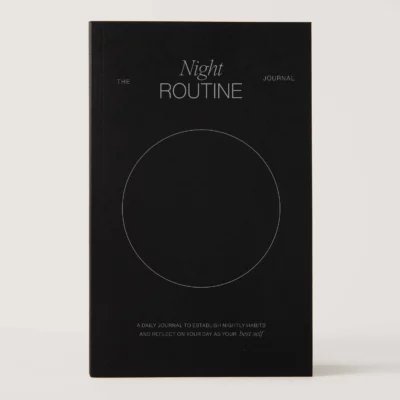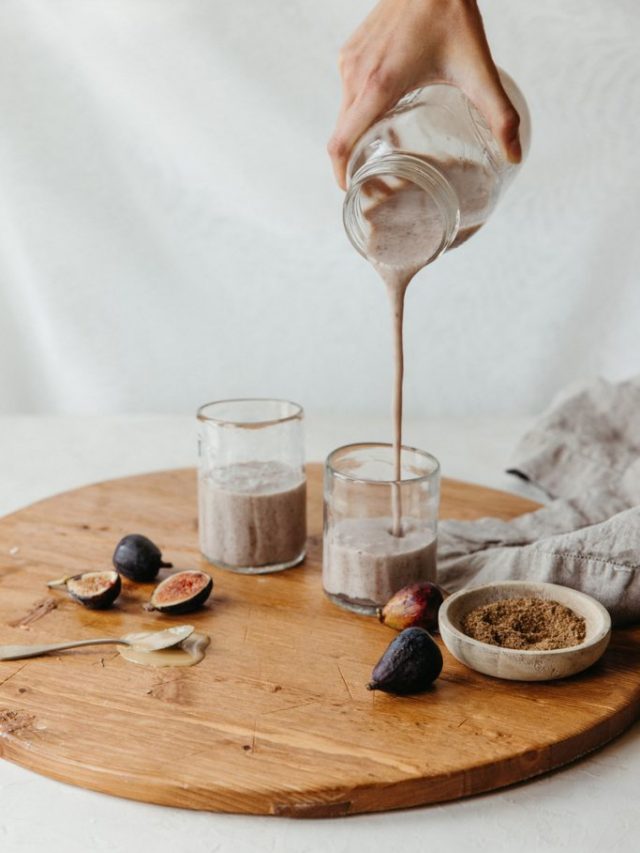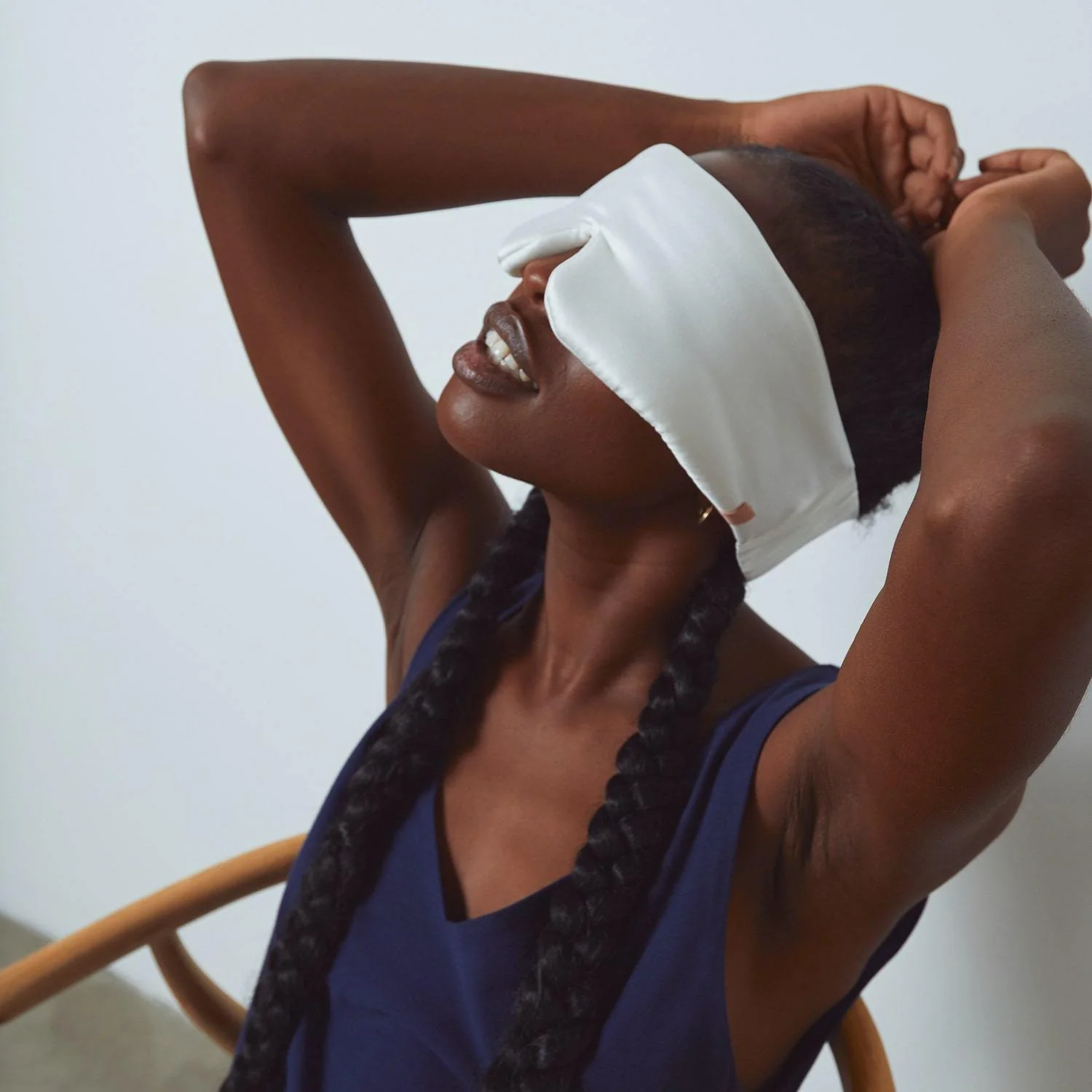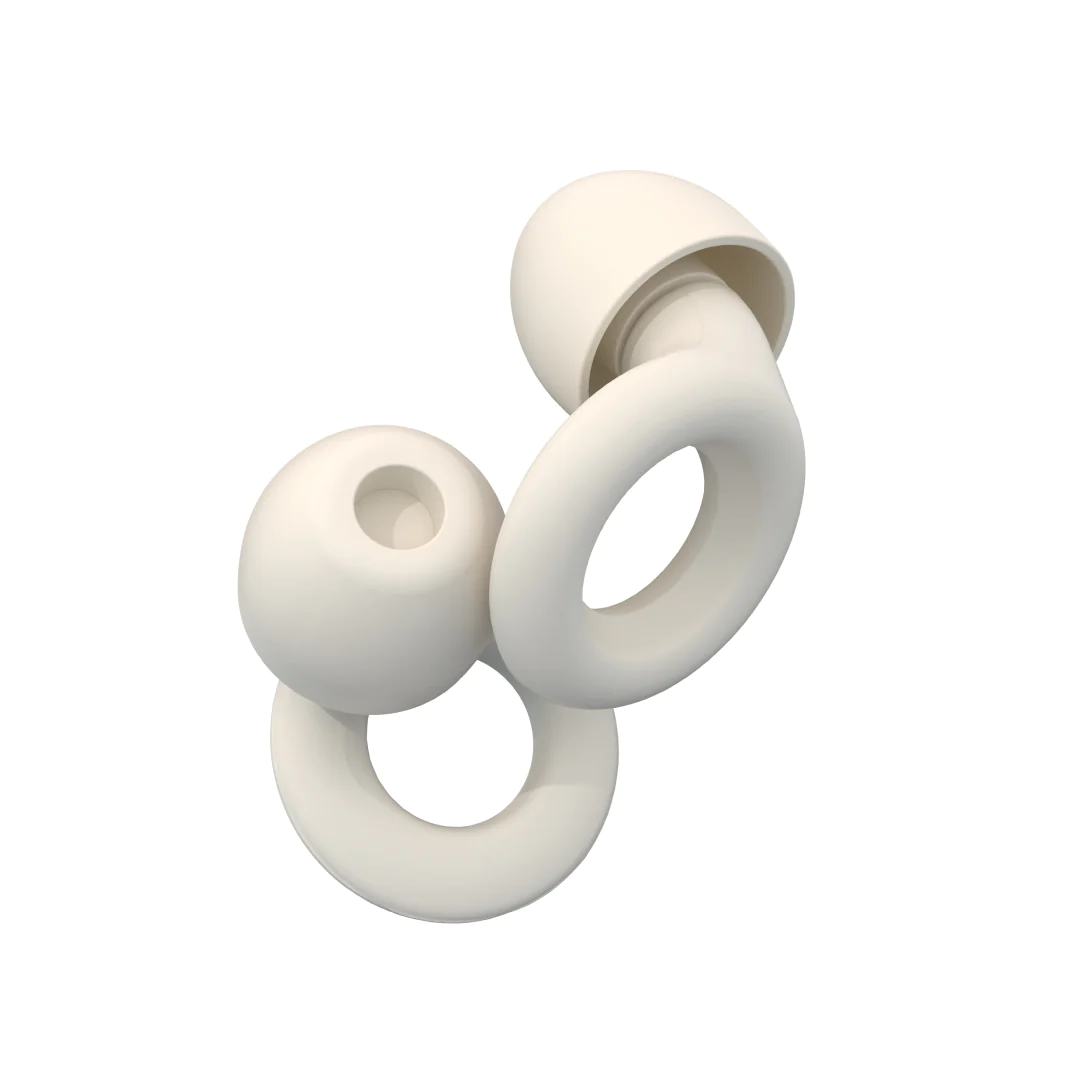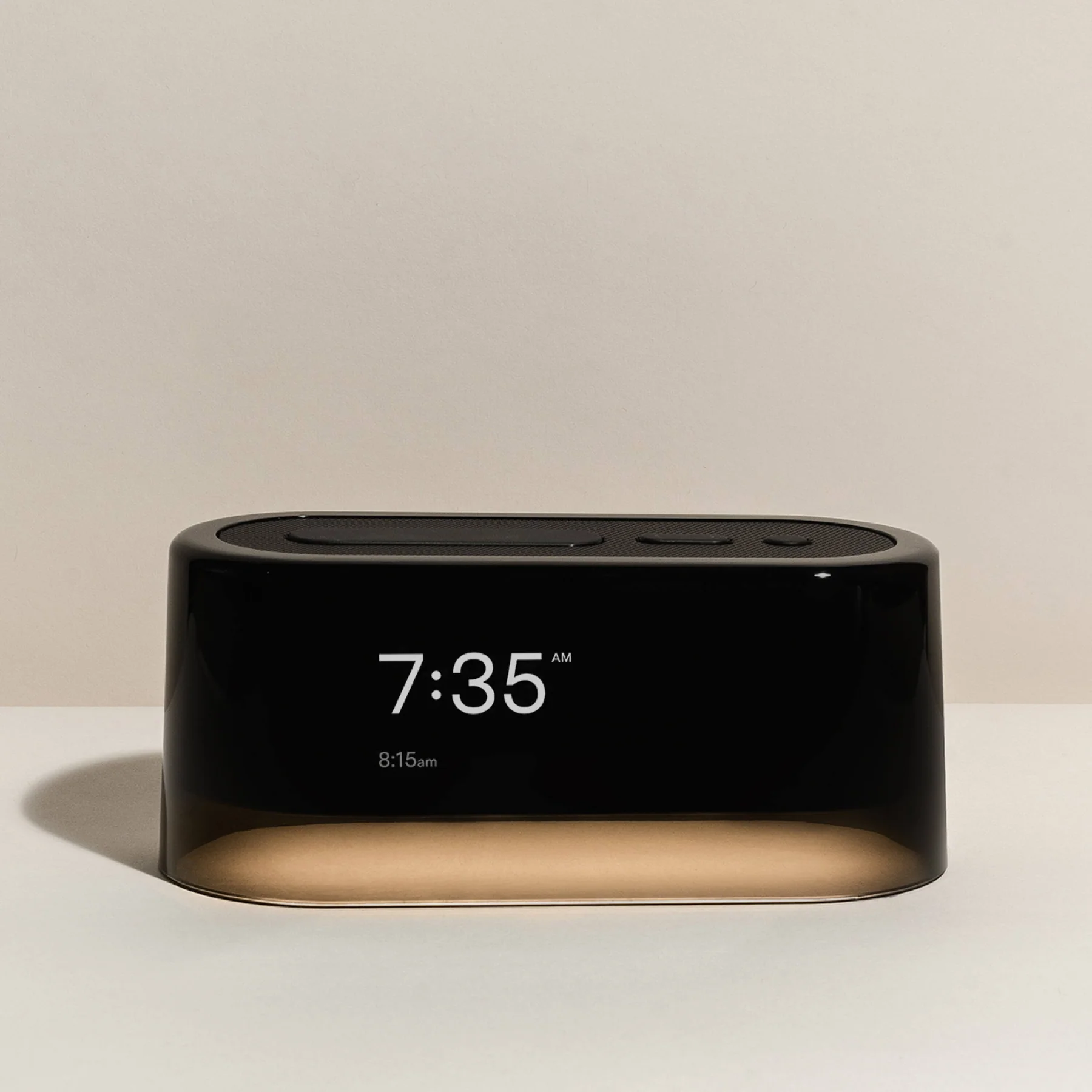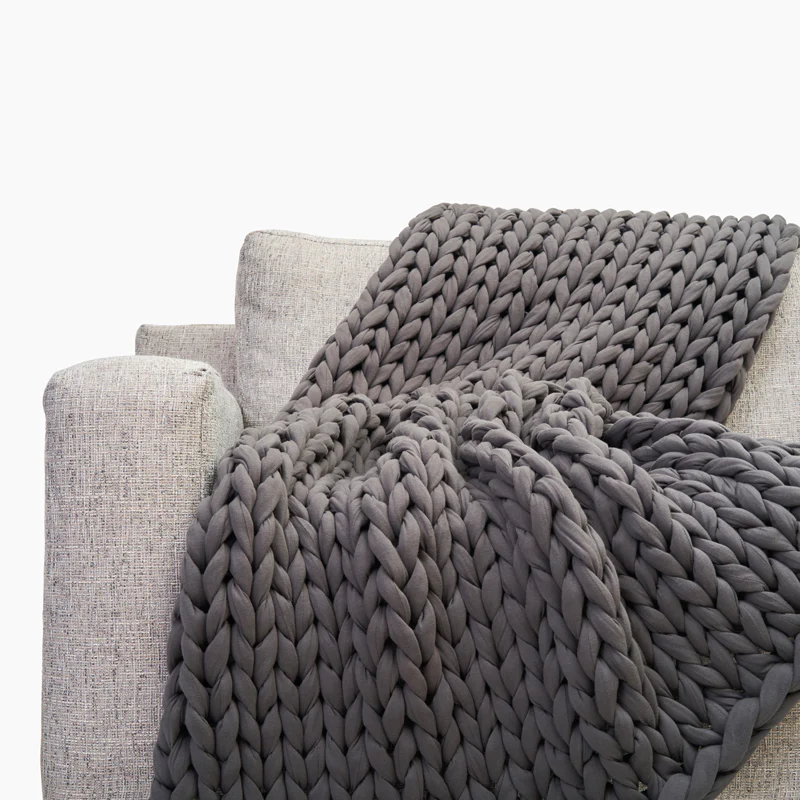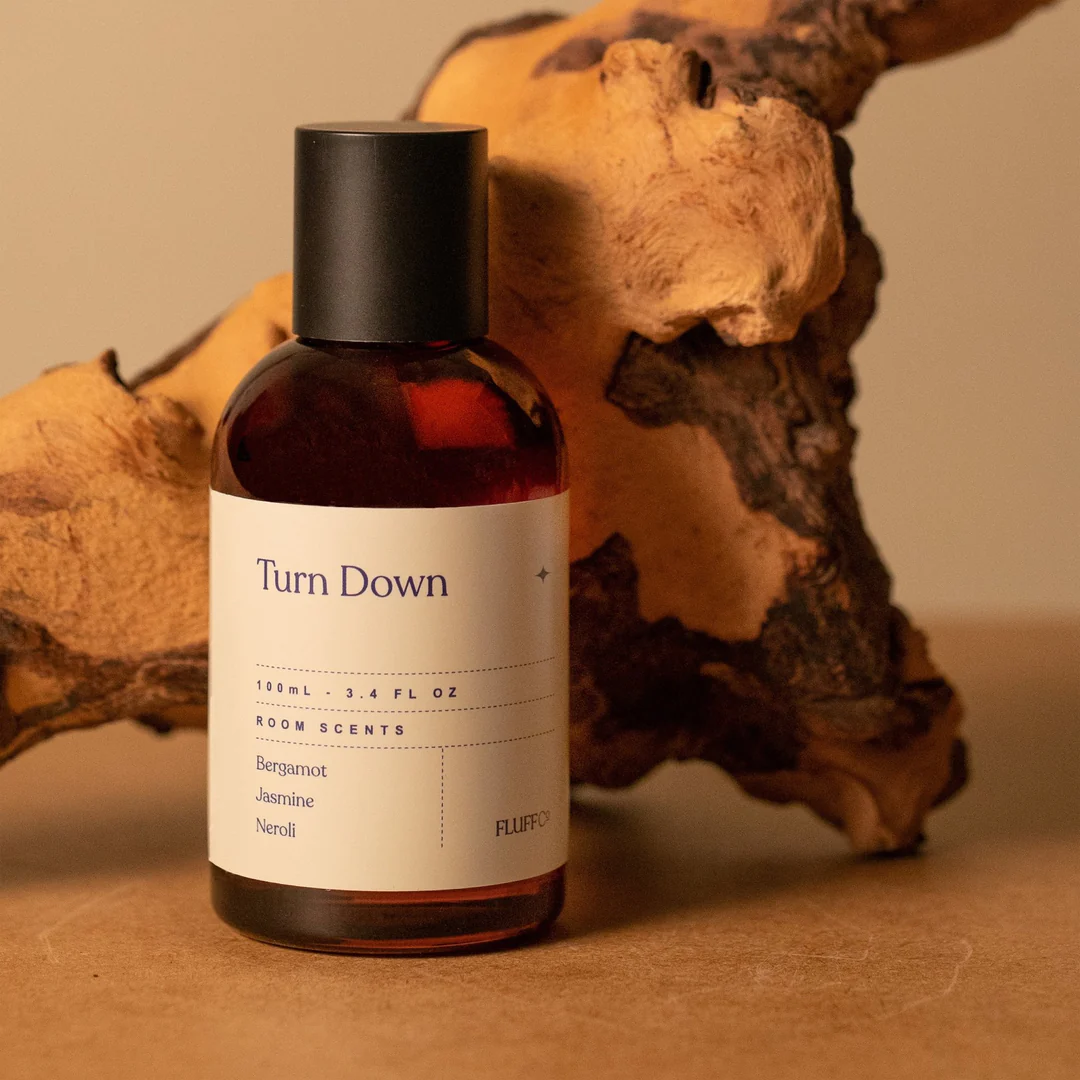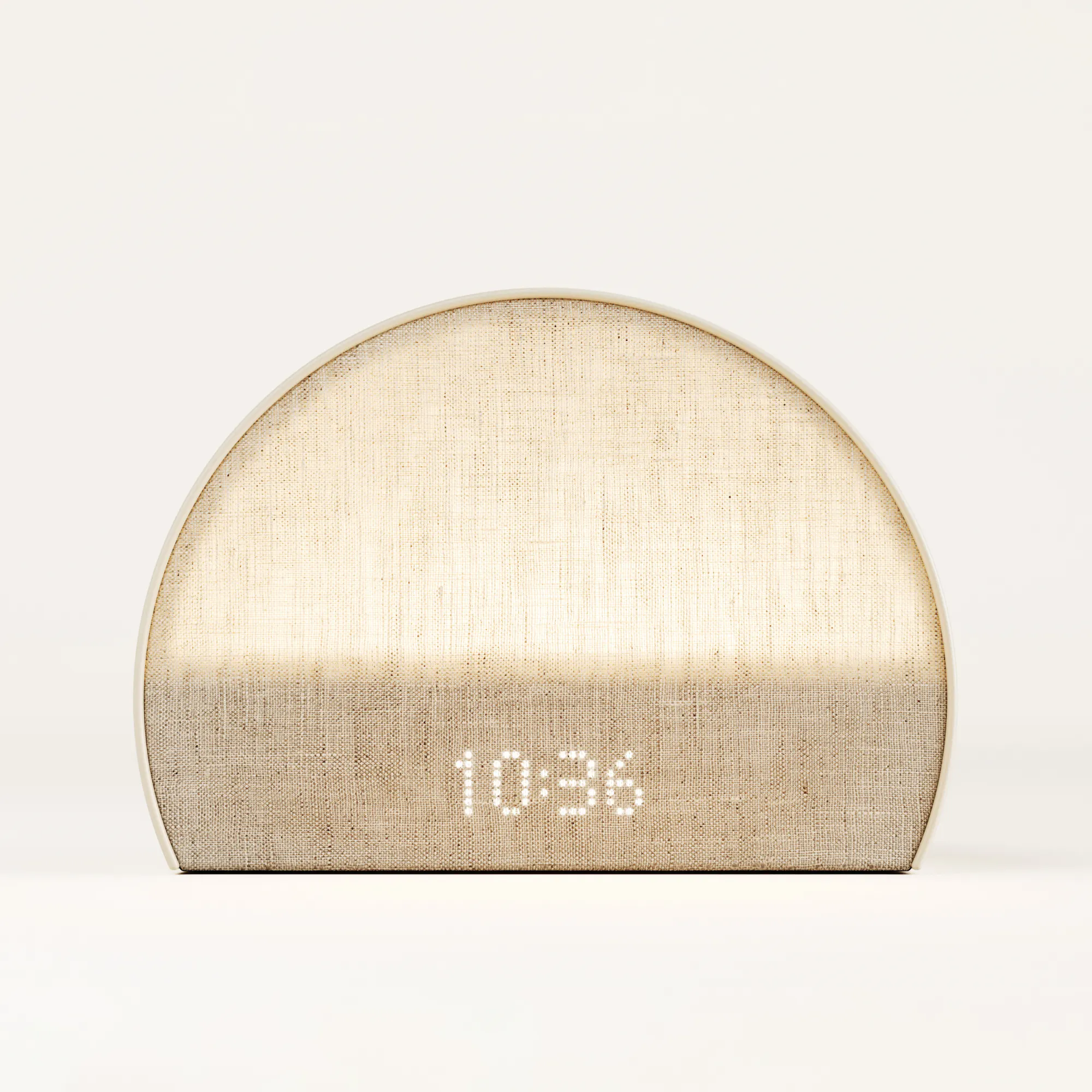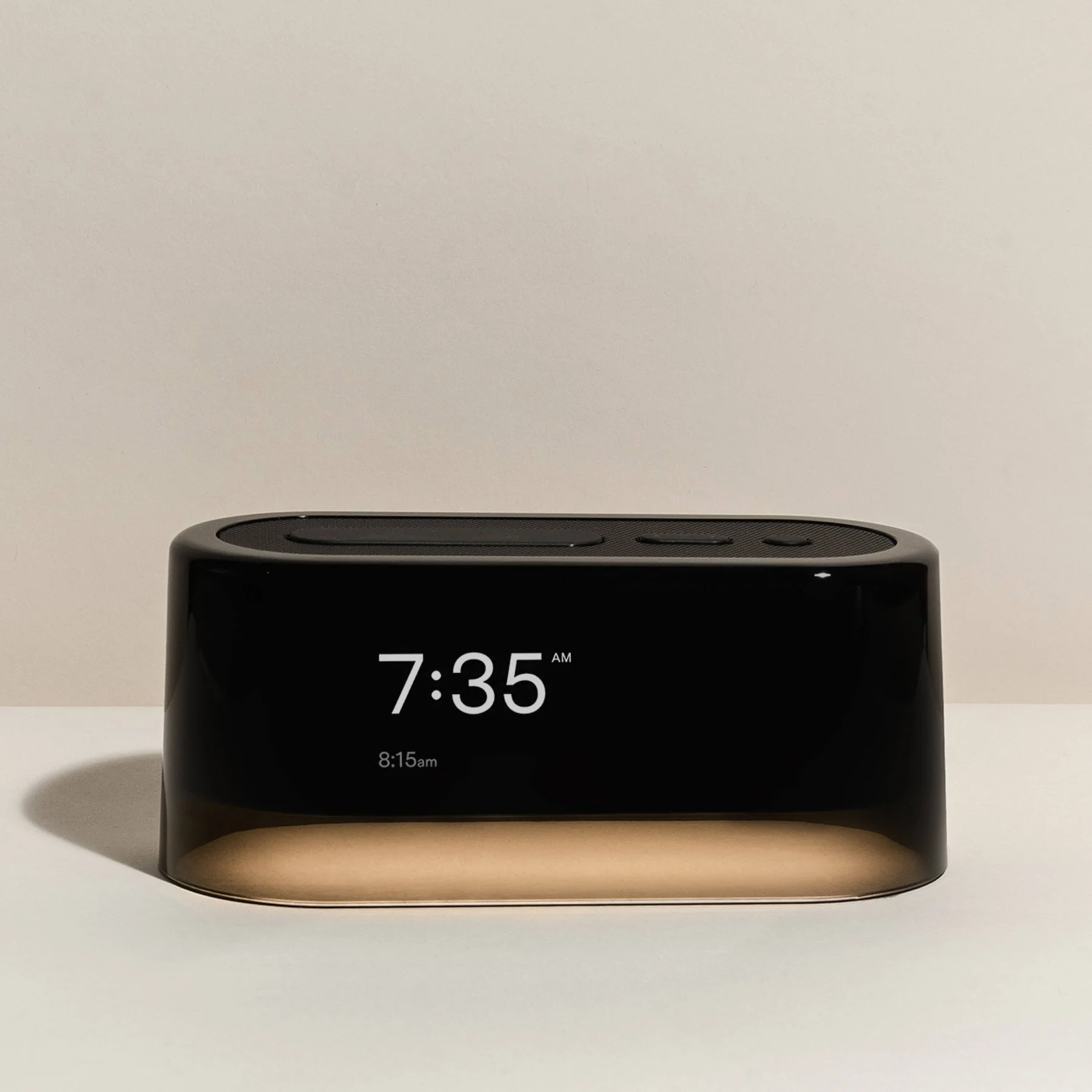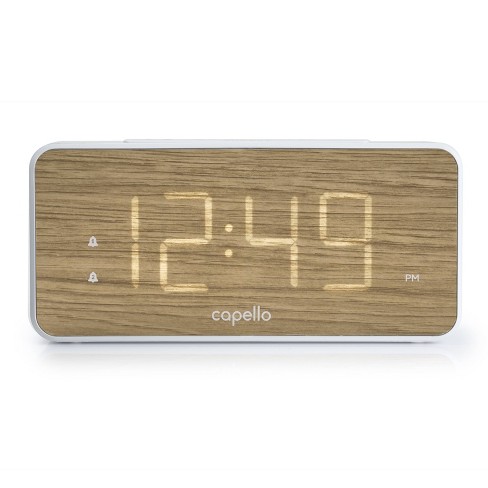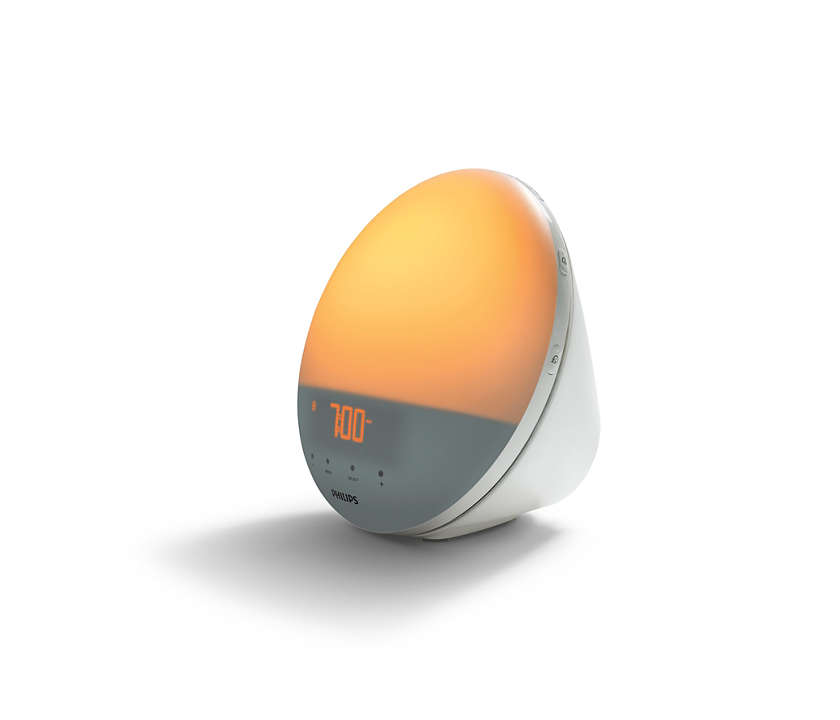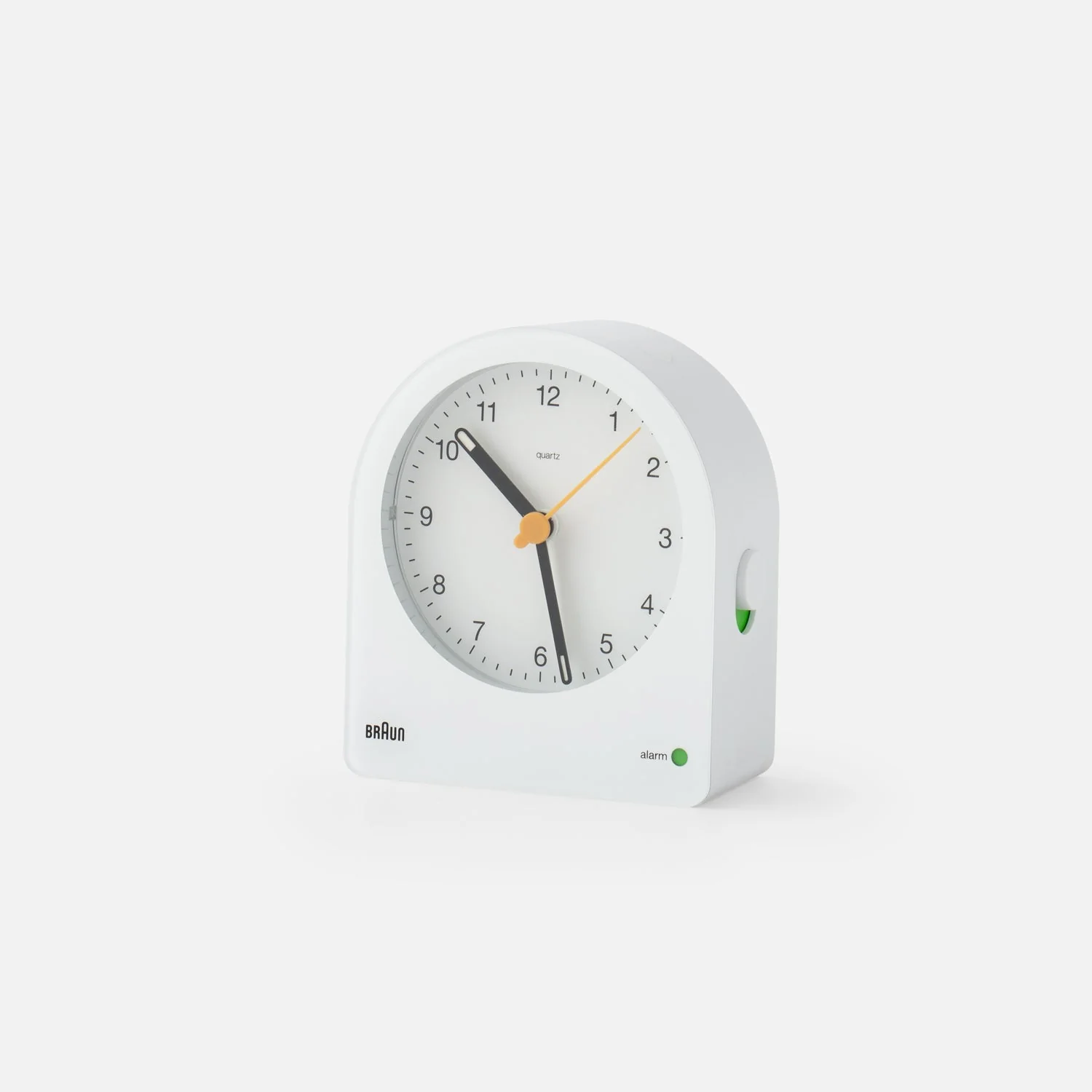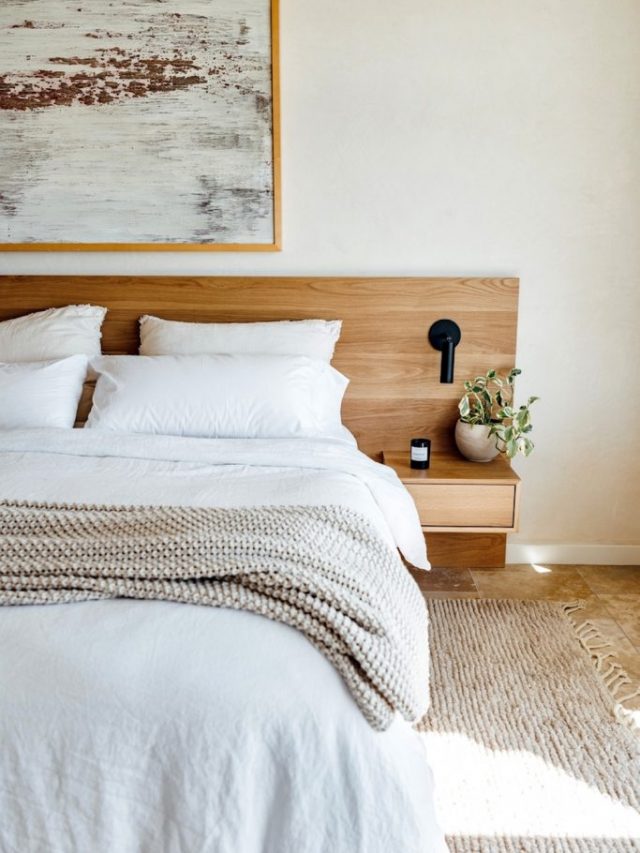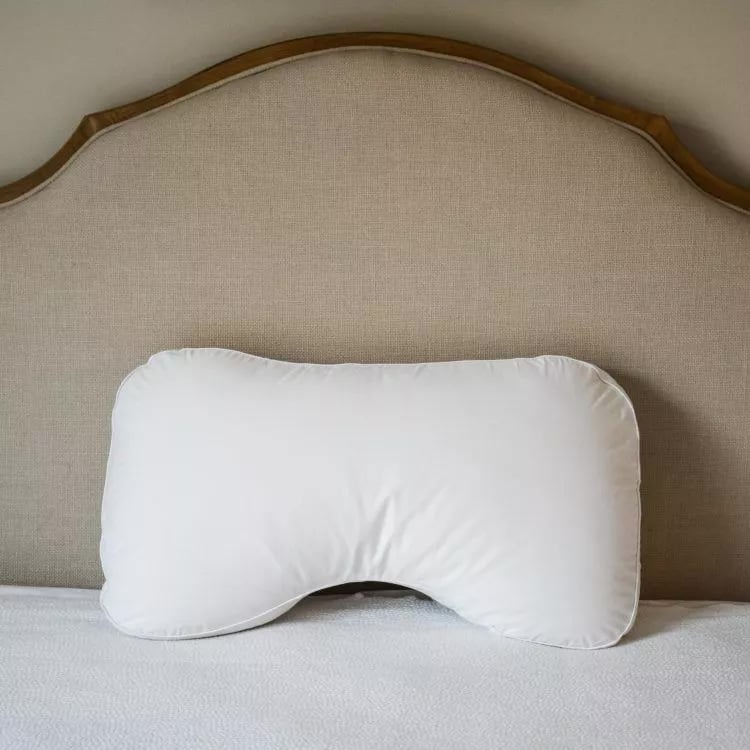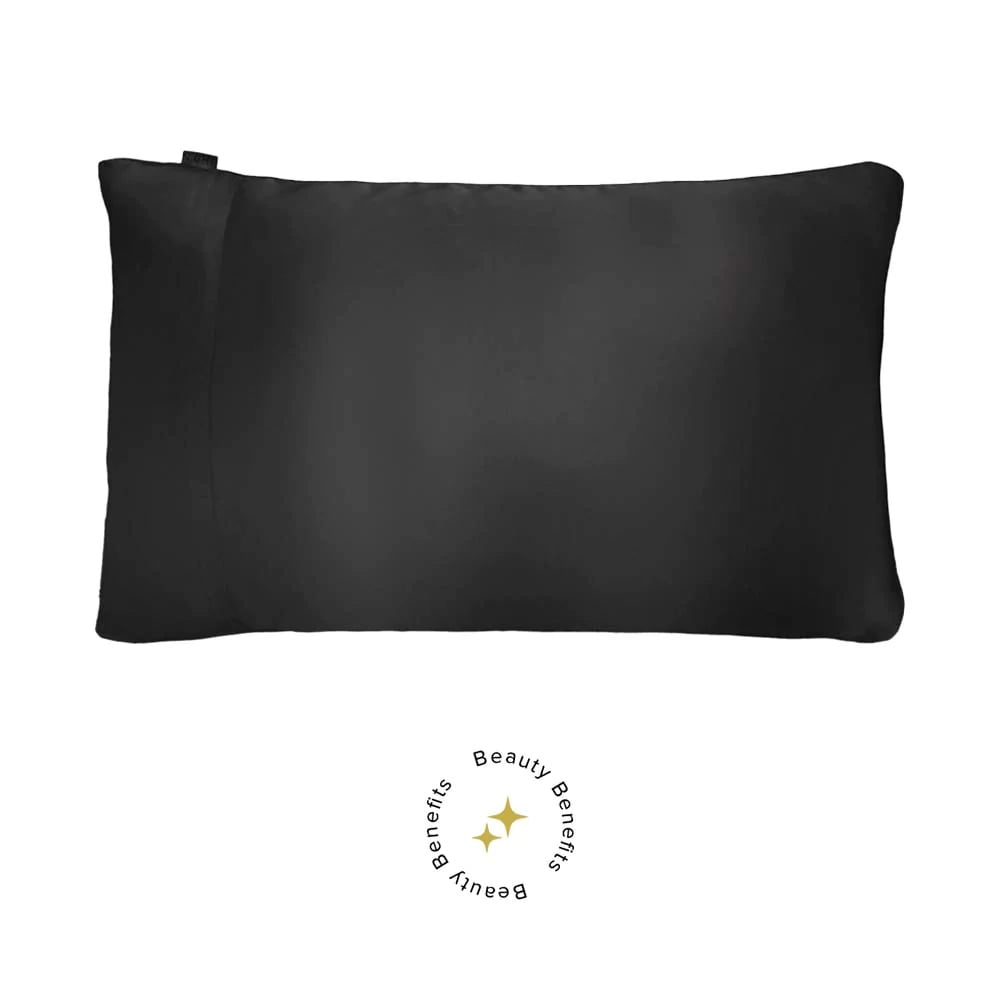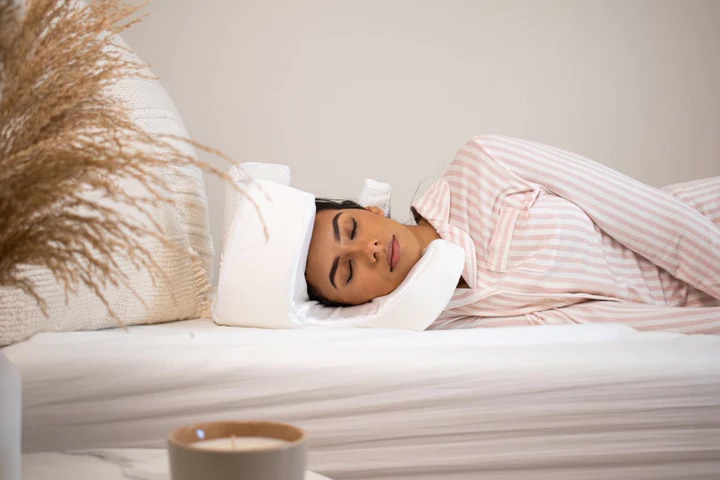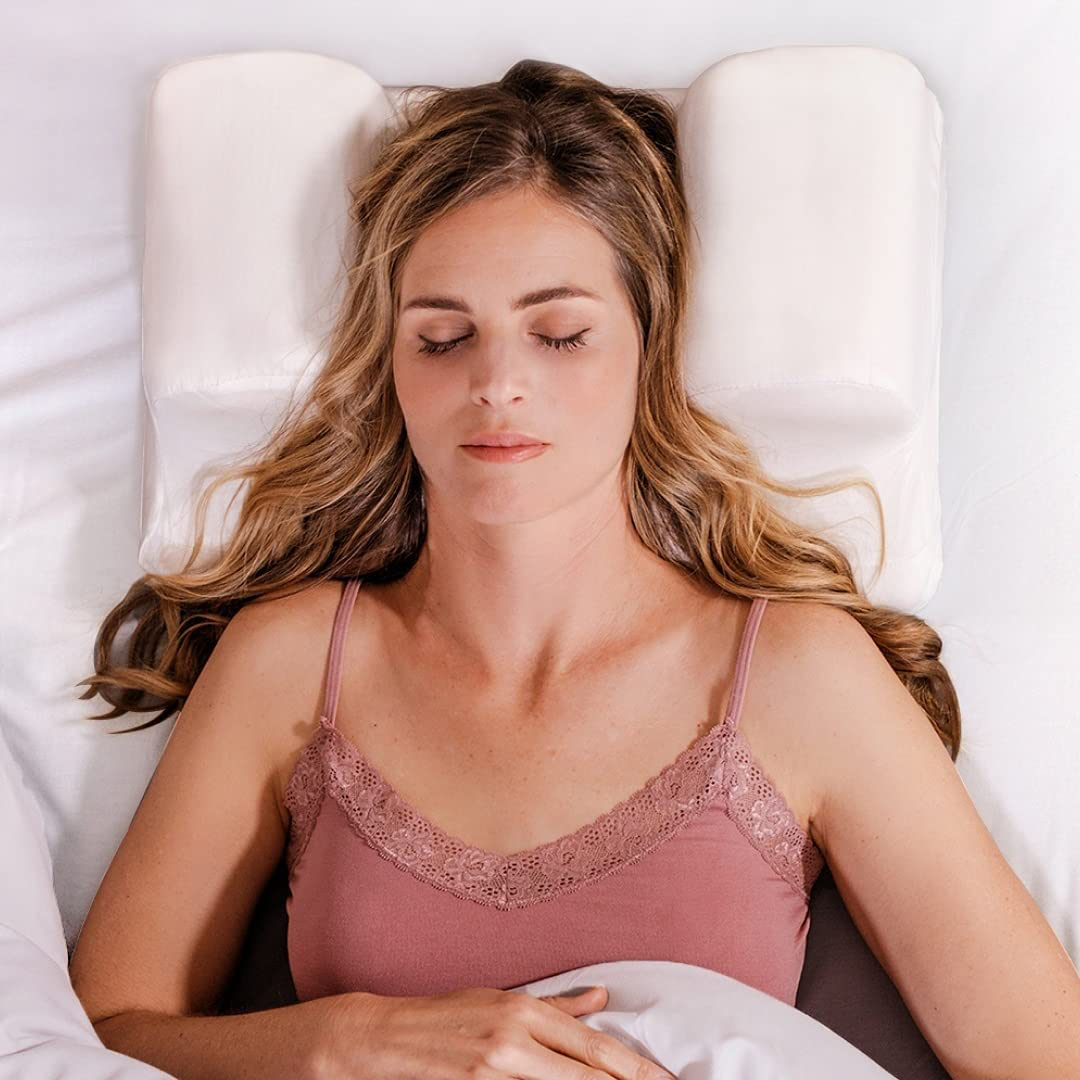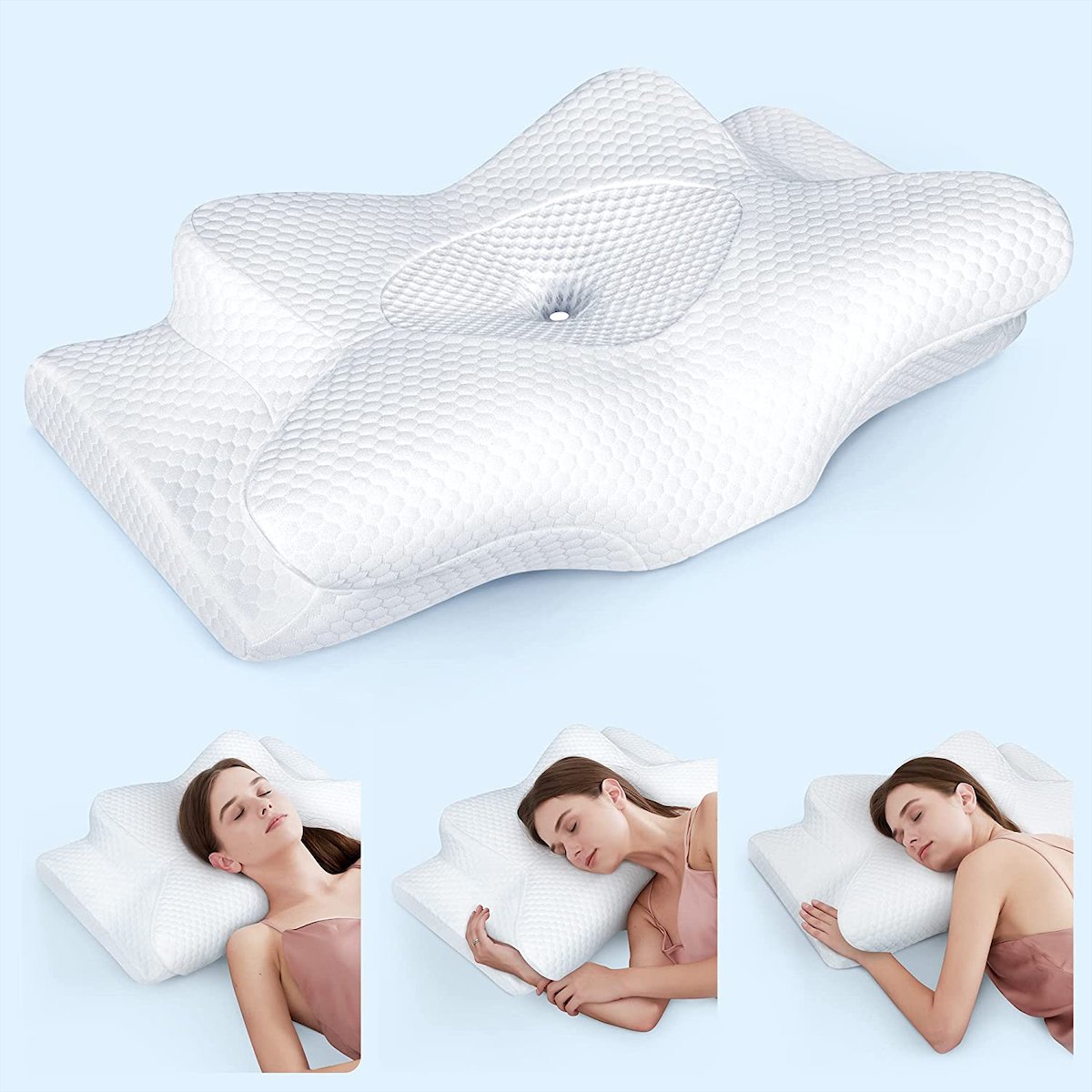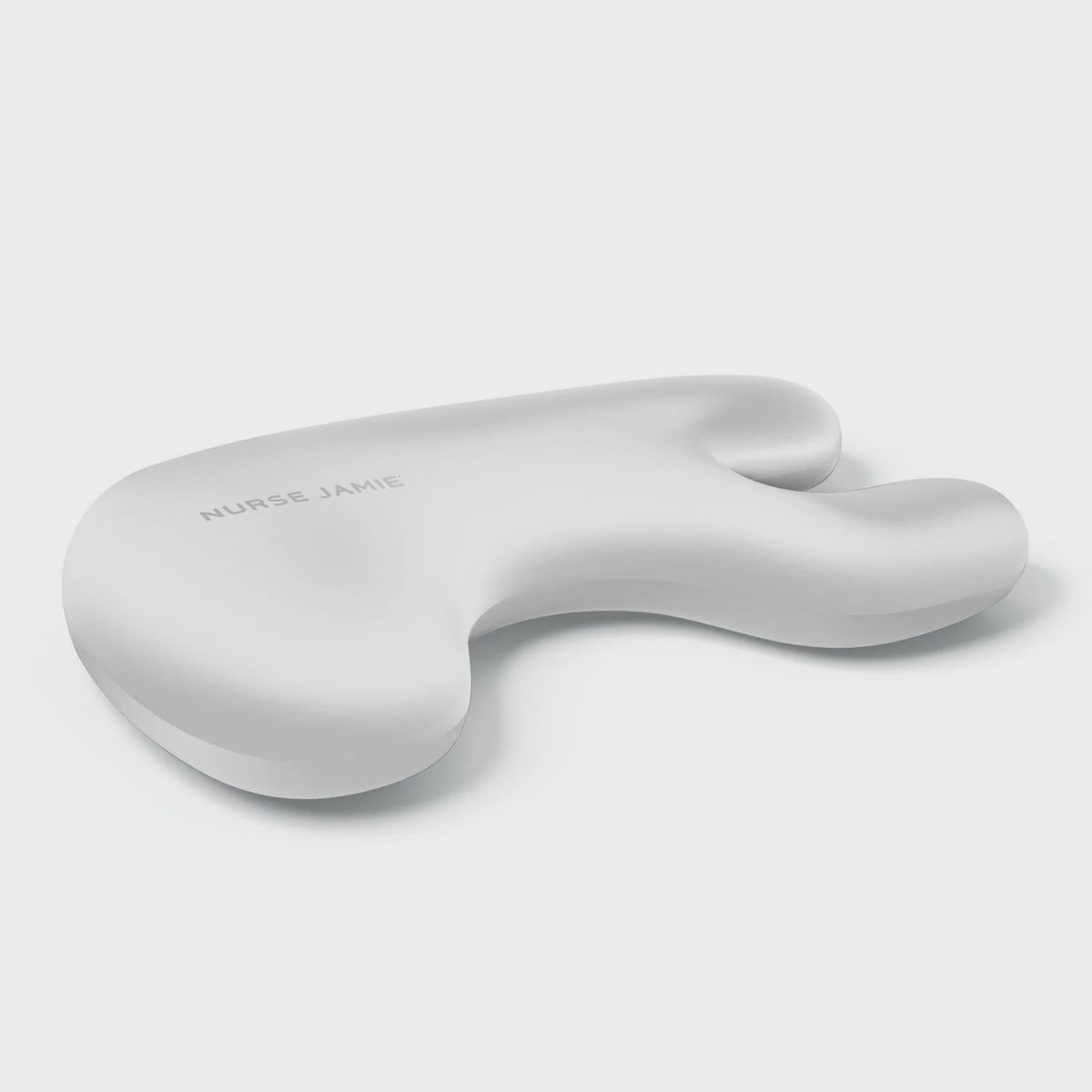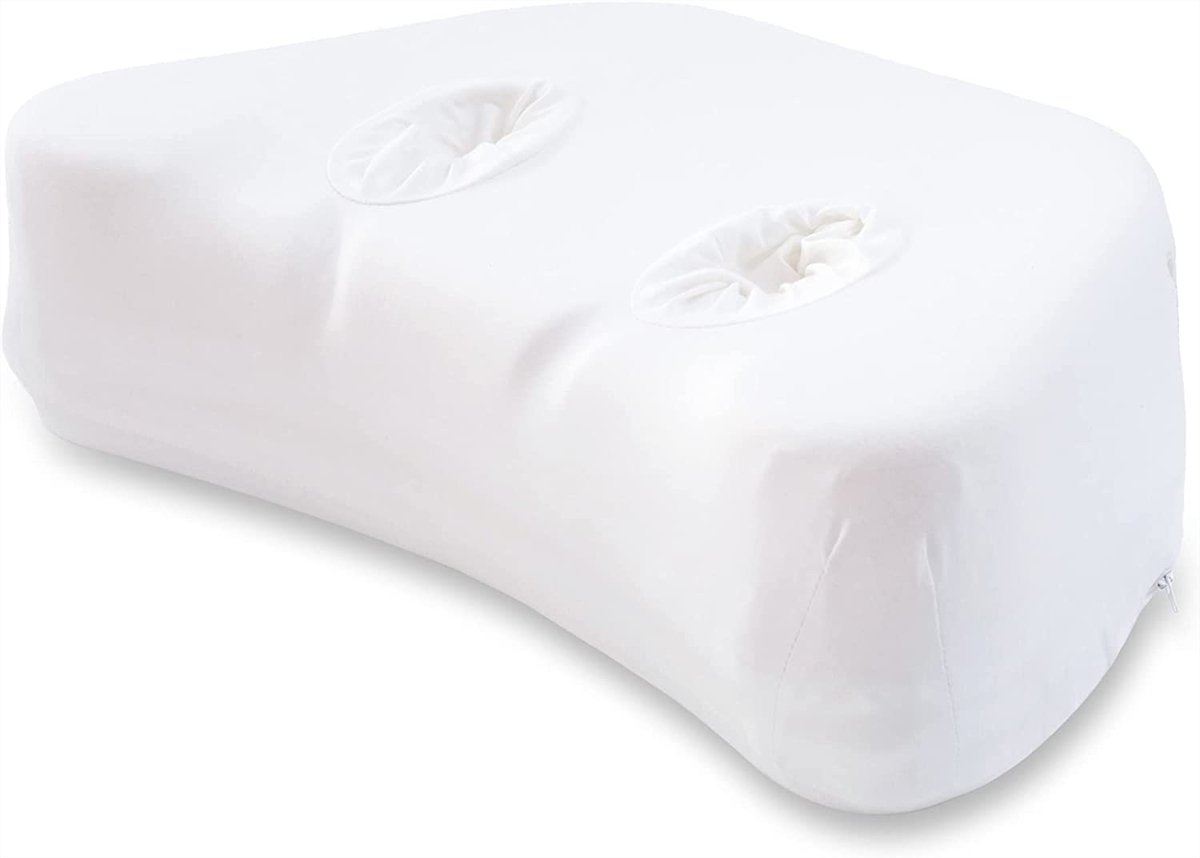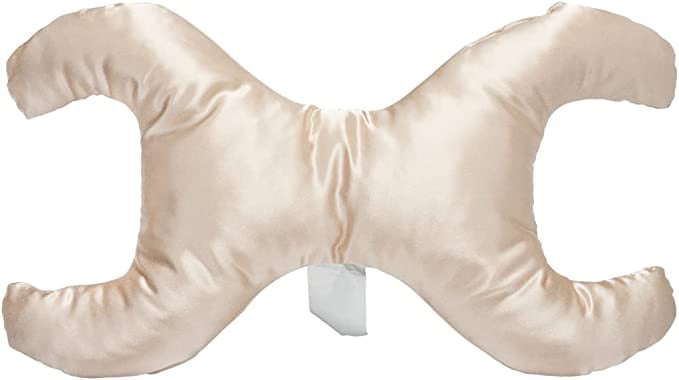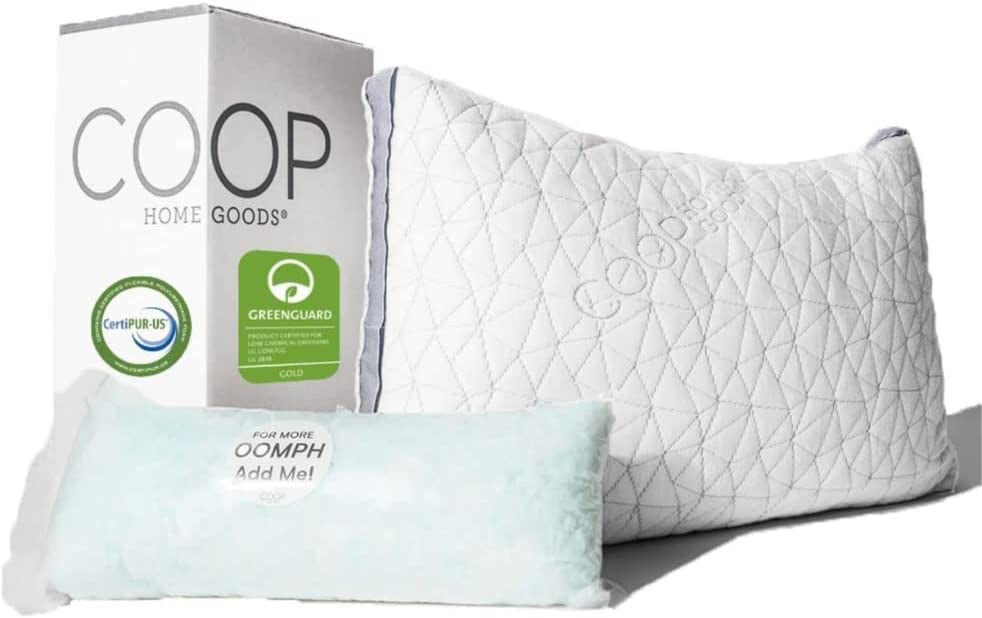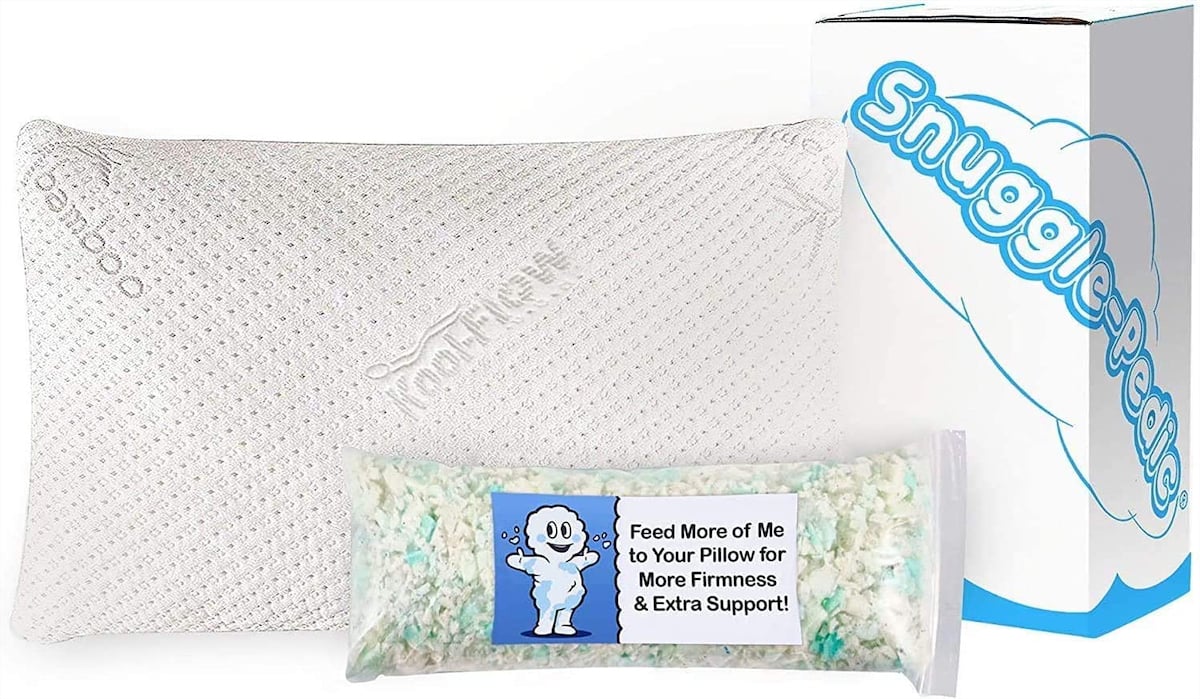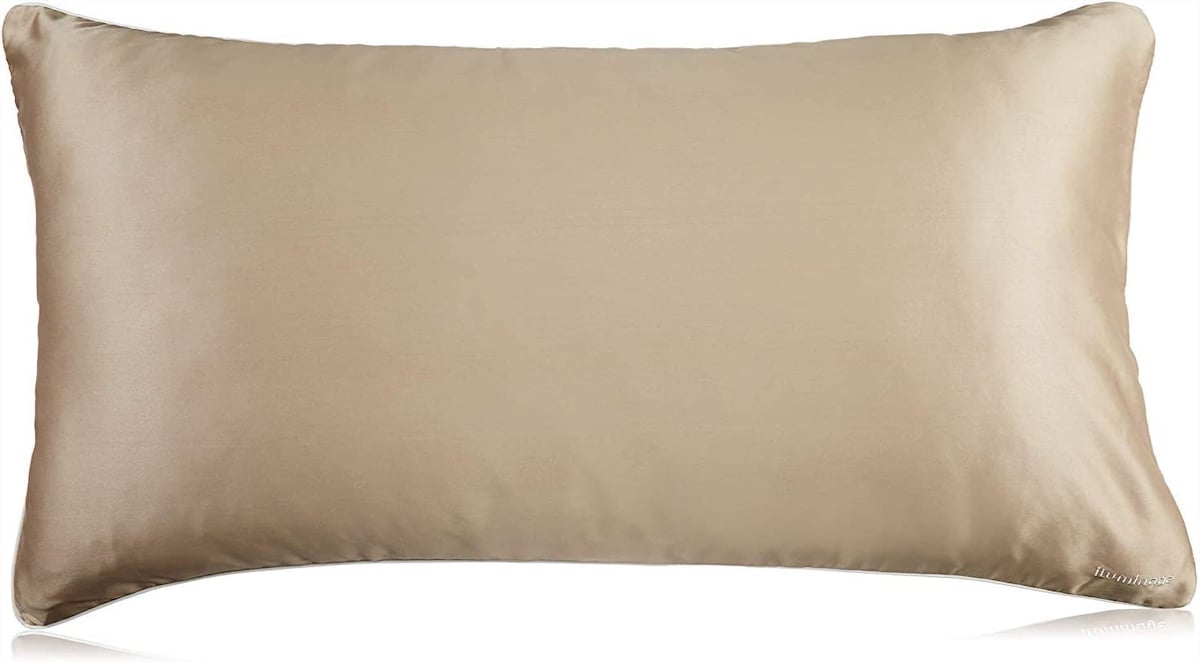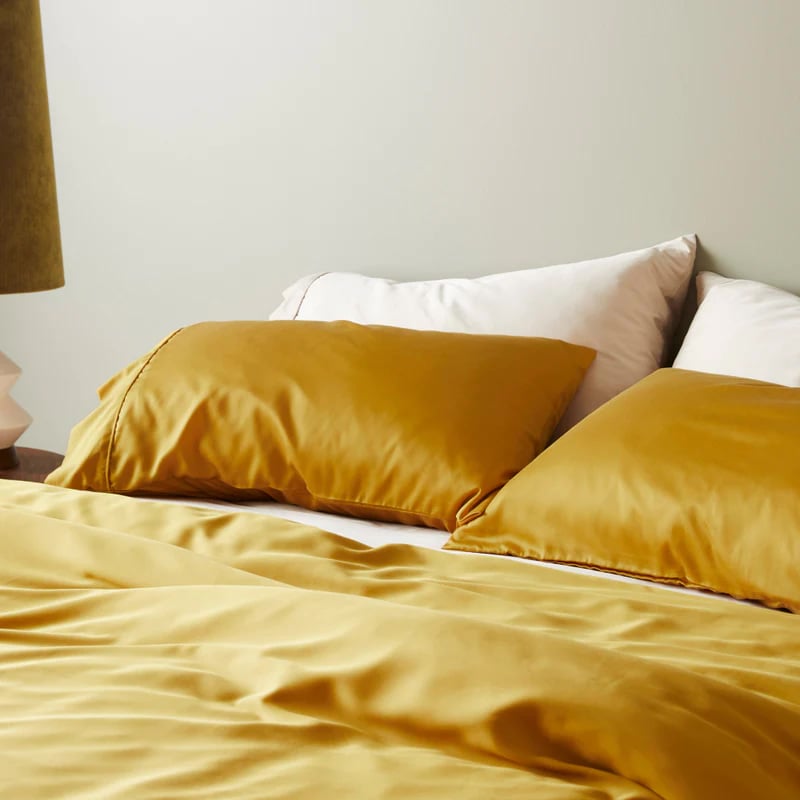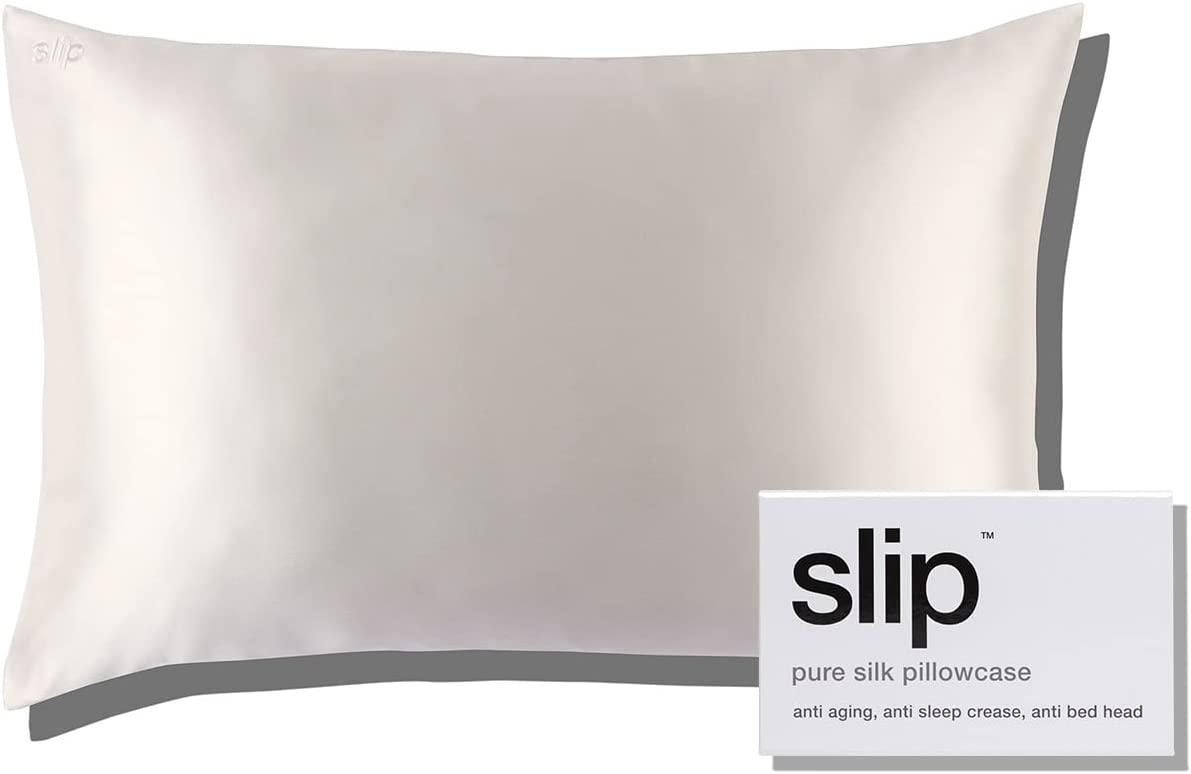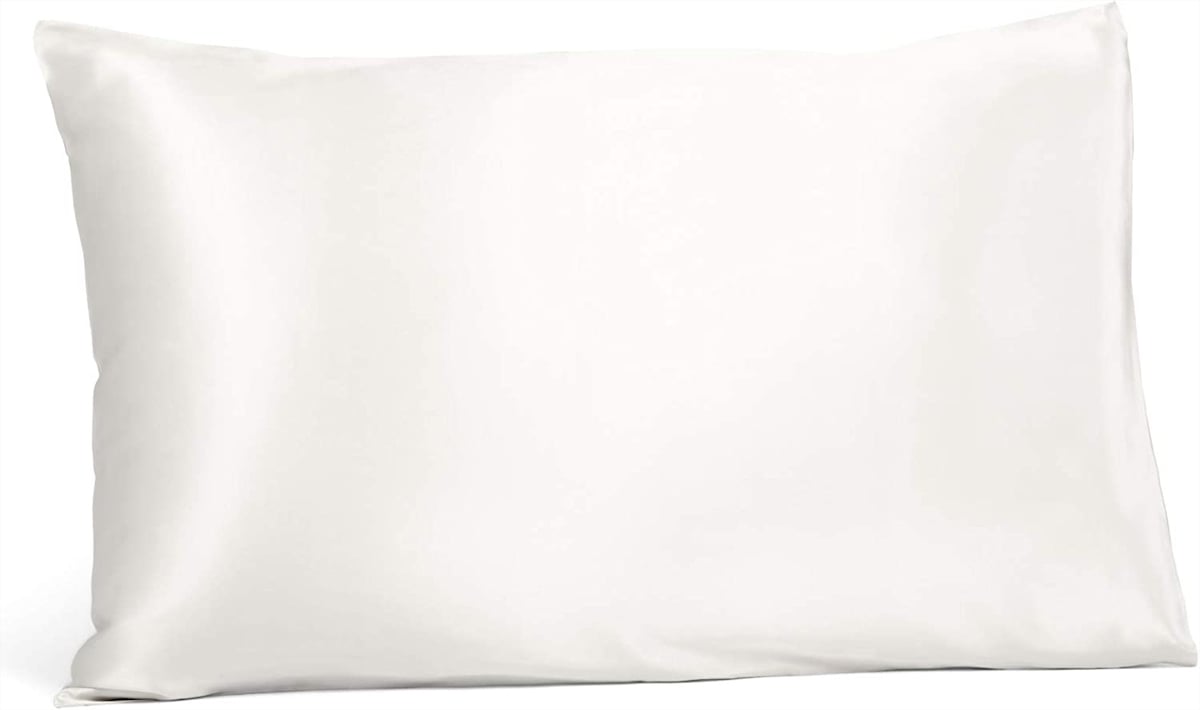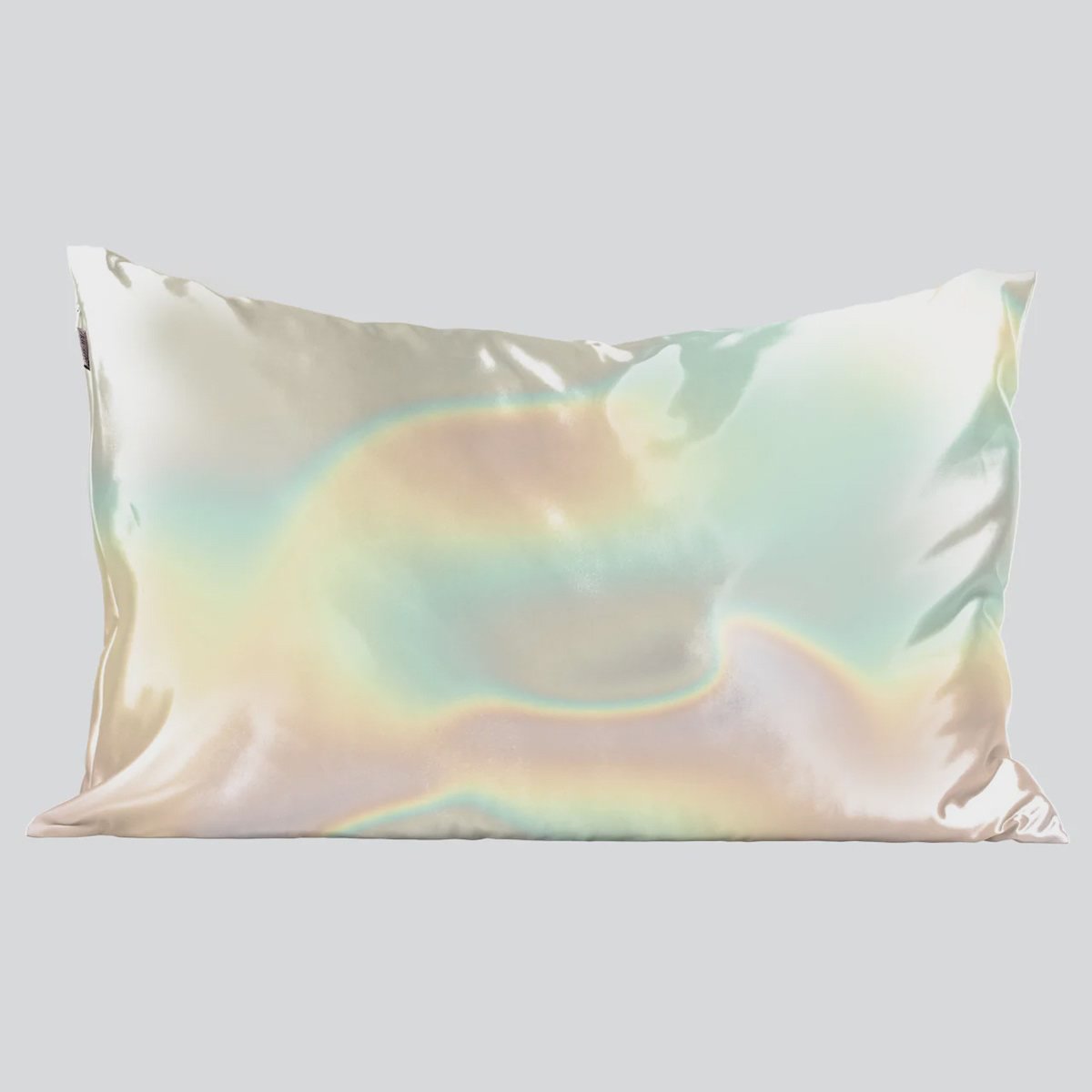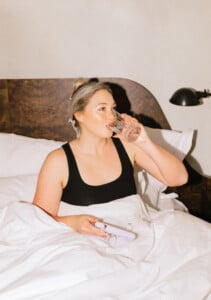
Say goodbye to sleepless nights.
The post The Secret to a Good Night’s Sleep? We Asked the Experts appeared first on Camille Styles.
]]>
Even before Arianna Huffington convinced the world that sleep was cool, we’ve long obsessed over improving our snooze. From falling asleep faster to resetting our circadian rhythms to getting to the bottom of why we’re so dang tired all the time—learning how to sleep better is a journey all of us at Camille Styles find ourselves on.
I write “journey” because here’s the truth: some mornings, you’ll wake up feeling refreshed and ready to go. Others? You’ll wonder if eight restorative hours is a pipe dream at best. Knowing how to sleep better is a key wellness essential, but there are plenty of rest disruptors beyond your control. So don’t stress about getting a perfect night’s sleep—there’s no such world. Instead, arm yourself with the science-backed info that makes waking up with new energy and inspiration a reality, and our insomnia-riddled nights a thing of the past.
Featured image from our interview with Iskra Lawrence by Michelle Nash.
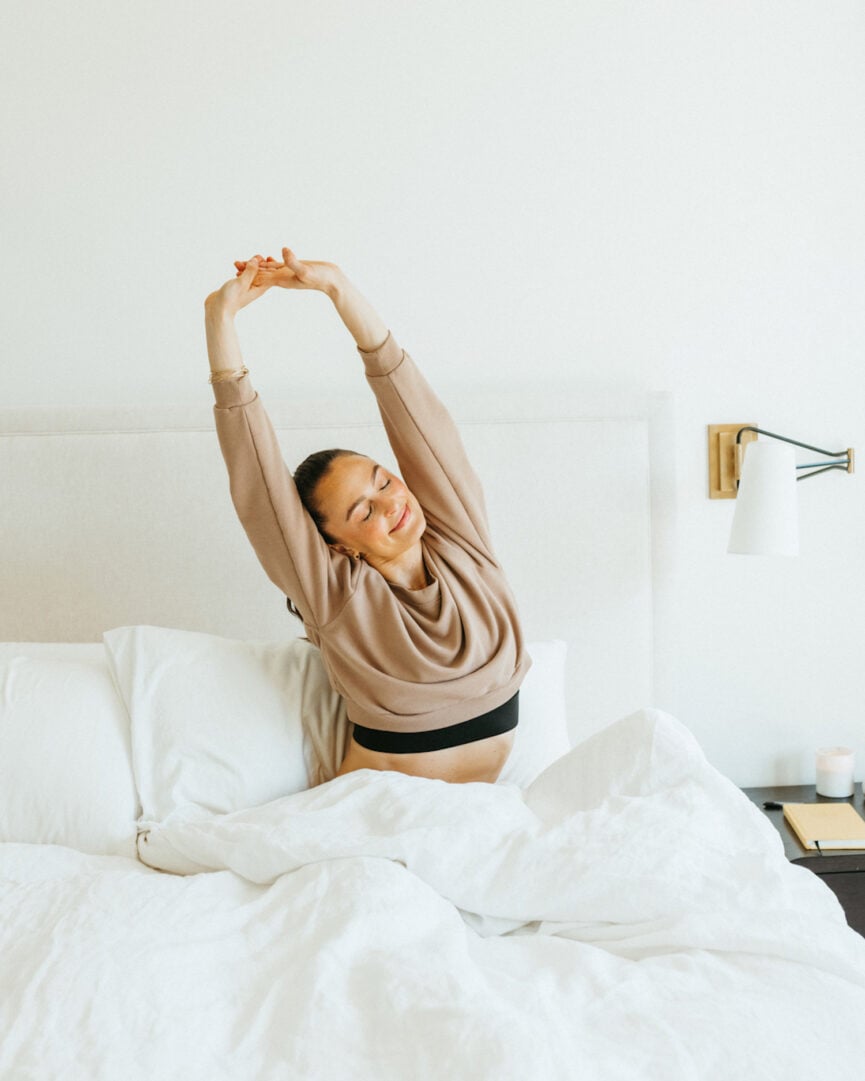
How to Sleep Better: A Step-by-Step Guide
To set you up for sleepy success, I spoke with Preeti Chahal, Certified Wellness Coach – PharmD of Equilibria. Ahead, Preeti and I discuss all the pillars of a good night’s sleep. Learn how to design the calming haven of your dreams, ideas for keeping stress at bay, and more. Plus, scroll to the end for sleep products that help you double down on rest.
Signs and Symptoms You Need to Improve Your Sleep
A great place to start. Because really: even though everyone’s talking about getting more/better sleep, it’s very well possible that you’re already doing exactly that. But if you suspect your zzz’s could use a little TLC, Preeti shares common signs of poor sleep:
- Taking more than 30 minutes to fall asleep at night.
- Regularly waking up more than once per night.
- Feeling tired and having difficulty concentrating during the day (causing you to reach for more caffeine).
- Physical signs like skin breakouts, puffy eyes, or dark circles.
- Feelings of hunger especially for junk food and unintended weight gain.
- Feeling more stressed, emotionally exhausted, angry, or irritable.
Tips for Promoting Restful Sleep Throughout the Day
PSA: It’s not only your nighttime habits that impact your sleep. We can incorporate certain sleep-promoting habits during the day that make it easier to wind down before bed. Preeti’s top daytime sleep practices include:
Get sunlight in the morning. Even just 15-30 minutes outside in the sun can help you wake up and reset your circadian rhythm. As we’ve shared on the topic previously, everything from artificial light to stress to jet lag can compromise your sleep quality. Getting a little morning sun is an easy and enjoyable way to combat this.
Limit caffeine and alcohol. “Both of these substances can stay in your system for some time and disrupt your sleep quality,” Preeti notes. We aim to cut caffeine off by the early afternoon and try to keep alcohol to weekends or special occasions. Preeti recommends avoiding alcohol within three hours of your bedtime and caffeine within five hours.
Wake up and go to bed at the same time. Every day—that means weekends, too! “Following a consistent sleep schedule trains your brain to recognize when it’s time to sleep and when it’s time to wake,” says Preeti. So if you’re tempted to take Saturday or Sunday to sleep in, it’ll be better for your body and mind in the long run if you get an early start.
Ditch the tech at least 30 minutes before bedtime. Turn off the television, power down your computer, and put your phone down. Screens and devices “emit bright blue light that your brain perceives as sunlight, tricking it into putting off sleep and staying awake longer than you’d like,” says Preeti. Consider taking the TV out of the bedroom and charging your devices downstairs (turned off). The more physical distance you put between yourself and your tech, the less tempting it is.
Stress and Sleep: How to Keep It Under Control
It’s no secret that stress can be one of the primary things keeping us up. Between deadlines, kids’ schedules, and the general busyness of our weeks, stress can easily disrupt our snooze schedule. Thankfully, as Preeti cites, there are healthy habits we can practice to keep it from interfering with our sleep.
Take a warm shower or bath. I used to be a morning shower person—and then I discovered truly how relaxing it can be to take a warm one at night. If you go the bath route, try a magnesium bath soak that’ll encourage muscle and mental relaxation. According to Preeti, a warm shower or bath “may help you relax, destress, and lower your body temperature, allowing you to fall asleep faster.”
Keep a journal. Journaling is a go-to for calming our minds and getting aligned at the start and end of each day. Preeti enjoys it as a “brain dump,” which keeps racing thoughts at bay. If you’ve ever felt restless and anxious when your head hits the pillow, it’s time to start journaling.
Get moving. Where sleep and stress are concerned, exercise is the perfect two-fer. It’s known to promote mindfulness and relaxation, relieving stress. Movement can also help you fall asleep faster and feel more energized throughout the day. Walking, yoga, Pilates—anything and everything counts.
Try a guided meditation. Another way to reduce stress and improve sleep? Meditation. Even a few minutes can help you connect with your breath and slow your thoughts. Apps like Headspace, Calm, or Activations are all excellent places to start.
How to Beat Insomnia Naturally
While Preeti notes that there is no single central cause of insomnia, “research suggests that people with insomnia have psychological arousal at unwanted times that interfere with sleep.” What can this look like? Everything from increased heart rate and body temperature to hormone fluctuations (increased cortisol, specifically).
Preeti suggests focusing on optimized sleep hygiene, which includes:
- maintaining healthy lifestyle habits
- avoiding daytime naps
- limiting screentime
- keeping a consistent sleep schedule
Tips for Creating a Restful Sleep Environment
Don’t overlook the importance of a supportive sleep environment. You’ve heard it before: the bedroom is for sleep and sex. For restorative sleep, power down the tech and follow Preeti’s tips.
Cool down. Cooler temperatures between 65-68 degrees Fahrenheit are ideal. “Our body temperature naturally drops at night, so this will help signal the body to get ready for sleep,” Preeti explains.
Diffuse essential oils. Lavender is perfect for creating a calming sleep environment.
Block out light. Black-out curtains and/or an eye mask keep light from disrupting your sleep.
Drown out noise. Earplugs or a white noise machine should get the job done.
The Best Products for Restorative Sleep
Quince
European Linen Room Darkening Curtain
If you live in a city, you know just how necessary blackout curtains can be. Block out street lights, your neighbors, and even the moon on a super bright occasion. And while some blackout curtains look purely functional, these tie your calming, wabi-sabi aesthetic together perfectly.
Fleur Marché
Night Party Daily Wellness Gummy
As I say to anyone who asks me about Fleur Marché—come for the viral wellness patches, stay for these beyond-effective sleep gummies (and come back again for these cute socks). Not only do these gummies quickly whisk you off to sleep, but they help you experience a deeper, quality snooze. Ingredients like valerian root, ashwagandha, and passionflower regulate your nervous system and calm anxiety for the best sleep of your life.
Revolve
I only recently purchased this sleep mask, and after that first night of blissful sleep, I asked: what took me so long? The luxurious, silky texture provides a cloud-like weight over your eyes, gently coaxing you toward a restful night well slept.
Alo
Unwind and drift into deeper sleep with this fast-absorbing magnesium mist, designed to relax muscles and calm the mind before bed. Infused with aloe and seaweed extracts, it soothes the skin while delivering magnesium’s restorative benefits.
Moon Juice
It’s game over for all other magnesium powders now that Moon Juice has entered the chat. Formulated with three forms of magnesium plus L-theanine, it not only promotes sleep but also boosts brain health and supports regular bowel movements. I love sipping on this an hour or so before bed.
Papier
Drift into restful nights with this sleep journal, designed to help you unwind and reflect before bed. With thoughtful prompts and questions, it’s the perfect way to quiet your mind and create a soothing nighttime ritual.
The post The Secret to a Good Night’s Sleep? We Asked the Experts appeared first on Camille Styles.
]]>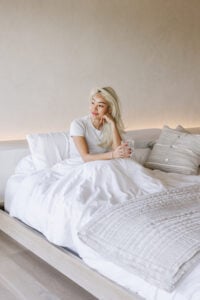
5 minutes or less to dreamland.
The post 5 Expert-Backed Tips to Fall Asleep Fast appeared first on Camille Styles.
]]>
If falling asleep faster feels like a nightly challenge, you’re not alone. Between busy schedules, screen time, and the daily stress of life, many of us struggle to get the deep, restorative sleep we need. But don’t worry—there are simple, science-backed strategies that can help you fall asleep faster and wake up feeling refreshed. To guide us on this journey, we turned to Dr. Preeti Devnani, MD, a certified sleep expert who has dedicated her career to understanding and managing sleep disorders. If anyone can teach us how to fall asleep quickly and effortlessly, it’s her.
With Dr. Devnani’s expert insights, we’ve gathered actionable steps to help you create a sleep routine that works for you. Read on for tips that will transform your nights and help you feel rested, rejuvenated, and ready to take on the day ahead.
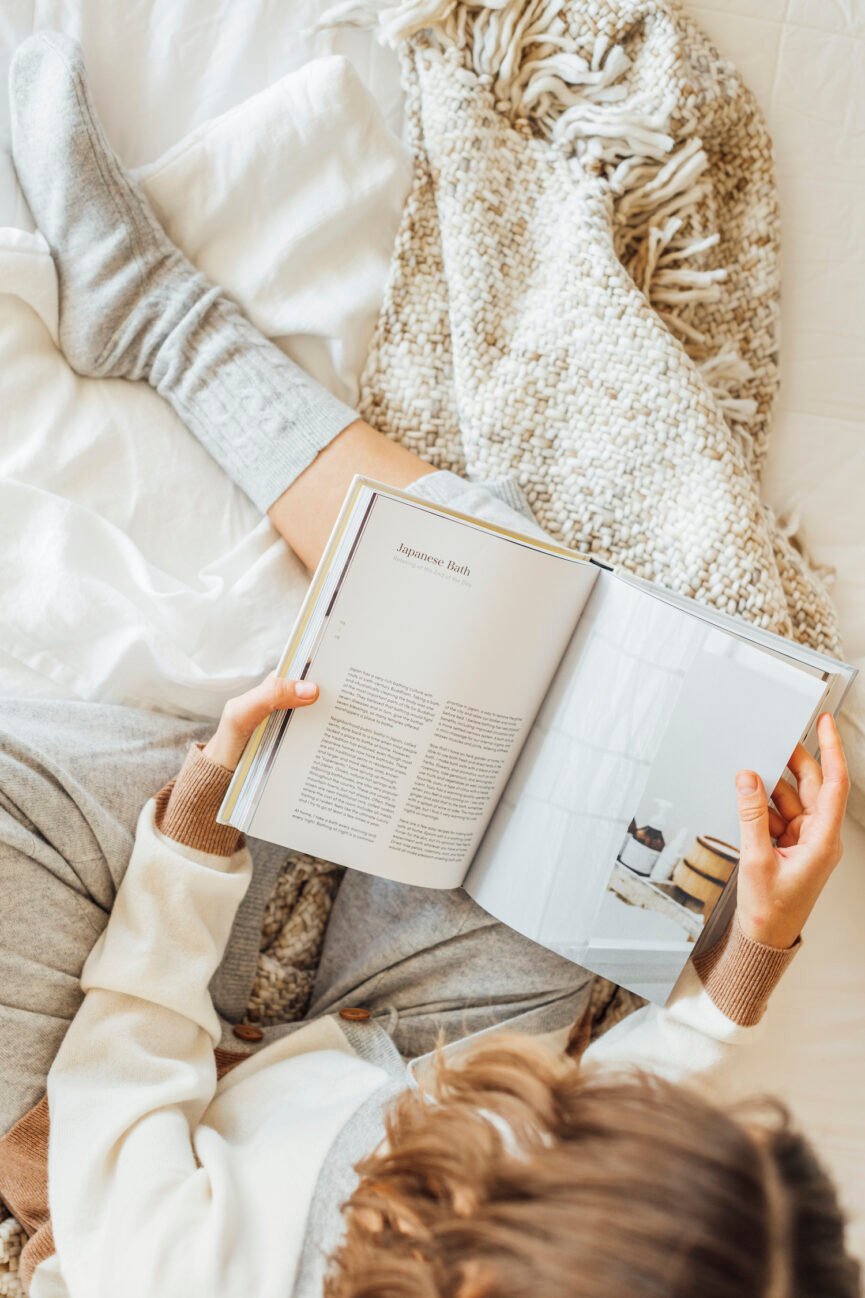

Dr. Preeti Devnani is a board-certified neurologist specializing in the diagnosis and treatment of sleep disorders. Devnani practices at the Cleveland Clinic, where she is recognized for her commitment to exceptional patient care and her collaborative approach to treatment.
Common Factors That Make it Difficult to Fall Asleep
In our fast-paced, 24-hour society, many of us aren’t prioritizing sleep the way we should. Between the demands of modern life and the constant distractions, it’s easy to see why falling asleep faster can feel like an impossible task. Some common factors contributing to poor sleep include:
- Prolonged work hours
- High-pressure corporate jobs
- Excessive use of technology
- Constant social media exposure
- Noise pollution
- Sedentary lifestyles
- Substance abuse
- Global travel across time zones
The impact of sleep insufficiency is far-reaching. It can lead to chronic health conditions like hypertension, diabetes, depression, and obesity, as well as increase the risk of more serious issues like cancer, reduced life expectancy, and lower overall productivity.
3 Sleep-Saving Tips an MD Wants You to Make
If you’ve ever wished for a way to fall asleep faster and improve your sleep quality, you’re not alone. While we can’t always sleep from sunset to sunrise like our ancestors, a few small but impactful changes can make all the difference. In the modern era, we need to put intentional effort into syncing our sleep schedule to match our circadian rhythms, a shift that can dramatically enhance our health.
Research shows that neglecting this natural rhythm or delaying your sleep cycle can disrupt metabolic functions and wreak havoc on your body. Here are a few expert tips that could help you finally fall asleep faster and wake up feeling refreshed.
Turn Down the Temp
A cool environment is crucial for falling asleep faster—a mild drop in body temperature is one of the body’s natural cues to wind down for the night. A cool room, close to 65 degrees, is optimum for sleep. Body temperature tends to drop as you become drowsy and reaches its lowest level around 5:00 a.m., then climbs slightly as the day progresses.
If the environment is too hot, it may interfere with your body’s natural temperature dip and make you more restless through the night. Note that each individual has a slightly varied optimal temperature threshold.
Find the Mattress for You
Selecting a mattress is very personal. There isn’t a lot of scientific evidence to prove that one type of mattress will help you sleep better than another, but people with certain medical conditions do seem to rest easier on particular mattress styles.
Anyone with back or neck pain should take a “Goldilocks” approach to mattress buying: not too hard, and not too soft. Mattresses that are too soft tend to sleep hot and can add to lower back pain, while mattresses that are too hard can put excess pressure on the sacrum, shoulders, and back of the head. If you have allergies, it’s definitely worth it to invest in a hypoallergenic mattress for better sleep.
How Diet Affects Your Sleep
Diet plays a major role in your ability to fall asleep faster. Remember those childhood bedtime glasses of milk? They weren’t just a comfort—they helped increase tryptophan production, which is necessary for melatonin (the sleep hormone) production. Foods like almonds, turkey, and eggs are rich in tryptophan, which helps your body prepare for sleep.
Equally important are melatonin-rich foods like cherries, walnuts, ginger, and fresh mint, which can enhance your ability to wind down. Avoid caffeine in the afternoon and evening, as it can interfere with your sleep cycle. While alcohol may help you fall asleep faster initially, it disrupts your sleep later in the night, leaving you feeling groggy. Finally, going to bed hungry makes it harder for your body to relax and fall asleep. A light, balanced snack before bed can improve sleep quality and help you fall asleep faster.
How to Fall Asleep Fast: 5 Expert Tips
1. Limit Screen Time Before Bed
Blue light from phones, computers, and TVs can suppress melatonin production, making it harder to fall asleep. For better sleep hygiene, put away electronics at least an hour before bed, or invest in blue light-blocking glasses if you must use screens.
2. Stick to a Regular Sleep Schedule
A consistent sleep routine reinforces your body’s circadian rhythm and helps you fall asleep faster. When your bedtime and wake time are regular, your body knows when it’s time to wind down, making it easier to drift off.
3. Create a Relaxing Bedtime Routine
Stress can hinder your ability to fall asleep quickly. The key is to relax your mind before bed—try journaling, reading, or meditating to wind down. A warm bath or a cup of decaffeinated tea can also help you feel ready for sleep.
4. Reserve Your Bed for Sleep
Your bed should be associated with rest. Avoid using it for work or stressful activities, as this can interfere with your ability to fall asleep faster.
5. Morning Exercise
Working out in the morning (preferably in the sunlight) helps regulate your sleep cycle, setting the stage for quicker, deeper sleep at night. Try these morning workouts to inspire your AM routine.
Extra-Credit: How to Fall Asleep in 5 Minutes
Need to fall asleep, stat? We love incorporating all of the tips for how to fall asleep fast above, but in an emergency, there are thankfully a few ways you can calm your body and mind quickly for a good night’s sleep.
Guided visualization or meditation. According to an article written in JAMA Internal Medicine, meditations and visualizations can promote relaxation while helping you transition to sleep. Some of our favorite resources include Headspace, Calm, and Activations.
Paradoxical intention. Think of it as reverse psychology. When we’re stressed about getting enough sleep, that anxiety can make it more difficult to fall asleep. Instead, applying paradoxical intention, actively engage in the behavior. While we’ll continue to advise you to stay away from screens, try reading just one… more… chapter. Or, stay up chatting with your partner. Paradoxical intention can help reduce performance anxiety as it relates to sleep.
Count your breaths. When it comes to falling asleep quickly, we abide by the rule that simpler is often better. Case in point, counting your breaths. Simply breathe as you normally would, but pay attention to your inhales and exhales. Start by counting your exhales up to five, then when you start over, do the same with your inhales. Repeat until you fall asleep.
The post 5 Expert-Backed Tips to Fall Asleep Fast appeared first on Camille Styles.
]]>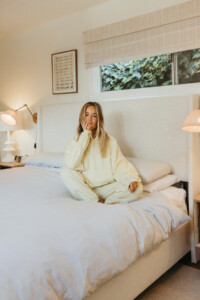
End your day with intention.
The post Winter Wellness: Nighttime Essentials for Restful Sleep appeared first on Camille Styles.
]]>
I’m grateful for my AM self. It’s thanks to her morning discipline that I consistently make it to my pilates classes or my early work calls. Before decision fatigue sets in, she ensures I take my supplements and have a protein-packed breakfast. Bonus: her outfits haven’t been stained, crinkled, victim to the 2 p.m. slump. She makes the hard choices that set me up for considered, productive days. And even though my nighttime self can be exhausted and most often found wrapped in a blanket burrito, I’m grateful to her, too, because my evening ritual—complete with winter nighttime essentials—is the thing that ensures a smooth morning ahead.
I know, I know, just thinking about a “nighttime ritual” can feel daunting. However, crafting an intentional bedtime routine can be inspiring and comforting at the same time. Dare I say, if you do it right, you’ll look forward to every nourishing step. As we collectively rediscover the art of slowing down, more of us are recognizing that our nighttime habits shape not only our beauty sleep but our entire next day. The secret lies in creating little anchors that signal to our bodies and minds it’s time to transition from the day’s rush into restorative rest.
Featured image from our interview with Mary Ralph Bradley by Michelle Nash.
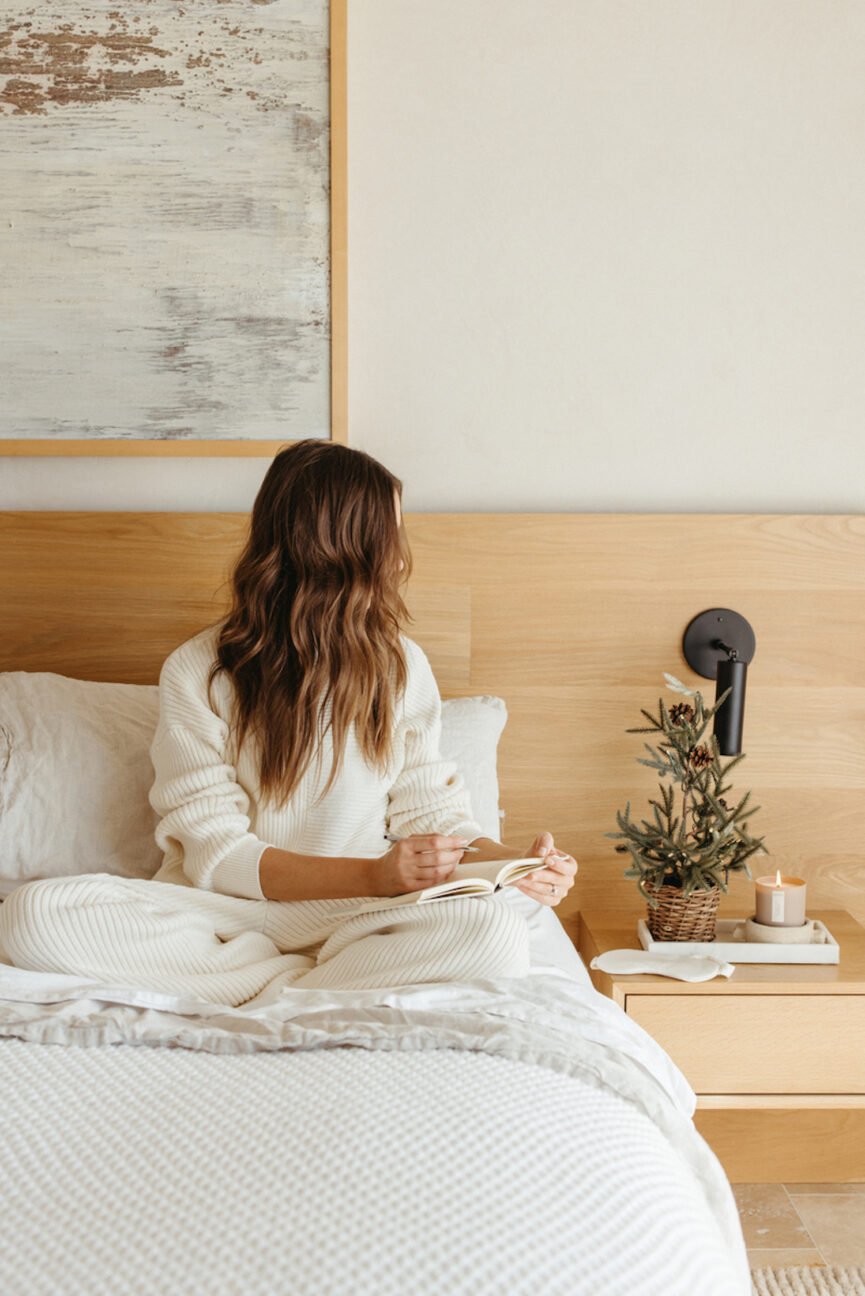
Winter Nighttime Essentials for a Nourishing Ritual
In the winter, I crave warmth, comfort, and tranquility all the time—especially when I’m home. As the seasons change, I follow my intuition and try to create rituals that cater to what my body needs. In the winter, this means being gentle with myself, creating space for what I need to stay productive, engaged, and to make each day as meaningful as possible. (Yes, even when I have the urge to cocoon myself under a pile of blankets.)
That’s where my winter nighttime essentials come in. Even my morning self can be reluctant to get the day moving in the winter. A nighttime routine gives me the best chance possible of a good day. From making your bedroom a deliberate space of transition to wellness rituals that signal to your nervous system that it’s time to unwind and restore, my winter nighttime ritual keeps me on track.
We’ve curated a collection of evening essentials that transform your nightly routine into a cherished ritual. Each piece has been thoughtfully selected to help you create those precious moments of peace, turning your bedroom into a sanctuary and a launchpad for tomorrow’s success.
Bedroom Nighttime Essentials
Your bedroom should be a physical space of transition—from the busy world outside to a sanctuary that encourages rest. But how much time do you take to enjoy it? My winter nighttime essentials for my bedroom are more than just objects; they’re anchors of intention, carefully chosen to promote restorative rest.
Of course, the centerpiece is your bed. Getting into bed is a sensory experience. And a good night’s sleep is the Camille Styles cure for… just about everything. The right blanket can help lower cortisol, for example. And mouth tape isn’t just a beauty trend—it can transform your sleep quality. That’s why I choose everything with intention—from my sheets to the scented candles burning on my bedside.
My bedside table houses everything I need to get the best night’s sleep I can: a mood-boosting lamp, my favorite winter candles, a diffuser, and a pillow spray. Ever since I got serious about my sleep, my life changed. Trust me, winter is the perfect time to overhaul your sleep routine.
Shop Bedroom Essentials
Parachute
Casaluna
Threshold
Beauty Nighttime Essentials
Your skin resets at night. In the winter, giving your skin time to repair itself after facing harsh, drying temperatures is the key to glowing skin. But winter is also when I’m least motivated to do a full skincare routine. I want to hurry into bed. (Who else?) The solution: deeply nourishing products that maximize my results. Think rich ingredients, multi-tasking products, and prioritizing overall skin health.
Winter beauty essentials don’t start and end on your bathroom sink. My nighttime ritual also contains the less-glamorous beauty essentials that work wonders overnight, like face masks, silk hair bonnets, and wrinkle patches. I try to do something “extra” a couple of nights a week. This gives me something to look forward to while boosting my beauty sleep.
Shop Beauty Essentials
Kitsch
HigherDOSE
Wellness Nighttime Essentials
Beyond your physical space and your beauty rituals, getting ready for the day ahead is about mindset. Your headspace going into your nighttime routine helps usher you to sleep. Going to bed stressed, for example, can wreak havoc on your nervous system and sabotage your health.
I try to take time every night to focus on mindfulness and wellness. How do I want to feel in the morning? How can I create that feeling in my nighttime routine? Things like journalling, listening to short meditations, and implementing wellness nighttime essentials keep me grounded and set me up for the next day.
Shop Wellness Essentials
The post Winter Wellness: Nighttime Essentials for Restful Sleep appeared first on Camille Styles.
]]>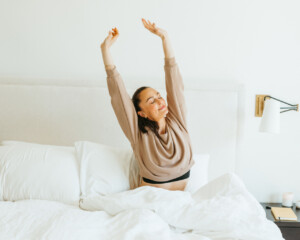
Say goodbye to restless nights.
The post A Beginner’s Guide to Using Sound Frequencies for Better Sleep appeared first on Camille Styles.
]]>
There is nothing worse than a restless night’s sleep. Especially now that studies show women need more sleep than men, getting a good night’s rest is imperative if we want to show up as our best selves day to day. And while there are a number of hacks to help you sleep more soundly, one of the simplest ways is to curate a sleeping soundtrack.
Featured image from our interview with Megan Roup by Michelle Nash.
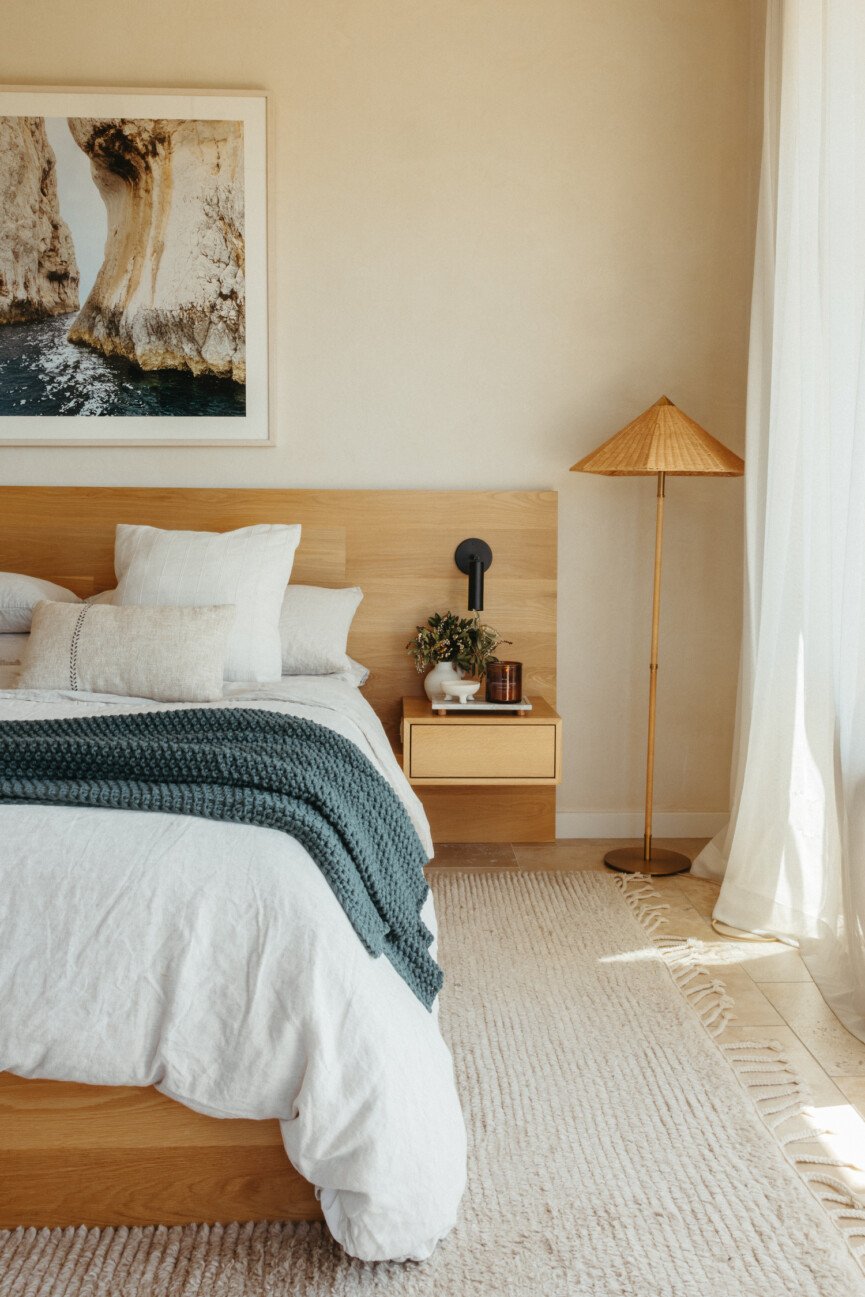
You may already have one in the form of a whirring fan or a white noise machine. But why exactly do these sounds lull us to sleep? And what is the best frequency for sleep anyway? I chatted with Jamie Pabst, Founder of Spiritune, to get the lowdown on sleep frequencies—what they are, why they work, and how to use them to get a good night’s rest. Read on for everything you need to know!
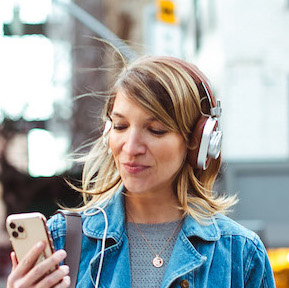
Why does listening to certain frequencies help us sleep?
Pabst’s app Spiritune uses music and sound to help users reduce stress—making it a game changer when it comes to wellness and sleep. She knows a thing or two about the power of frequencies. “The right kind of sound can be incredibly helpful as a sleep aid,” she shares. “Certain sound frequencies work by influencing our brainwave patterns through a process called entrainment. Essentially, our brain naturally aligns with the frequency it’s exposed to, which can lead to a more relaxed state.”
Pabst explains further that brainwaves become slow and synchronized. Our brain wave frequencies move much faster when we’re awake and start to move slower as we become more relaxed. They’re at their slowest when we’re in deep sleep. “Music can be used as a source of entrainment, potentially facilitating their onset,” she continues, explaining that listening to frequencies can help our brainwave patterns relax, ultimately lulling us to sleep. “If you’re part of the one in three adults who don’t get enough sleep regularly, looking to sound or music for help can be a great starting point.”
What is the best frequency for sleep?
While Pabst notes that this is an active area of research, she shares that the best frequencies to listen to are those exhibited by the brain during sleep: delta waves typically ranging from 0.5-2 Hz. So what does that mean exactly? Pabst recommends pink noise.
“In terms of providing a constant and predictable auditory backdrop, we use “pink noise” which has a soothing frequency distribution that is reminiscent of natural sounds like ocean waves or rainfall,” she says. Having pink noise on at bed time can not only help you fall asleep, but stay asleep as well.
“Pink noise tends to have a comforting effect while also masking noises from the environment,” she states. “Many experts, including our lead neuroscientist at Spiritune, also recommend pink noise as the top choice among the ‘color noises’ for sleep.”
Can other color frequencies help with sleep?
You may have noticed other color frequencies making their way into the mainstream—specifically white, pink, and brown noise. There has been a general consensus that white noise is equal to most background noise, but Pabst says that isn’t exactly true. “In simple terms, sound consists of waves with different frequencies,” she explains. “The ‘color’ of the noise refers to how these waves are spread across the audible spectrum, similar to how the color of light depends on how the energy is spread across the visible electromagnetic spectrum.”
If pink noise is the best frequency for sleep, what about white and brown noise? This is how Pabst specifies the differences between these three unique frequencies.
- White noise. White noise contains all audible frequencies at equal levels, creating a harsh static sound with much more high-frequency energy than is found in most natural sounds.
- Pink noise. Pink noise emphasizes the lower frequencies, giving it a softer and more pleasant sound with less high-frequency hiss.
- Brown noise. Brown noise goes even further, putting even more emphasis on low frequencies, producing a deep, rumbling tone.
While you may have a personal preference, research shows that pink is the best for sleep. “What’s interesting to me is that white noise has historically gotten a lot of attention in the cultural zeitgeist as a great sleep aid for masking background sounds, but it’s pink noise that is actually superior due to its gentler, lower frequency emphasis,” Pabst remarks. “These types of differentiating clarifications are something I’m passionate about sharing and influencing, so that people feel educated and empowered on how to use sound and music more effectively for their health.”
What’s the best way to listen to these frequencies in your bedroom?
Having high quality speakers or headphones comfortable enough for sleeping in are great investments for your sleep hygiene. “Personally, I use Apple AirPods. You can also place a small portable bluetooth speaker by your bedside like the Sonos Roam,” Pabst recommends.
When it comes to the frequencies themselves, Pabst suggests finding a reliable source, backed by science. “There are many options out there, so it can often feel overwhelming. I’d suggest finding a sound or music app that’s grounded in science and customized to your needs,” she shares. “Spiritune, for example, stands out because it’s designed with therapeutic music principles backed by research and neuroscience.”
Shop Speakers and Headphones
What other sleep hacks pair well with frequencies?
Beyond sound, Pabst shares that temperature and light play big roles when it comes to sleep quality. “I recommend using sheets or pajamas made from natural fibers like cotton or linen, which are breathable and moisture-wicking, keeping you cool throughout the night,” she shares. The ideal sleeping temperature ranges from person to person. In general, try to keep your home between 68 and 65 degrees.
“Lastly, light can wreak havoc on your sleep by interfering with your body’s natural sleep-wake cycle,” Pabst continues. “I recommend a great sleep mask if you sleep in an environment where street light, daylight, or any type of light is present.”
Shop Sleep Essentials
The post A Beginner’s Guide to Using Sound Frequencies for Better Sleep appeared first on Camille Styles.
]]>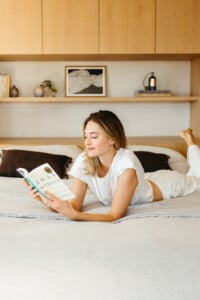
Nightstand necessities.
The post Restless Nights? These 18 Products Will Give You the Best Sleep of Your Life appeared first on Camille Styles.
]]>
When I’m feeling nostalgic, I think back to the days when staying up late was a rite of passage. Growing up, I resented my 7 p.m. bedtime and hoped against hope that my parents would let me stay up just a couple more hours. Even as a college student, all-nighters were the norm and forgoing sleep felt like the only way to have a social life. Well, needless to say that I, along with many of you, no longer want to function on too few hours of sleep. We’re big fans of sleep around here and will try almost anything to ensure we’re getting at least 8 hours a night. That’s why we’ve rounded up the best sleep products. Here’s hoping they help you get some restorative shut-eye, too.
Featured image from our interview with Sanne Vloet by Michelle Nash.
The Best Sleep Products for a Peaceful Slumber
From calm-inducing capsules to relaxing pillow mists and the most luxurious pajamas you’ve ever slipped on, these are the tried-and-true products that’ll help us all ease into a peaceful slumber. As always, consult your physician if you have specific needs or questions!
Best Pajamas
Gone are the days of leaning on old college t-shirts as our wear-to-bed wardrobe. Dedicated pajamas are essential for a good night’s sleep, combining comfort, style, and practicality. Look for materials like soft cotton, breathable linen, or luxurious silk that feel gentle against the skin and allow for optimal temperature regulation. Investing in high-quality pajamas can elevate your nighttime ritual. With the right pair, you’ll not only look chic but also feel cozy and ready for a restorative night’s sleep.
Shop Pajamas
Dagsmejan
Nattcool Sleep Tech Slip Top Cross Strap
Sleep Tech Slip Top Cross Strap
Experience ultimate comfort and style with this universally flattering, cross-back top.
Dagsmejan
Nattcool Sleep Tech Wide Pants
Sleep Tech Wide Pants
Expertly designed with moisture-wicking fabric that regulates temperature and ensures breathability, allowing you to sleep soundly without overheating.
Quince
This shirt features a relaxed silhouette and lightweight, breathable silk that offers a smooth feel against your skin, making it the ideal piece for a cozy night in.
Quince
100% Washable Silk Pajama Shorts
These shorts are crafted from soft, breathable silk for a chic and relaxed fit that effortlessly elevates your bedtime routine.
J. Crew
Cozy up in style with this set designed in a soft, breathable fabric that offers ultimate comfort and a classic silhouette.
Lunya
This luxurious yet practical piece is crafted from breathable, machine-washable silk that ensures comfort and elegance for restful nights.
Sleep Supplements
While I prefer to look to food first for my essential nutrients, sleep supplements can also play a vital role in enhancing your nightly rest. Look for natural ingredients such as melatonin, which helps regulate sleep-wake cycles, or magnesium, known for its calming effects on the nervous system. Adaptogenic herbs like ashwagandha and valerian root are also popular choices for reducing stress and promoting relaxation. Formulas that combine multiple sleep-supporting ingredients can provide a synergistic effect, helping you fall asleep faster and stay asleep longer.
These days, many supplements are available in convenient—and often delicious—forms. You can find everything from gummies to sleep lattes that are easy to incorporate into your nightly routine.
Shop Sleep Supplements
clevr
Unwind with this creamy oat milk latte, a soothing blend of adaptogens formulated to calm your mind and body before bed.
Super Patch
Designed to naturally support your body’s sleep cycle, simply apply the patch before bed to slip into a restorative slumber.
MoonBrew
Unwind and support your body’s natural rhythms with this caffeine-free blend of adaptogens and herbs designed to improve sleep.
Fleur Marché
Feel calm and relaxed with these quick-acting patches—just apply to your inner forearm and wake up refreshed.
Juna
Drift into deep, restful sleep with these tasty gummies—featuring non-groggy melatonin, magnesium, and a botanical blend.
Moon Juice
Moon Juice’s Magnesi-Om combines magnesium and L-theanine to help you relax, all while tasting like a bedtime treat.
Sleep Products for the Bedroom
Creating a rest-friendly bedroom starts with the best sleep products designed to enhance comfort and promote relaxation. Incorporate soft, breathable bedding, such as organic cotton or luxurious silk, to create a cozy atmosphere. (I love weighted blankets and find mine helps reduce the anxiety that once kept me up at night.) Soft lighting, like a dimmable bedside lamp, helps set the mood, while essential oil diffusers or sleep sprays can infuse your space with soothing scents. It’s all about cultivating a calming environment, so you can slip into a restful, restorative sleep.
Shop Bedroom Sleep Products
alo
Elevate any space with this sleek, cordless design that brings calming vibes to any room. Add your favorite essential oils to unwind or create an inviting ambiance.
Loftie
This beautiful alarm clock and smart lamp features adjustable warm light, customizable wake-up sounds, and a sleep aid function that helps you unwind with soothing soundscapes.
FluffCo
Crafted from 100% pure mulberry silk to minimize hair breakage and maintain your skin’s moisture, this silk pillowcase ensures you wake up every morning refreshed.
OSEA
The vagus nerve helps activate the body’s relaxation response and regulate stress. This light, subtle scent is perfect for spraying on linens before bed.
Bearaby
This cozy, chunky-knit blanket is designed to provide gentle pressure that soothes anxiety and promotes restful sleep.
Wilde House Paper
With guided prompts and pages that encourage reflection and gratitude, this journal helps you craft an intentional nighttime ritual.
The post Restless Nights? These 18 Products Will Give You the Best Sleep of Your Life appeared first on Camille Styles.
]]>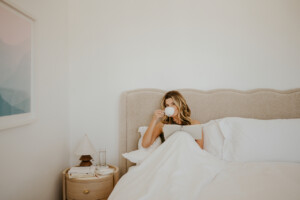
A nutritionist explains.
The post Chronically Tired? Your Diet Might Be to Blame appeared first on Camille Styles.
]]>
You’ve invested in the perfect mattress, blackout curtains, and ditched your phone before bedtime (kudos!). You’ve created a wind-down routine you look forward to. You’ve even designed your sleep haven for the ultimate snooze! Yet despite your efforts, a restful night’s sleep remains out of reach. Been there, experienced that. What if I told you the culprit might be on your plate—not in your bedroom? The missing puzzle piece is hiding in plain sight: your diet. Before Daylight Savings rolls around, let’s dive into the often-overlooked connection between diet and sleep. Specifically, sneaky food sensitivities sabotaging your slumber. Yes, adjusting your diet could be the key to unlocking better, uninterrupted sleep.
Featured image from our interview with Inge Theron by Michelle Nash.
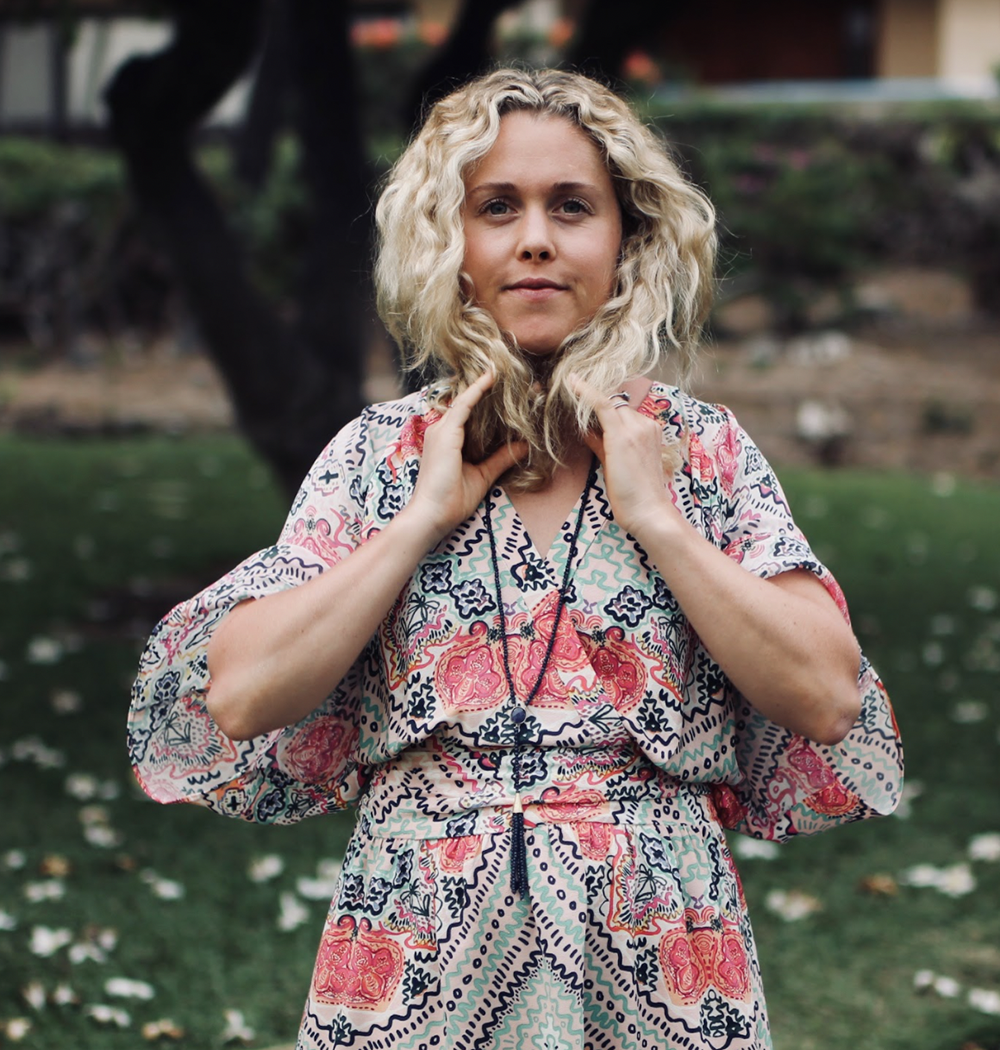
The Surprising Link: Food Sensitivities and Sleep
Unlike food allergies—which trigger an immediate and sometimes severe reaction—sensitivities tend to fly under the radar. They don’t usually cause an obvious, in-the-moment response. But over time, they quietly wreak havoc on your body. Hello, sleep problems. These sensitivities lead to everything from inflammation and hormonal imbalances to digestive woes. All of which inevitably interfere with your ability to get proper rest.
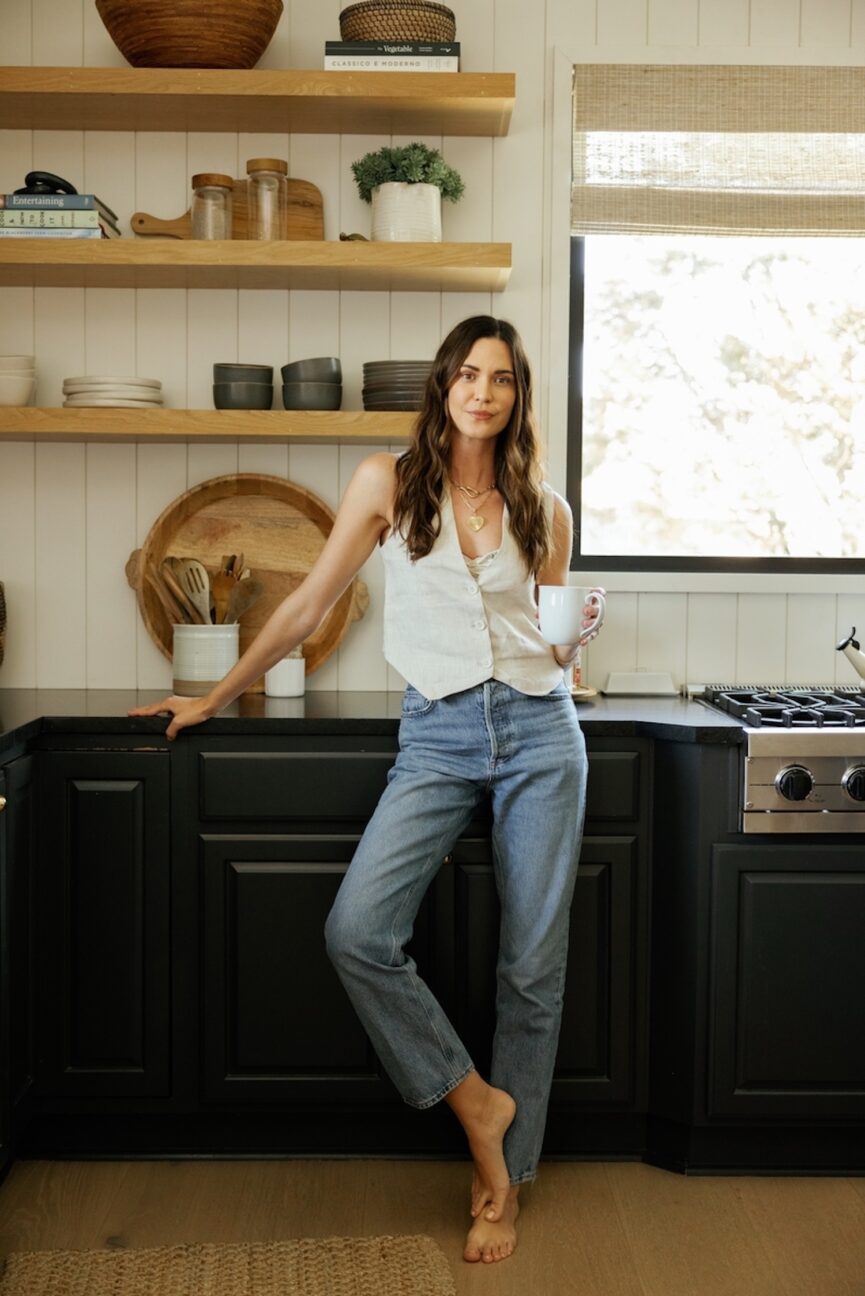
How Your Diet Could Be Undermining Your Sleep
Here’s the kicker: you could be sensitive to foods you consume (every day) without realizing it. For instance, that seemingly harmless morning latte or your favorite sandwich could be undermining your sleep quality. Eventually, undiagnosed sensitivities can disrupt your ability to sleep. As a result, you find yourself tossing and turning, struggling to wake up rested. Fortunately, it may only take a dietary adjustment (or two) to significantly improve your sleep quality—and overall well-being.
The Inflamation-Sleep-Anxiety Cycle
When you eat something your body’s sensitive to, it triggers inflammation. This isn’t the acute kind that causes visible swelling. It’s a low-grade, chronic inflammation that simmers beneath the surface. This inflammation can disrupt your sleep patterns, making it harder to fall asleep or stay asleep throughout the night. And we all know what happens when we don’t sleep well—anxiety comes knocking. This creates a vicious cycle: poor sleep increases anxiety, which in turn makes it even harder to sleep.
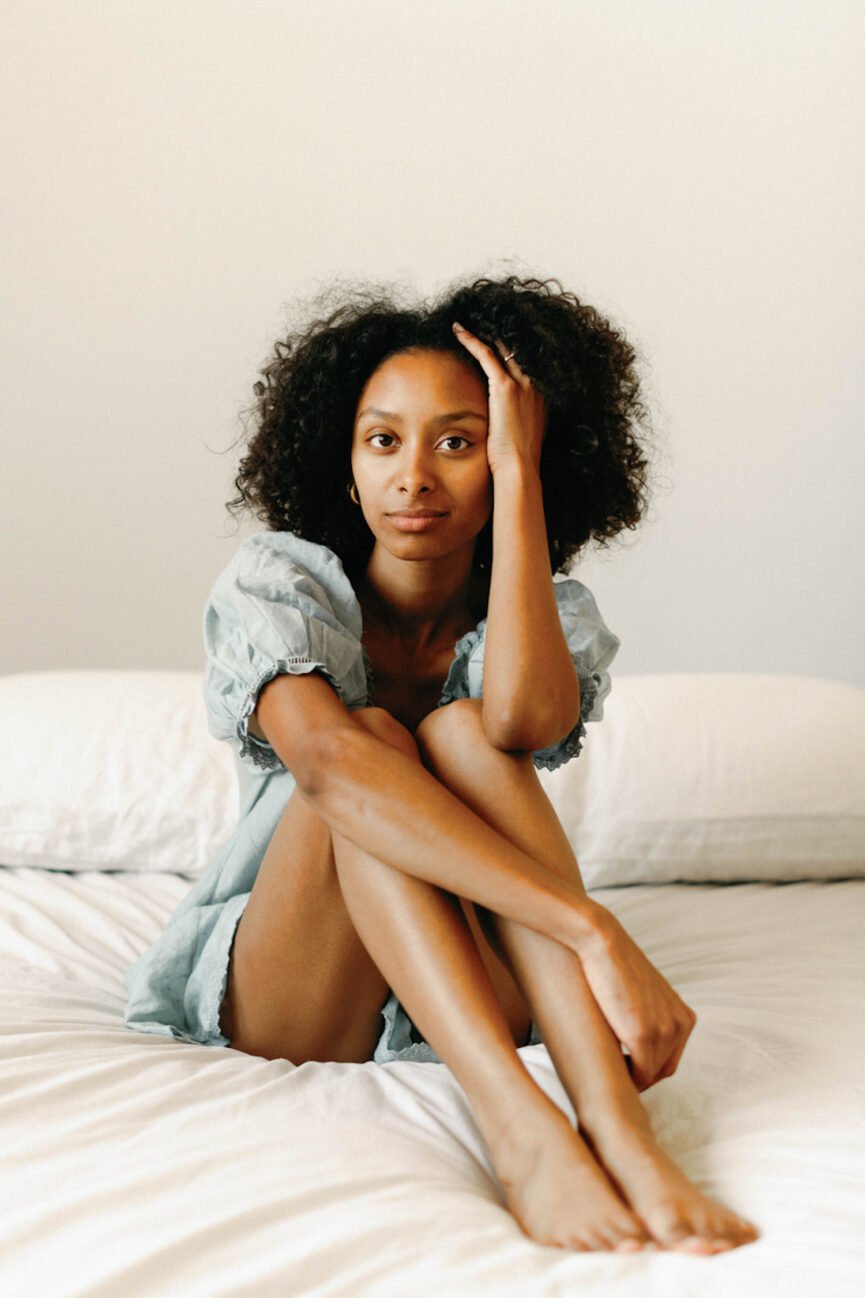
7 Common Food Sensitivities That Impact Sleep
As mentioned, sensitivities tend to produce more subtle (although chronic) symptoms. But before you know it, these sensitivities can disrupt your sleep patterns and overall rest. Curious to know the top offenders when it comes to diet and sleep? As a Nutrition Consultant, I frequently observe these common food sensitivities in my clients:
1. Dairy
First up, dairy products. Think milk, cheese, and yogurt. More specifically, it’s the two main proteins in cow’s milk: casein—found in the solid part of milk that curdles—and whey, found in the liquid part of milk that remains after milk curdles. These create issues for those with lactose intolerance and/or dairy sensitivities. Symptoms like bloating, gas, and stomach discomfort can make drifting off to sleep a challenge. Plus, dairy can sometimes lead to excess mucus production, which might result in snoring (and frequent wake-ups) throughout the night.
Love the taste and consistency of dairy? Try lactose-free cottage cheese, coconut yogurt, or flax milk—all of which mimic the goodness of dairy without the side effects.
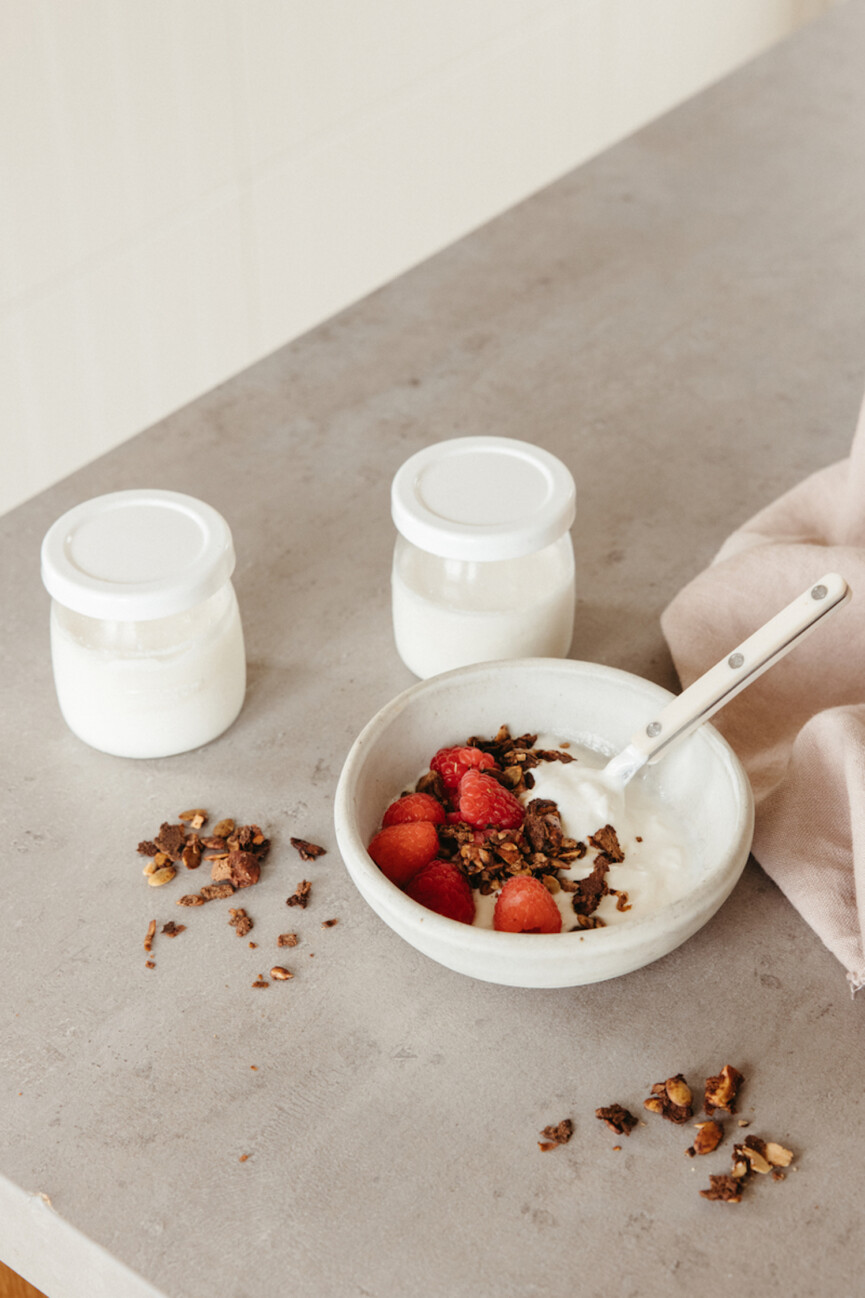
2. Gluten
Celiac disease aside, gluten—the protein present in wheat, barley, and rye—is problematic for those with gluten sensitivity. Gluten can trigger an inflammatory response, and this response disrupts sleep-regulating hormones. A snowball effect, this leads to gastrointestinal symptoms that interfere with sleep quality. But even if you don’t have a diagnosed sensitivity, gluten can still cause gastrointestinal distress that impacts sleep.
Try a grain-free diet or switch your go-to packaged bread for organic sourdough (ideally from a local baker or homemade!).
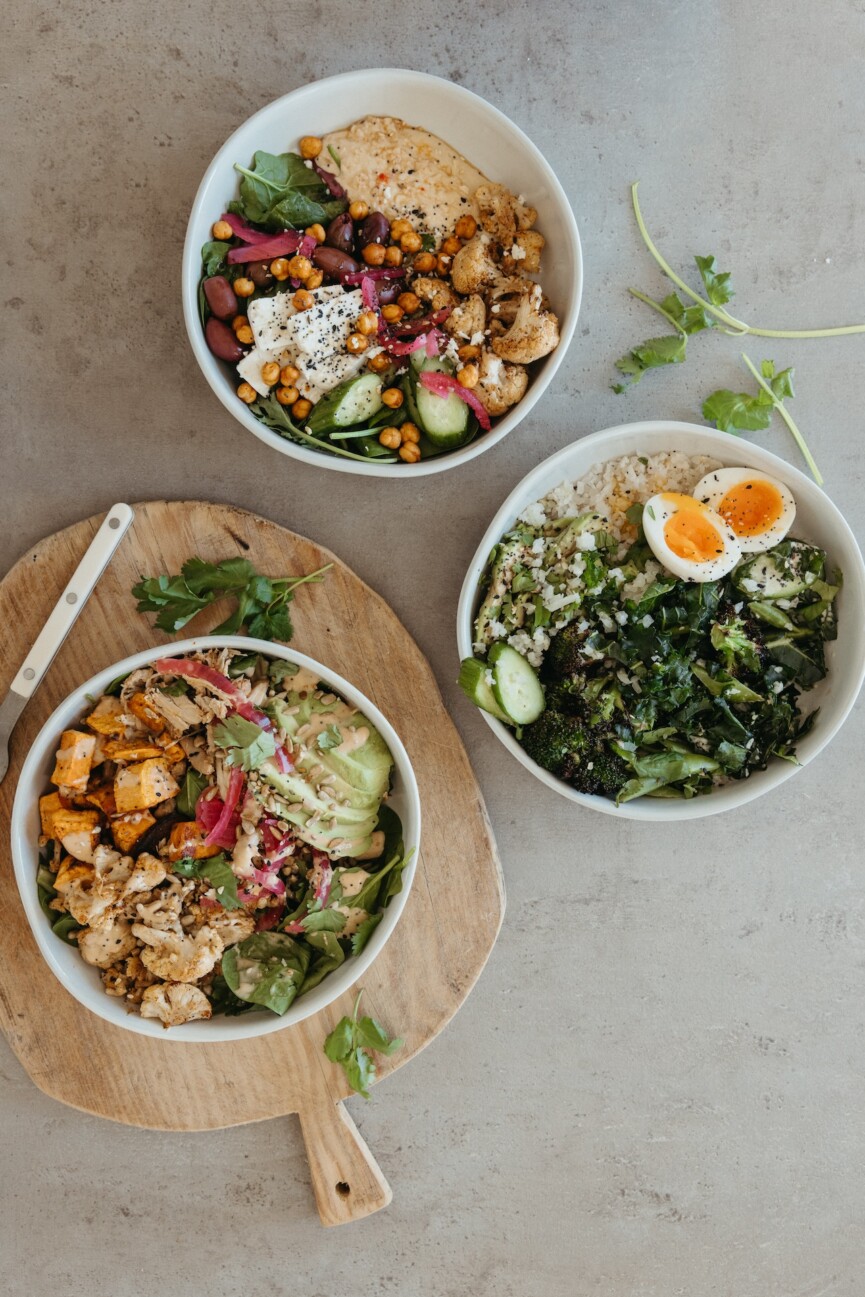
3. Eggs
Notice digestive issues (bloating, gas, or diarrhea, etc.), skin reactions (like hives or eczema), or respiratory symptoms (such as congestion or coughing) after eating eggs? You might have a sensitivity. These adverse reactions can create discomfort—even if you eat them for breakfast and not dinner—that makes it challenging to fall asleep.
Before you kiss eggs goodbye, swap high-quality eggs (pasture-raised) as these chickens are raised in healthier, more natural environments. Additionally, cook your eggs thoroughly. Heat alters the structure of egg proteins, potentially reducing their allergenic properties. Lastly, test different egg varieties—if you have access to them—to see if that improves your tolerance (e.g., duck eggs).
4. Soy
While soy products (tofu, tempeh, soy milk, and edamame) are healthy, they can cause reactions. Here’s a closer look at soy’s impact on diet and sleep:
- Glycemic impact. Soy products can affect blood sugar levels. And these fluctuations affect sleep quality!
- Soy protein. Soy contains proteins that can act as allergens. The proteins—particularly glycinin and beta-conglycinin—can trigger immune responses (manifesting as bloating, gas, and diarrhea).
- Phytates. Soybeans contain phytates, which are compounds that can interfere with mineral absorption. This interference can contribute to nutritional imbalances and potentially affect overall health (including sleep).
- Isoflavones: Soy products are rich in isoflavones—plant-based compounds with estrogen-like properties. For those with hormone-sensitive conditions or imbalances, this can potentially lead to disruptions in sleep patterns, contributing to symptoms like hot flashes or mood swings.
- Lectins. Last but not least, soybeans contain lectins. These are proteins that bind to the lining of the digestive tract and potentially cause inflammation or irritation. This irritation can result in gastrointestinal symptoms that disrupt sleep.
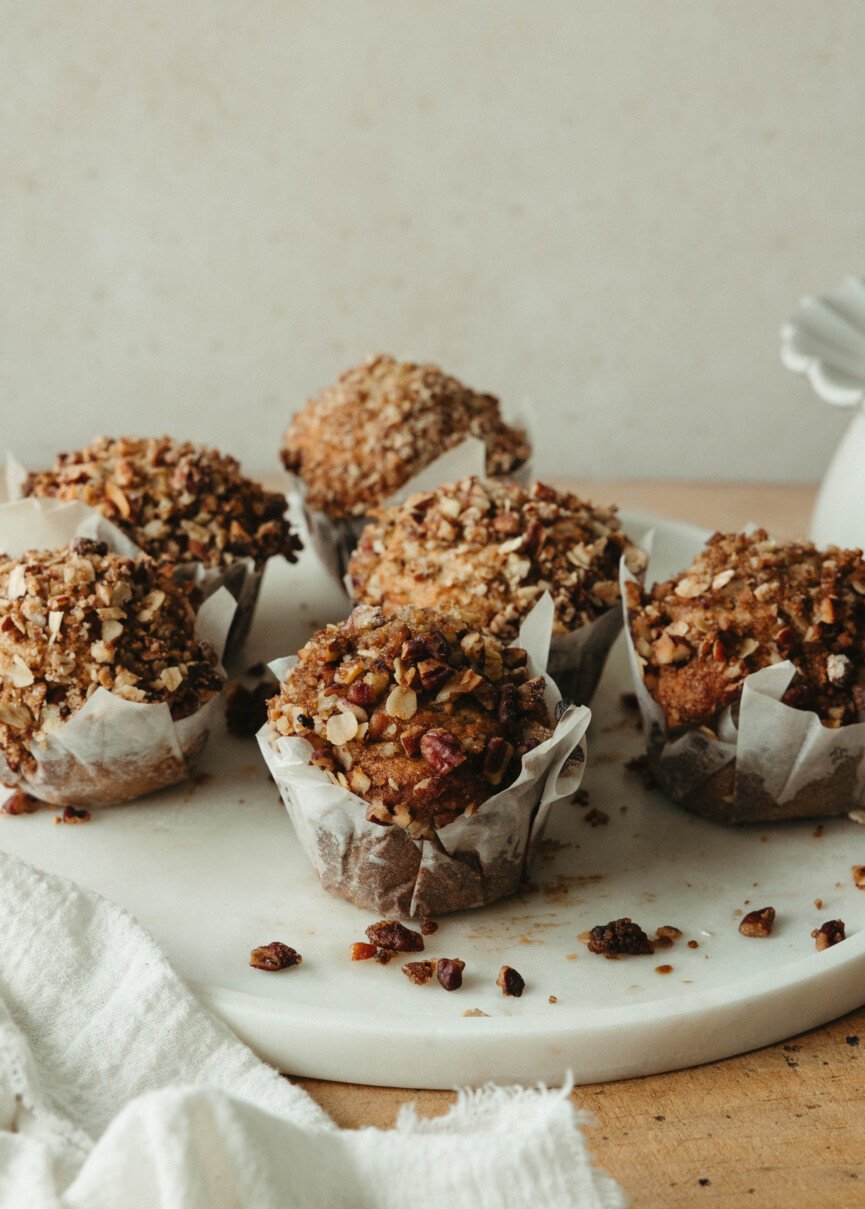
5. Nuts
Nuts (peanuts and tree nuts, like cashews and walnuts) are well-known allergens that can trigger a range of reactions. With symptoms/histamine reactions like hives, itching, or swelling, falling asleep is both uncomfortable and challenging. Addititonally, although nuts are high in nutrients like healthy fats and fiber, these things can irritate the digestive tract because they’re hard to digest—especially when consumed in large doses before bed.
6. Citrus Fruits
While citrus fruits might not be common allergens, they can still cause trouble for some! Namely, oranges, grapefruits, and lemons. The acidity in these fruits can lead to acid reflux, where stomach acid flows back up into the esophagus—especially when you lie down. This can cause a burning sensation, keeping you awake and disrupting sleep. If you notice that citrus fruits are affecting your rest, it might help to cut back on them (particularly in the evening).
Enjoy noshing on fruit? Try switching to cherries (if they’re in season), peaches, kiwis, banana, and berries. These options are rich in everything from melatonin and serotonin to magnesium and antioxidants. All of which can regulate sleep patterns and support your sleep-wake rhythm.
7. Artificial Additives and Preservatives
Last but not least, artificial ingredients. Artificial additives and preservatives in ultra-processed foods can mess with your sleep. Think artificial colors, flavors, and too much sodium (which are often added to make food last longer and taste better!). However, these additives can upset your stomach or cause allergic reactions. In turn, making it hard to fall asleep or stay asleep. High sodium levels can also lead to water retention and higher blood pressure, which can make you wake up frequently during the night. Choosing whole, less processed foods can help avoid these problems.
Ditch the high-carb cereal for grain-free granola, boxed cookies for these oatmeal chocolate chip delights, high-sugar bars for a cleaner protein bar option, or a few medjool dates stuffed with nut butter and flaky salt.
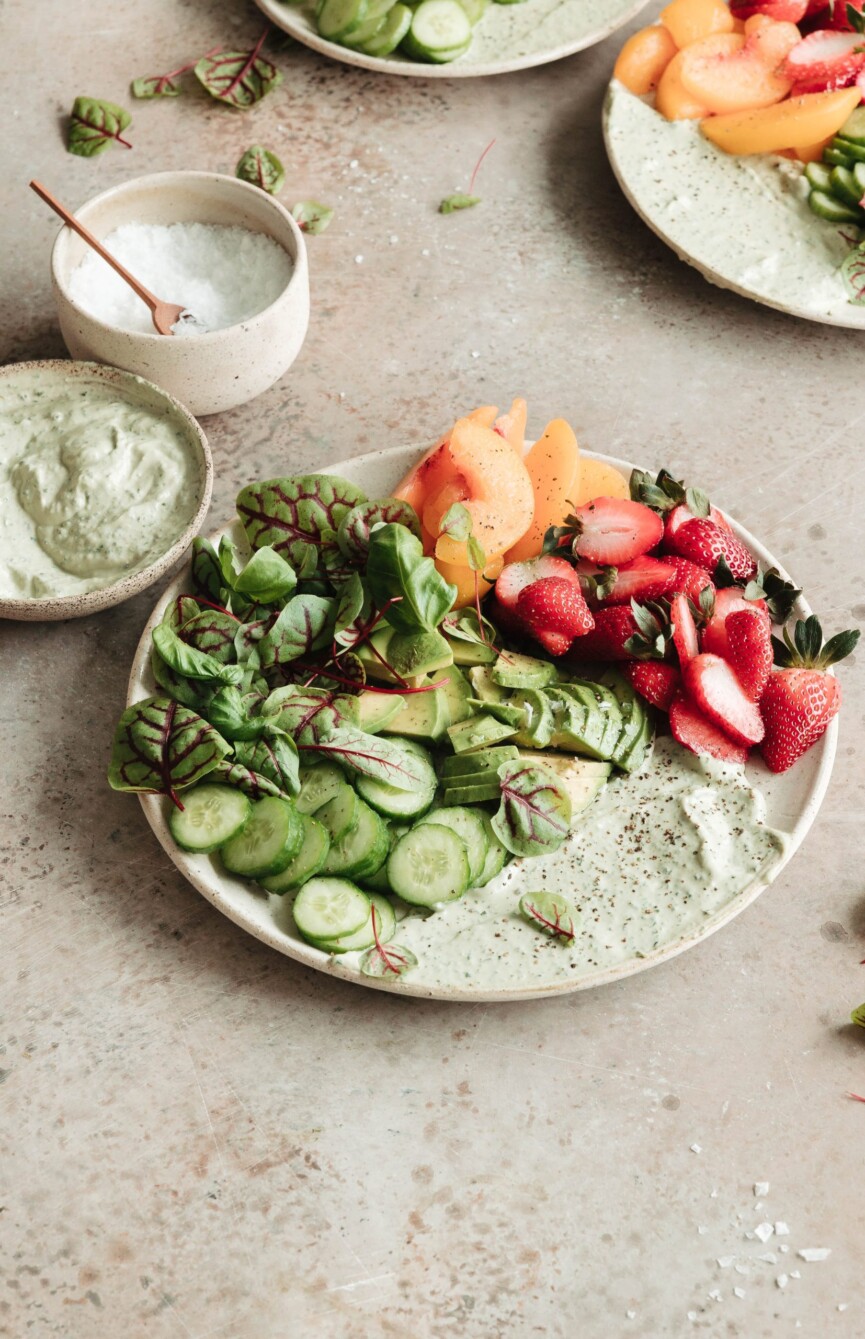
Suspect you might have food sensitivies?
If you think food sensitivities might be affecting your sleep, consider keeping a food diary to track what you eat and how you feel. Identifying and eliminating problematic foods could easily boost your sleep quality. All of that said, how do you know if food sensitivities are messing with your sleep? Look out for these signs:
- Fatigue, even after a full night’s sleep
- Difficulty falling asleep or staying asleep
- Mood swings or increased anxiety
- Digestive issues like bloating or gas
- Skin problems like eczema or acne
- Headaches or brain fog
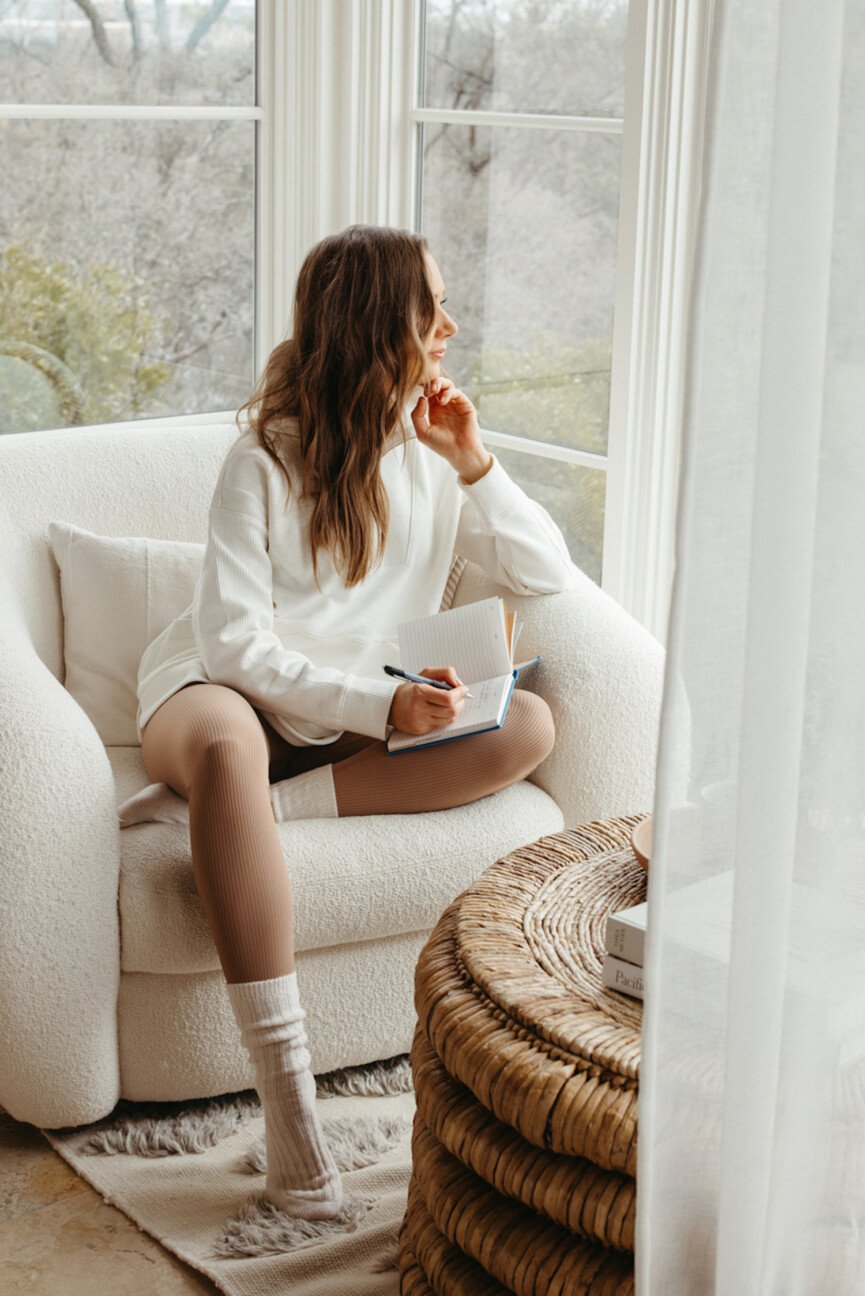
Beyond Food: Blood Sugar and Sleep
To bring this full circle, let’s not forget about blood sugar. Those late-night snacks or sugary desserts can cause your blood sugar to spike and crash during the night, leading to restless sleep. Try to eat a balanced dinner with 20-40 grams protein, 1-2 sources of healthy fats, and fiber-rich carbs, like butternut squash or black beans. If you enjoy having a bedtime snack, opt for something like a handful of nuts with berries, a piece of sharp cheddar cheese with dark chocolate, or chia pudding with nut butter. Your best night’s sleep is just a meal (or snack) away!
The post Chronically Tired? Your Diet Might Be to Blame appeared first on Camille Styles.
]]>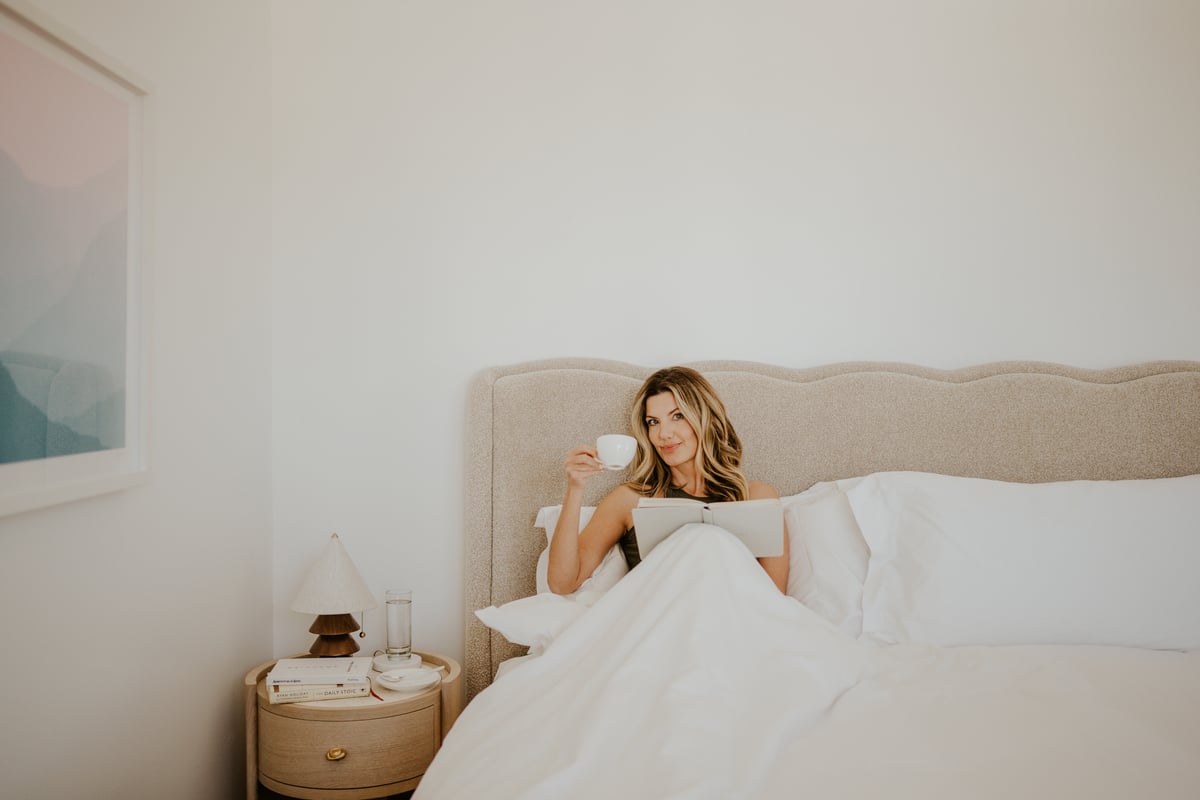
It's just what the (sleep) doctor ordered.
The post Not Sleeping Well? A Nutritionist Says These 10 Foods Could Be Sleep’s Secret Weapon appeared first on Camille Styles.
]]>
We’ve said it once, and we’ll say it again: We love our beauty rest. We take our sleep very seriously over here. After all, a happier, healthier you happens when your body gets proper rest. Although most people know sleep is essential, few prioritize it. In fact, it’s estimated that 70% of adults get insufficient sleep (at least one night per month). Roughly 11% of adults report sleep woes every night. Regardless of age and socioeconomic class, sleep disorders are common. Thankfully, we have tips for getting a better night’s sleep. Even better news: we’re adding to that list with foods that promote a restful, restorative snooze. If you haven’t heard of tryptophan, it’s sleep’s secret weapon. Foods high in tryptophan might just be what the doctor ordered.
Featured image from our interview with Inge Theron by Teal Thomsen.

What is tryptophan?
Tryptophan—or L-tryptophan (its full name)—is an essential amino acid. It’s found in foods like animal protein, cheese, yogurt, eggs, nuts, and seeds. It serves several important purposes, like nitrogen balance in adults and growth in infants. Basically, it helps the body create proteins and certain brain-signaling chemicals. Unlike vitamin K, which your body can make on its own, tryptophan is different. The human body gets all the tryptophan it needs via diet or supplements.
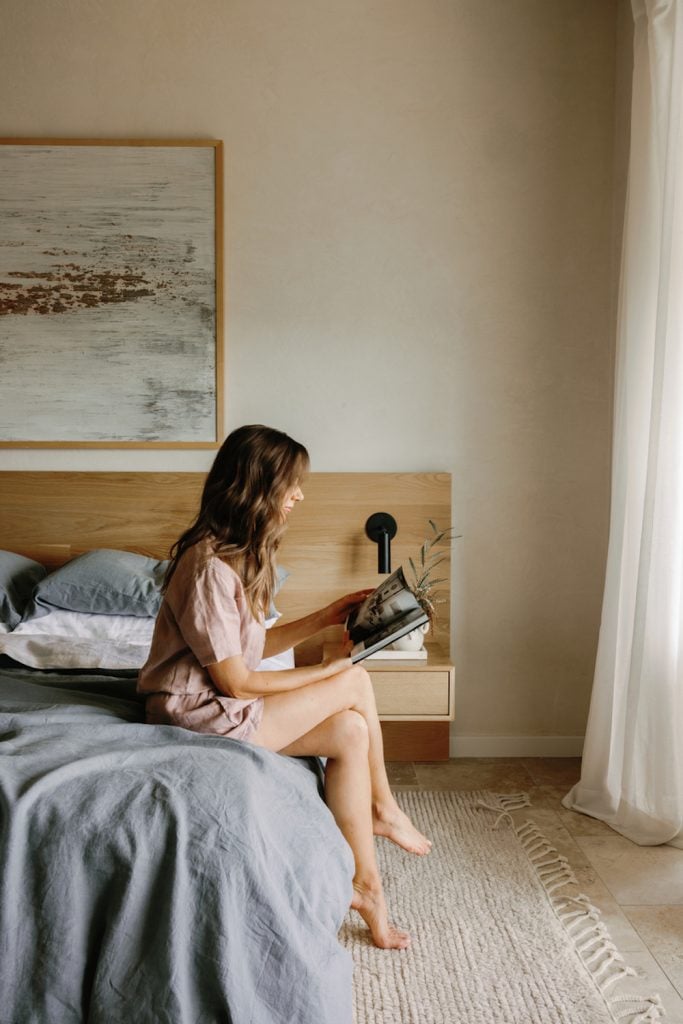
How is tryptophan related to melatonin and serotonin?
It’s the precursor. Once consumed, your body turns tryptophan into a B vitamin called niacin. Niacin plays a key role in creating serotonin. As you probably know, serotonin is associated with sleep. Niacin is also correlated with melatonin levels. In essence, think of tryptophan as the precursor of melatonin and of the neurotransmitter, serotonin. Tryptophan is known to increase serotonin and melatonin levels.
Does eating turkey make you sleepy?
Not exactly. Like melatonin, foods high in tryptophan can make you sleepy. However, that turkey coma has less to do with the turkey, specifically, and more to do with eating a variety of other foods that also contain tryptophan. Thanksgiving is a tryptophan gold mine. There is no more tryptophan in turkey than in other commonly served meats, like chicken and beef. Plus, tryptophan can really only make you tired, immediately, if it’s eaten or taken without any other amino acids. And the protein in turkey contains plenty of other amino acids.
In all reality, other foods—like dairy (a common ingredient in Thanksgiving dishes)—contain more tryptophan. Furthermore, foods containing carbs also help produce serotonin and tryptophan. Oftentimes, carb-rich Thanksgiving side dishes contribute to why you feel sleepy. Serotonin is responsible for drowsiness, so it’s no surprise that most of us crave a nap before pumpkin pie. The more you know.
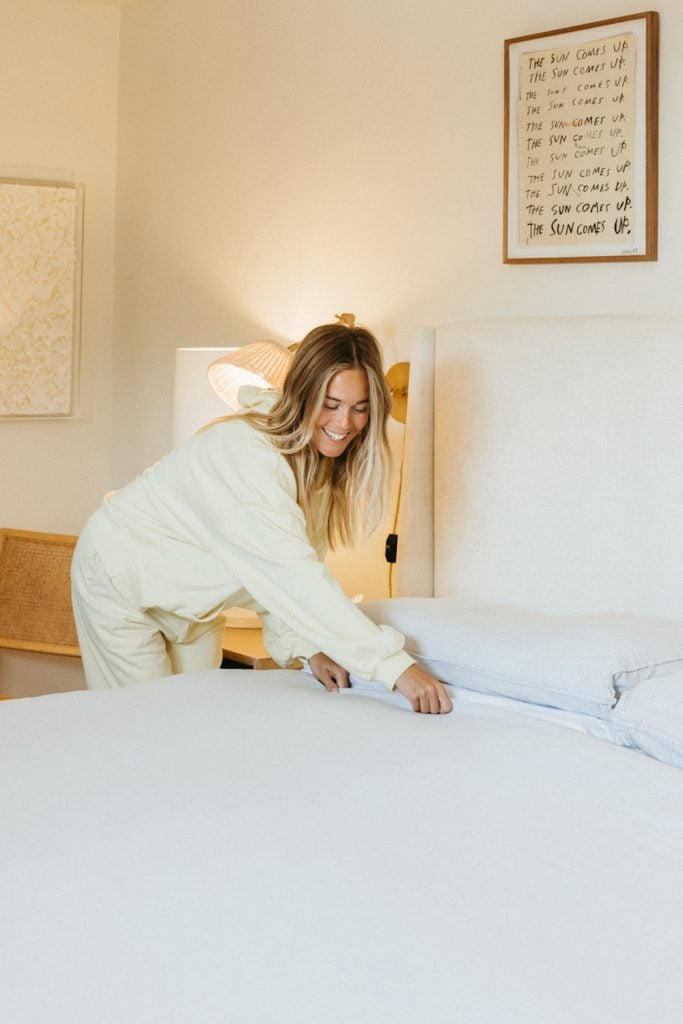
How Tryptophan Works in the Body
As mentioned, the body uses tryptophan to help make melatonin and serotonin. Melatonin helps regulate our sleep-wake cycles, and serotonin is known to help regulate appetite, sleep, mood, and more. When you eat (or supplement) L-tryptophan, your body absorbs it and converts it into serotonin. Serotonin transmits signals between your nerve cells and also narrows (constricts) blood vessels. The amount of serotonin in the brain can affect mood. Beyond the brain, the liver can also use tryptophan. This is where it produces niacin (vitamin B3). We need niacin for energy metabolism and DNA production.
Why We Need Tryptophan
Generally speaking, tryptophan is required to maintain adequate protein levels in the body. This is especially important for infants. In newborns, tryptophan is essential to brain maturation. It also aids in the development of regulating hunger cues, satiation, and sleep-wake-rhythm. Tryptophan is found in breast milk, which is why it’s important for a nursing mother to eat foods high in tryptophan.
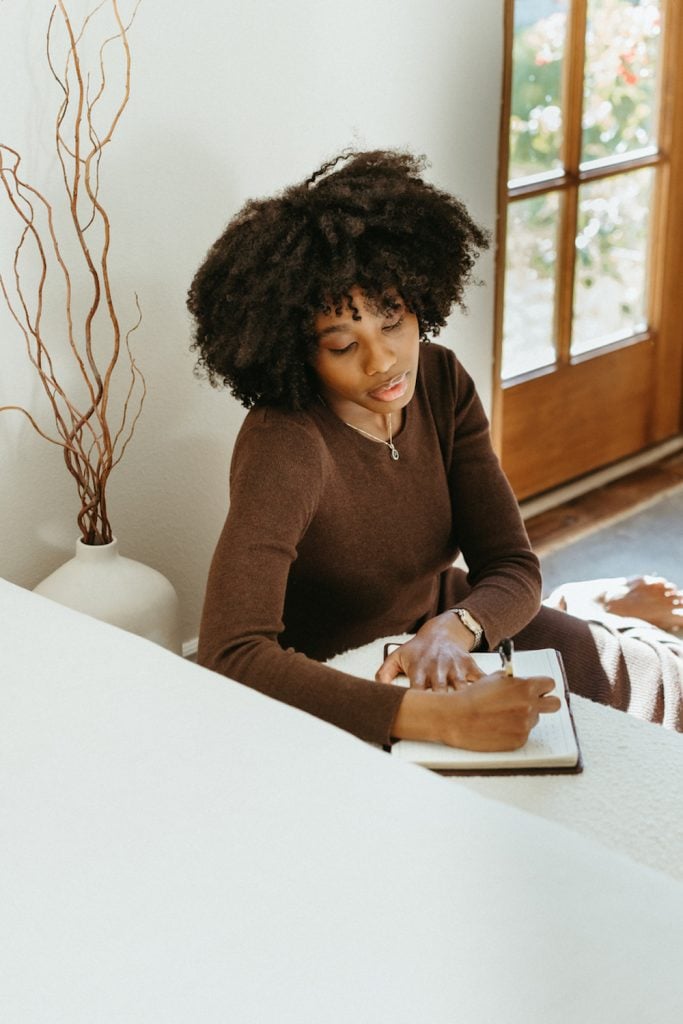
Tryptophan Benefits
There is limited research and studies to show that tryptophan is directly correlated to treating things like mood swings and irritability. However, low levels of tryptophan have been seen in people with depression. Some claim up to 60 milligrams of L-tryptophan daily may help improve mood or ward off mental health disorders such as depression. More on tryptophan supplements, below.
Regardless, tryptophan is the precursor to serotonin, and serotonin affects mood and sleep quality. Tryptophan is necessary for making proteins and other important molecules in your body.
Are tryptophan supplements safe?
Although there are many foods high in tryptophan, it can be taken as a supplement. It is likely safe at moderate doses. However, always consult with your doctor by changing your supplement routine. Occasional side effects may occur (heartburn, stomach pain, and more). They could become more serious if you’re also taking medication that influences your serotonin levels, such as antidepressants.
10 Foods High in Tryptophan
In addition to these tips for sleeping better, consuming foods high in tryptophan might be the ticket to the most restful night of your life.
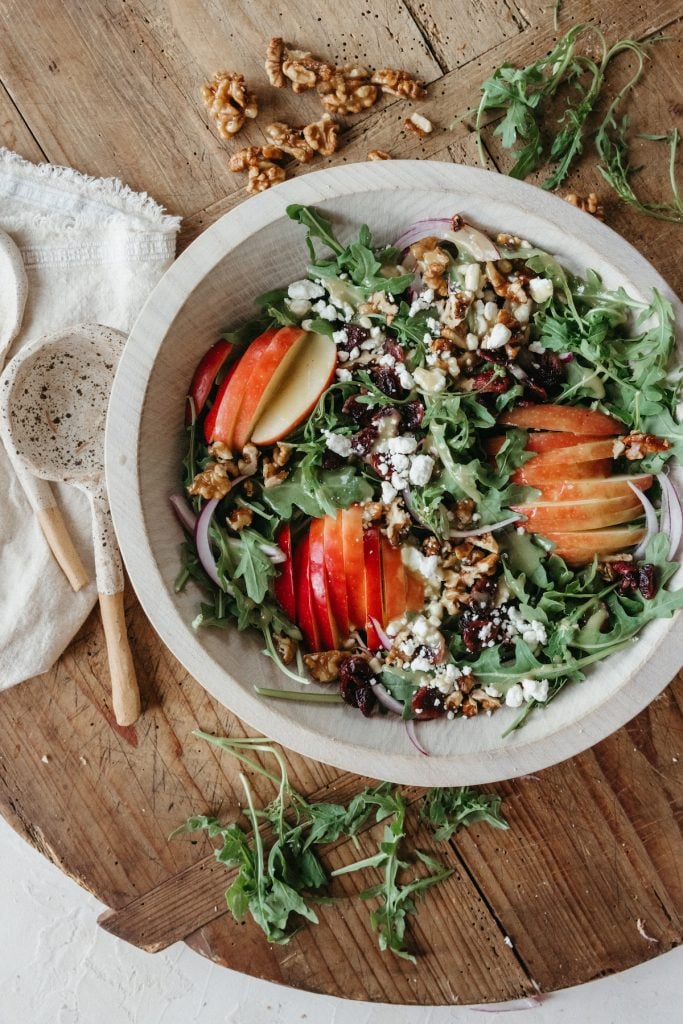
Walnuts
One serving of walnuts—about a handful—contains 318 mg of tryptophan. Alongside the sleep-promoting amino acid, walnuts are also a strong source of healthy fats and protein. While they add a tasty crunch to this salad, walnuts make for a tasty pre-bedtime snack an hour or two before going to sleep.
Recipe: Apple Walnut Salad
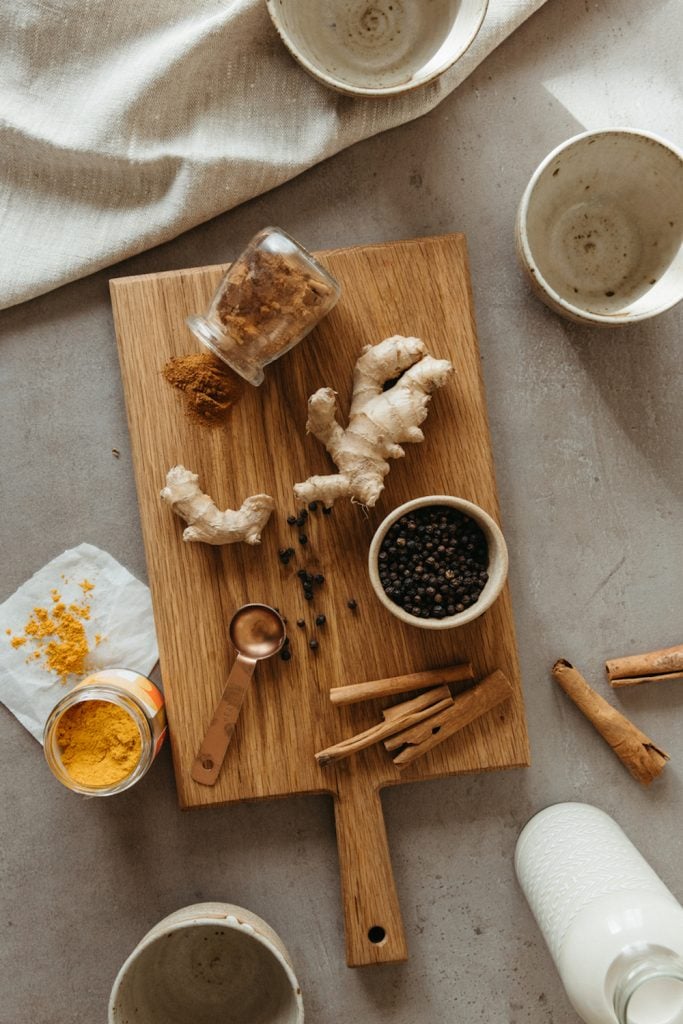
Milk
Whole milk is one of the largest sources of tryptophan, including 732 milligrams per quart. However, 2% reduced fat milk is also a good source, coming in at 551 milligrams per quart.
Recipe: Golden Milk
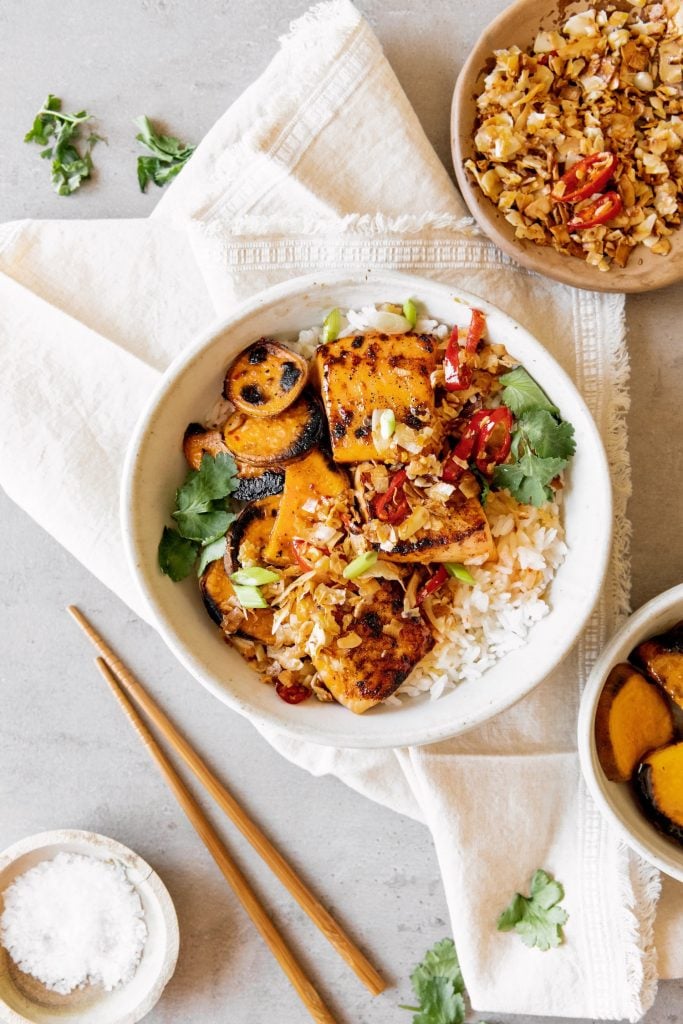
Salmon
Wild-caught salmon is one of the healthiest foods, due to its high concentration of anti-inflammatory omega-3 fatty acids. It also contains key vitamins. As a great source of protein, salmon also contains a lot of tryptophan. A 6-ounce fillet contains a whopping 570 mg (203% of the RDI).
Recipe: Hot Honey Glazed Salmon
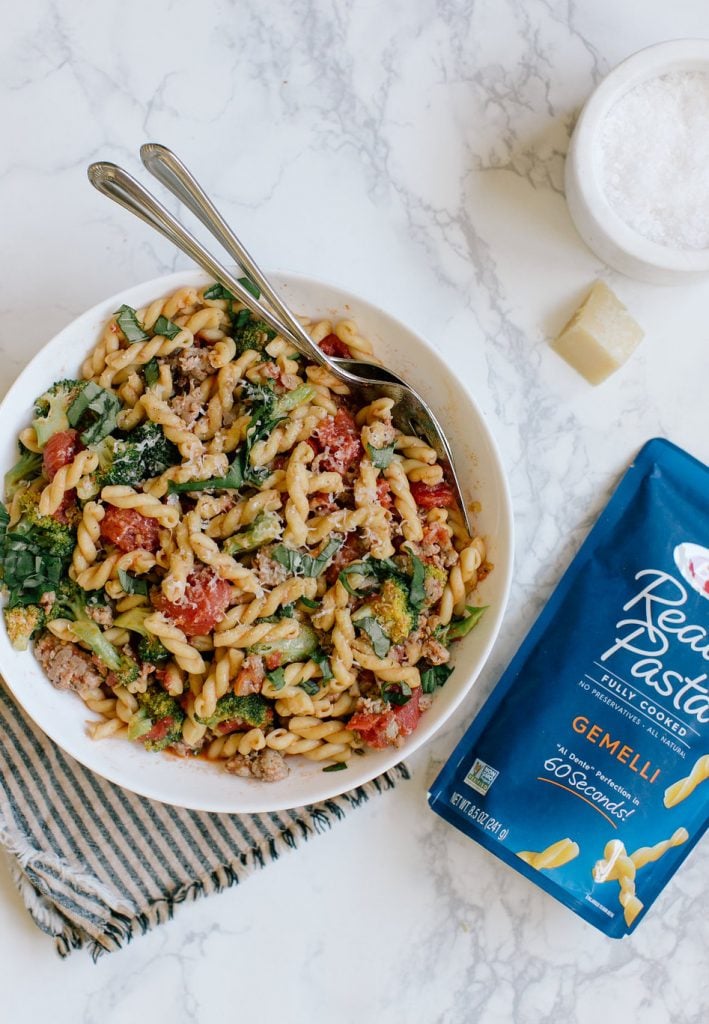
Turkey
About two servings of turkey contain about 410 milligrams of tryptophan—close to the daily requirement of this important nutrient.
Recipe: Gemelli with Turkey Sausage and Broccoli
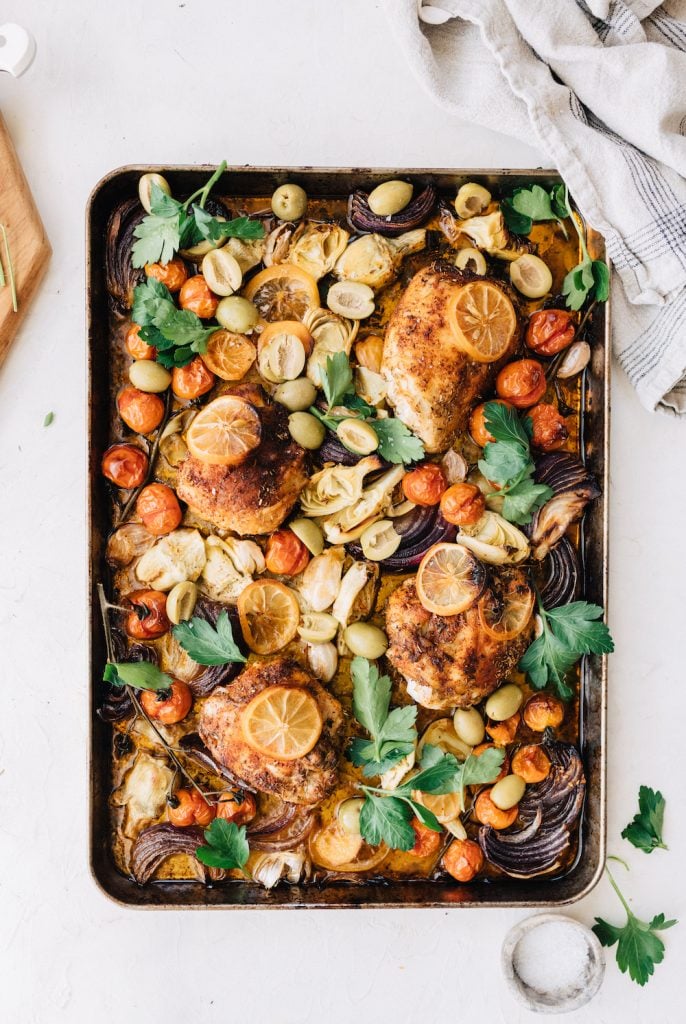
Chicken
Although turkey is a significant source of tryptophan, it isn’t the largest. Light meat contains 410 milligrams per pound (raw) and dark meat contains 303 milligrams per pound. Chicken also contains high amounts of tryptophan, with light meat containing 238 milligrams per pound, and dark meat containing 256 milligrams per pound.
Recipe: Lemony Sheet Pan Chicken With Artichokes and Spring Veggies
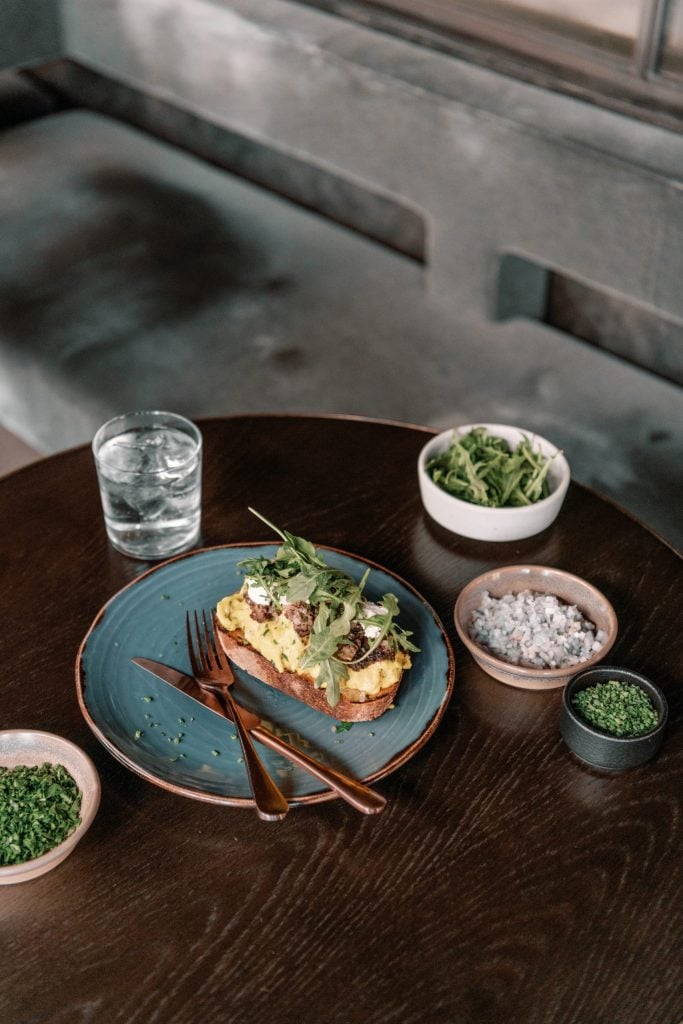
Eggs
Eggs are rich in tryptophan. They also contain significant amounts of Vitamin A, B12, and selenium. One large hard-boiled egg provides 6.3 grams of protein and 27% of the RDI for tryptophan.
Recipe: Scrambled Egg and Mushroom Toast
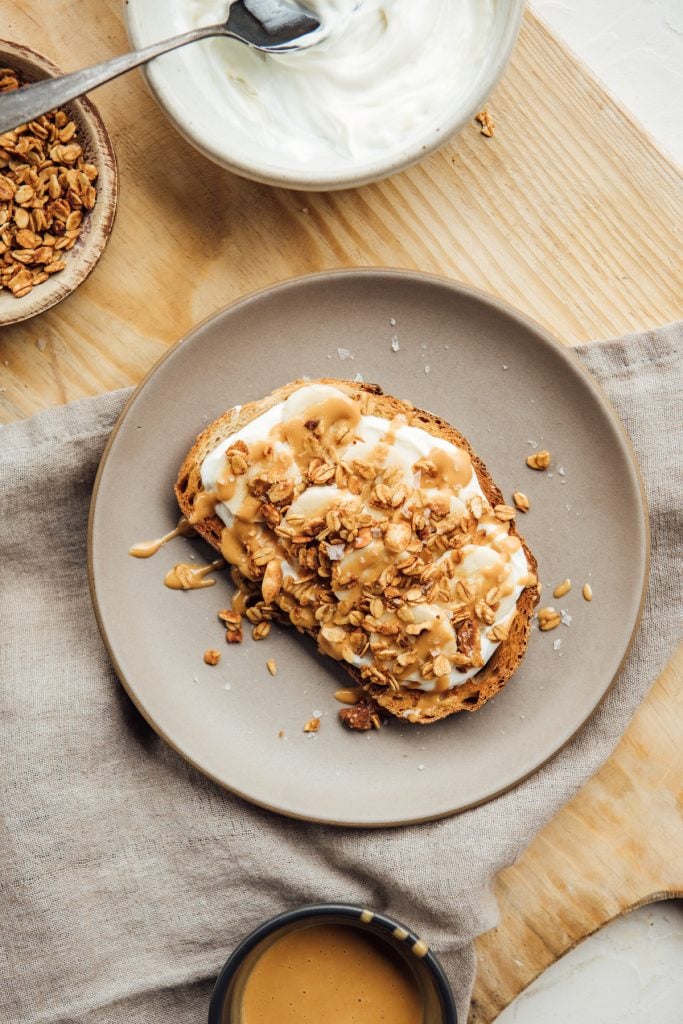
Greek Yogurt
Given its high protein count, Greek yogurt is rich in tryptophan. Some personal trainers swear by Greek yogurt before bed.
Recipe: Yogurt Toast with Peanut Butter and Banana
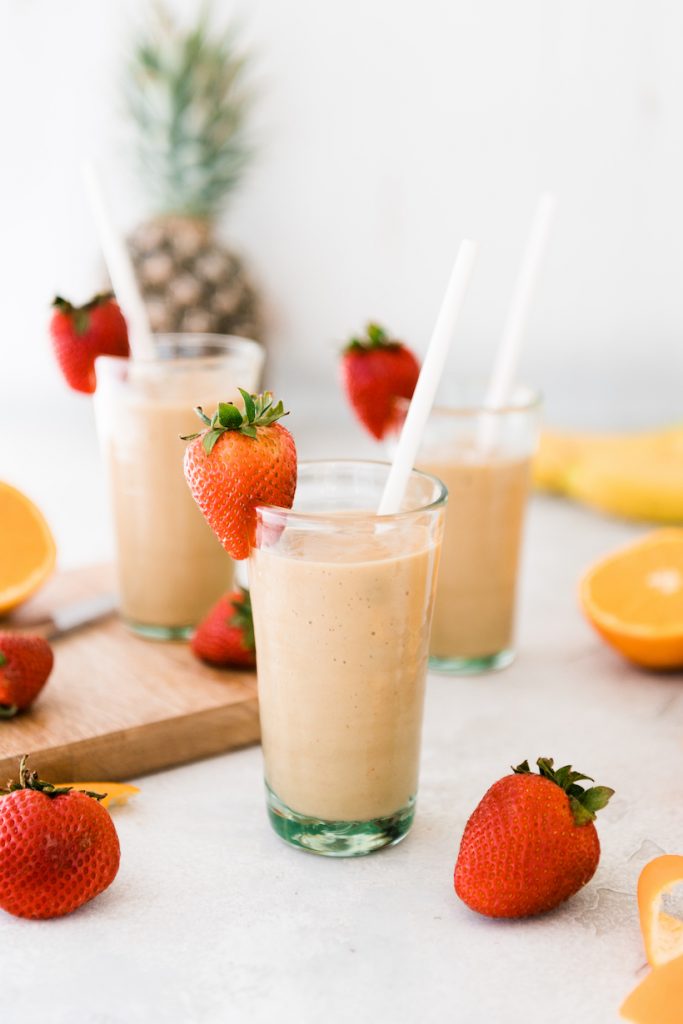
Pineapple
Pineapple contains plenty of tryptophan to boost serotonin in the brain. Additionally, pineapple is full of bromelain, which has anti-inflammatory properties.
Recipe: Tropical Pineapple-Ginger Smoothie
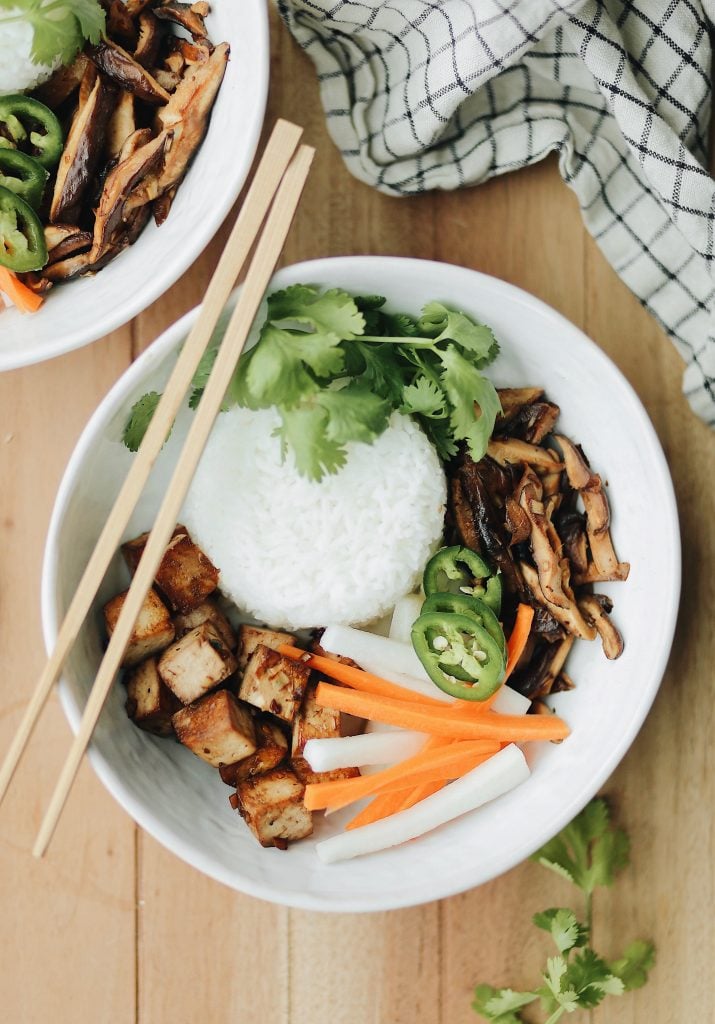
Tofu
As far as plant-based proteins are concerned, tofu is a wonderful source of tryptophan. Soy products contain plenty of this essential amino acid. For example, when you cook tofu, one cup of firm tofu packs an impressive 592 mg (212% RDI), and an 8-ounce glass of soy milk has 92 mg.
Recipe: Spicy Tofu Banh Mí Bowl
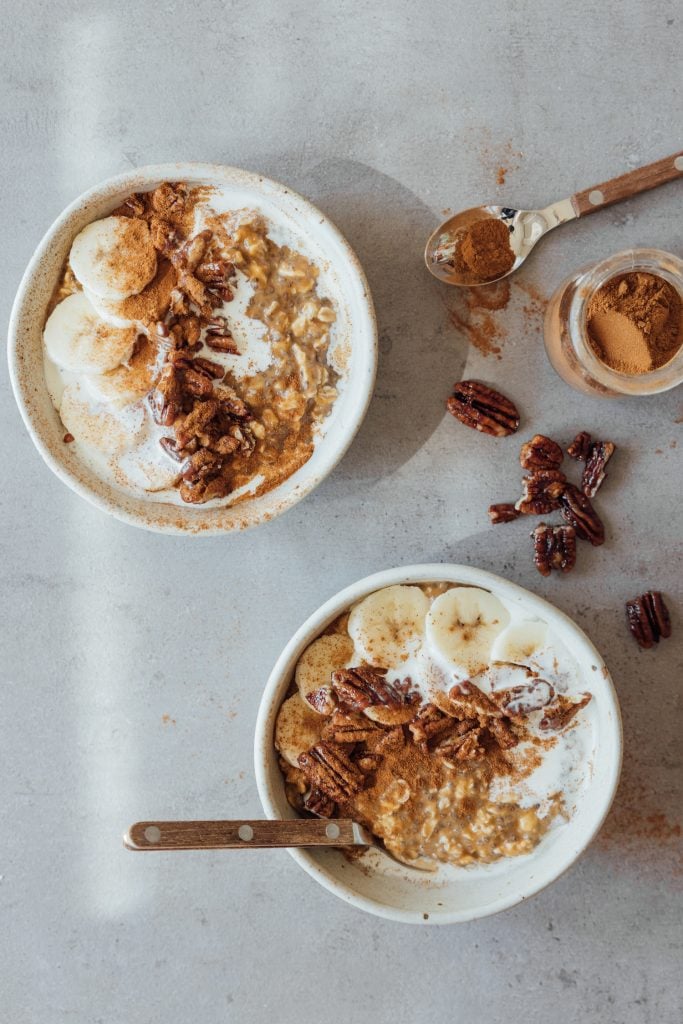
Oats
Prepared oatmeal can also be a good source of tryptophan, with 147 milligrams per cup.
Recipe: Pumpkin Overnight Oats
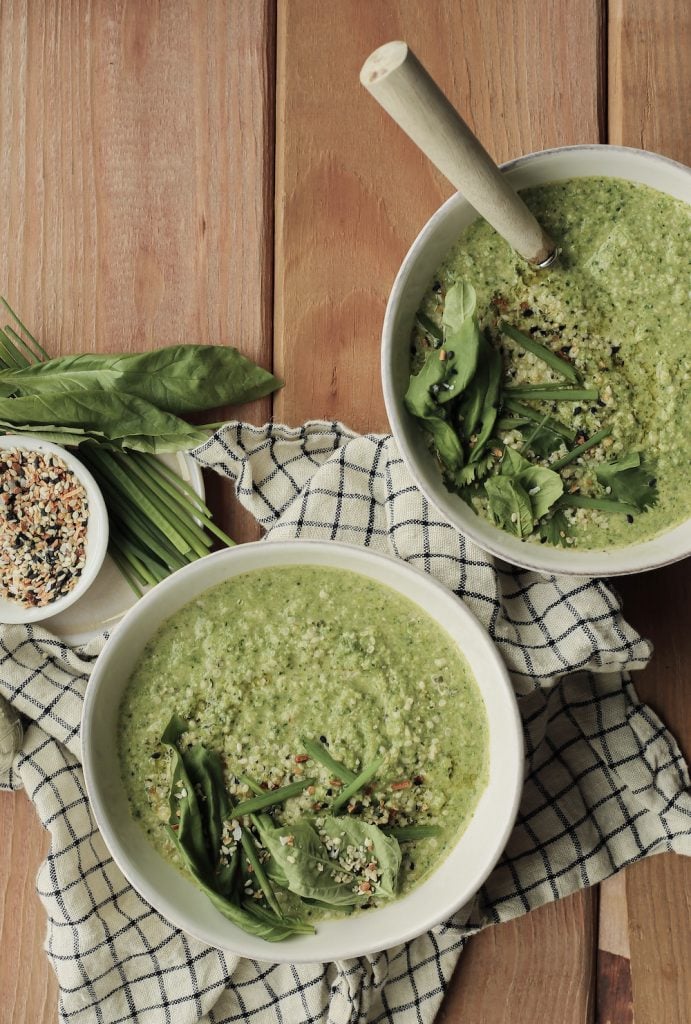
Cashews
The nuts with the most tryptophan are cashews, pistachios, and almonds. Cashews are rich in tryptophan and magnesium, both essential for overall health and controlling mood swings.
Recipe: Big Green Immunity-Boosting Vegetable Soup
The post Not Sleeping Well? A Nutritionist Says These 10 Foods Could Be Sleep’s Secret Weapon appeared first on Camille Styles.
]]>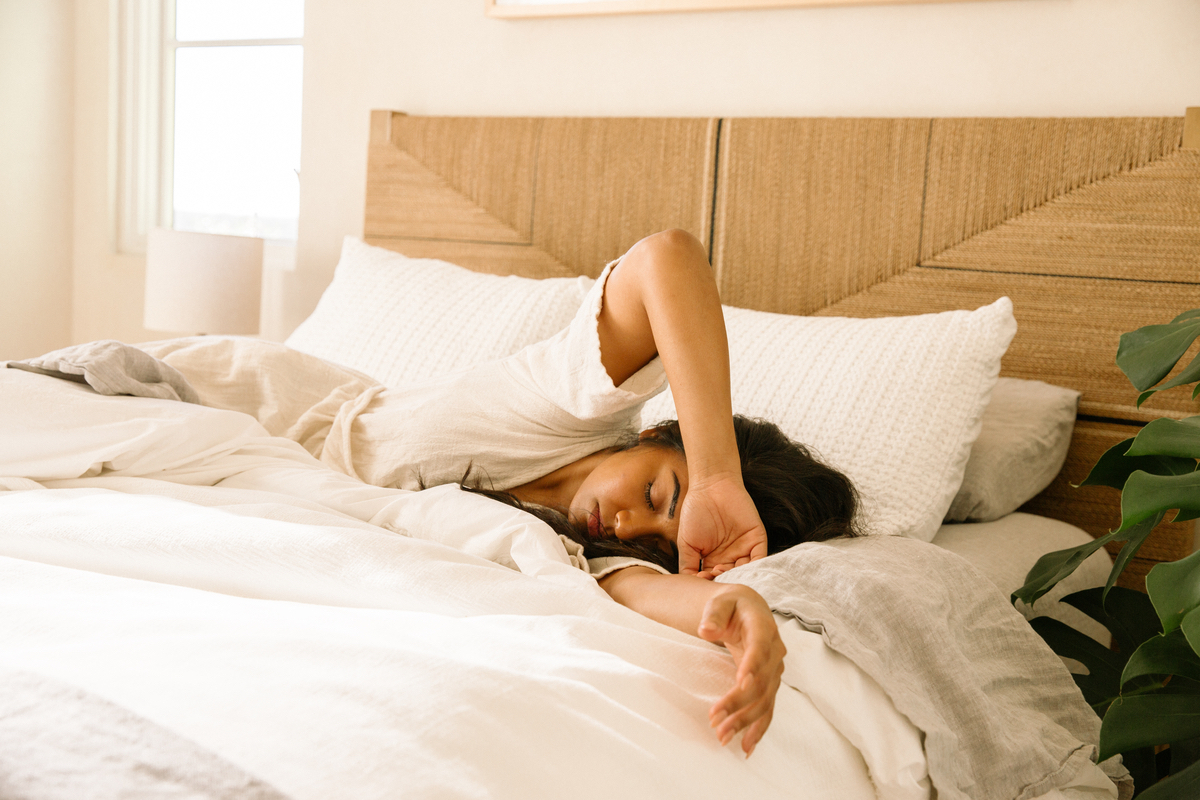
Eat right, sleep tight.
The post 10 Foods a Nutritionist Swears by for Longer, More Restful Sleep appeared first on Camille Styles.
]]>
Counting imaginary sheep and pleading with the sandman for a good night’s sleep? We empathize. In fact, the quest for restful zzz’s unites us a whopping 50-70 million of us. In a world filled with endless notifications, overflowing schedules, and highly-processed treats, it’s no surprise sleep is hard to come by. Fortunately, sweet dreams can be a nightly reality. Supportive daily habits and nourishing foods fit the bill. With that in mind, we’re diving into foods that help you sleep—powerhouse ingredients to put your mind at rest. Your bedtime snack just got an upgrade.
image above by Riley Reed
- How does diet impact sleep?
- Melatonin-Rich Foods to Reach For
- Can a melatonin supplement improve your sleep?
- Eat Tryptophan-Packed Foods
- Blood Sugar and Sleep: A Two-Way Street
- Sneaky Culprits That Make Sleep More Difficult
- Beyond diet, what encourages a good night's rest?
- Hot and Cold Therapy for Better Sleep
- 10 Foods That Help You Sleep

How does diet impact sleep?
The link between diet and sleep is profound. On one end of the spectrum, a diet rich in balanced nutrients, minimally-processed foods, and healthy fats provides the body with tools to regulate sleep patterns. In part, we have stable blood sugar to thank! Conversely, indulging in high-sugar and heavily processed foods can disrupt our sleep cycles, leading to difficulties falling asleep and maintaining deep rest. Plus, if you know, you know: large meals close to bedtime may result in indigestion. Of course, caffeine and alcohol are also known to wreak havoc on our sleep patterns too.
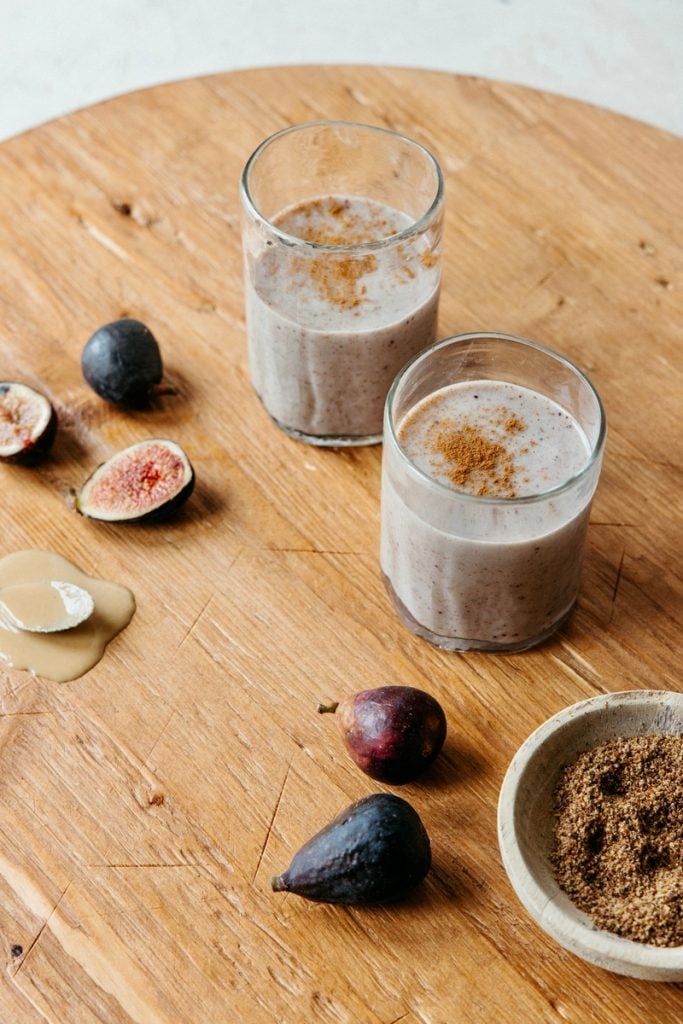
Melatonin-Rich Foods to Reach For
You’ve probably heard of melatonin (it helps regulate our sleep-wake cycle), but did you know that certain foods contain it? Ultimately, adequate melatonin enhances our ability to fall asleep and stay asleep. Although most people produce enough melatonin for their general needs, research shows that foods high in melatonin can improve sleep. Cherries, particularly tart cherries, are a top choice. These little red powerhouses are packed with melatonin. Try a glass of tart cherry juice in the evening. Other melatonin favorites: pistachios, milk, and oats.
Get our full list of foods with melatonin here.
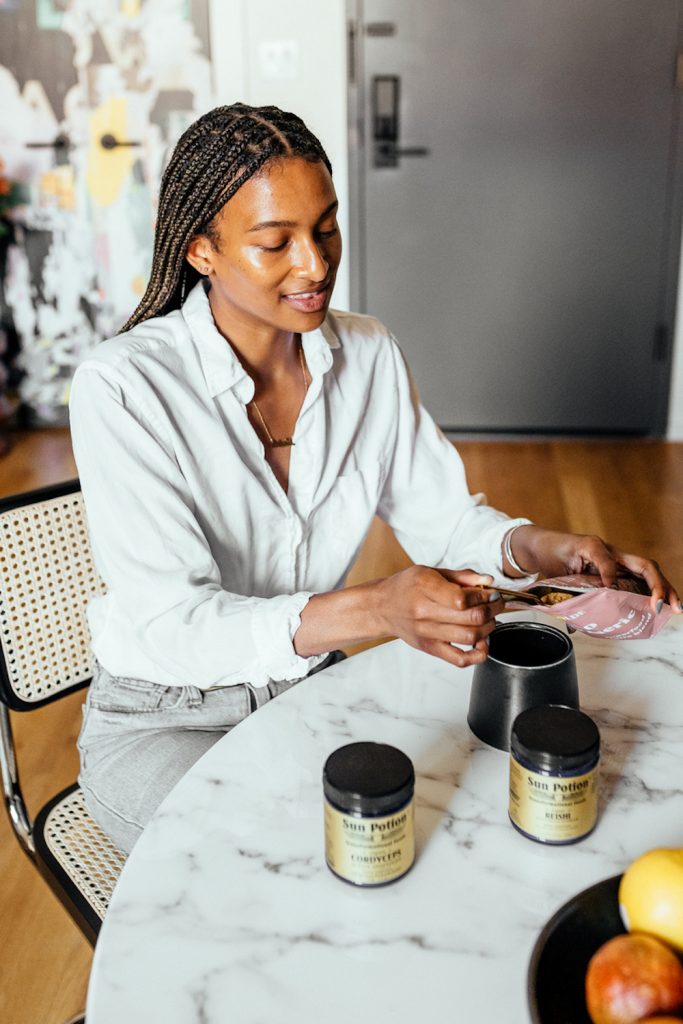
Can a melatonin supplement improve your sleep?
Depends. Melatonin is generally safe for short-term use, but studies on its long-term impact are limited. Immediate side effects are typically mild, but it can cause dependency, headaches, short-term feelings of depression, daytime sleepiness, dizziness, stomach cramps, and irritability. Additionally, melatonin can have strong effects on our sex steroid hormones. All in all, there may be more downsides than upsides to taking melatonin. Instead, you may want to try magnesium, l-theanine, ashwagandha, or a cup of chamomile tea.
Chat with your healthcare provider before adding new supplements to your routine!
Eat Tryptophan-Packed Foods
Along with melatonin-rich foods, ingredients with tryptophan are also your bedtime bestie. Tryptophan is an essential amino acid. It plays a key role in the production of serotonin, a neurotransmitter that contributes to feelings of relaxation. In other words, tryptophan-rich foods can promote better sleep. Turkey is famously known for its tryptophan content, and a modest turkey sandwich on sourdough might be a soothing bedtime snack. Other options? Greek yogurt, chicken, and tofu.
Get our full list of foods high in tryptophan here.
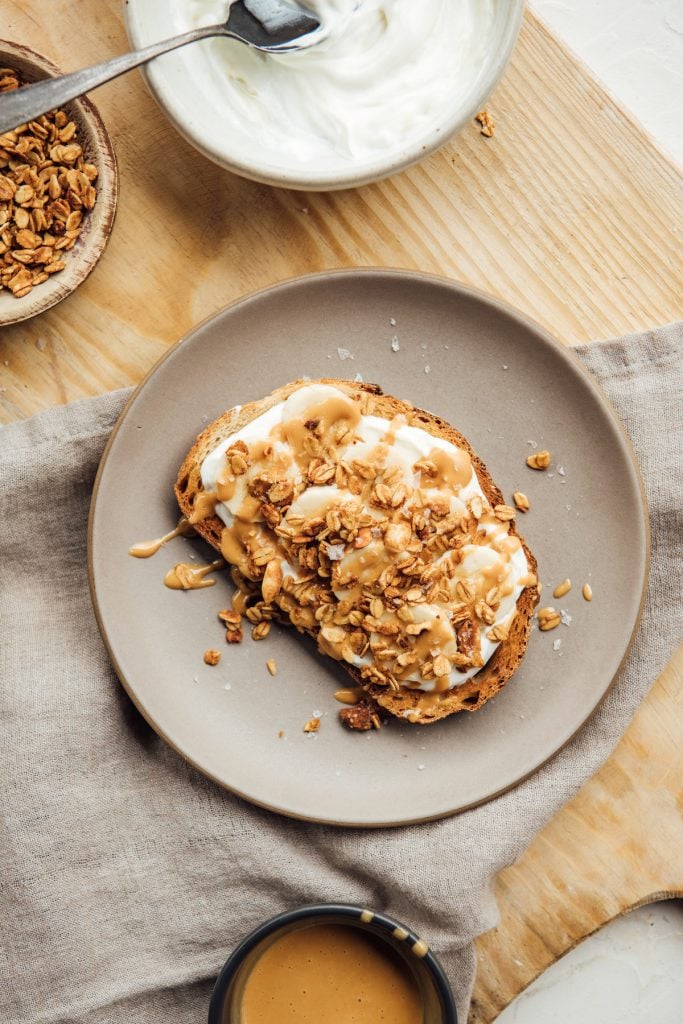
Blood Sugar and Sleep: A Two-Way Street
Melatonin and tryptophan aside, maintaining stable blood sugar levels is crucial for a good night’s sleep. When blood sugar levels fluctuate, it can lead to nighttime awakenings and disrupted sleep patterns. To achieve this balance, pair complex carbohydrates (like whole grains or fruit) with a source of protein (string cheese, Greek yogurt, cottage cheese, tofu, etc.) or healthy fats (nuts, coconut butter, avocado, etc.) Combining carbs with protein and/or fat releases glucose slowly, preventing the sudden sugar spikes and crashes that can interrupt your sleep. Curious to know if your blood sugar levels are within normal range? Consider wearing a continuous glucose monitor.
Sneaky Culprits That Make Sleep More Difficult
Unfortunately, there are certain foods (and bevvies) that make sleep more difficult—either to fall asleep or stay asleep. These are a few to keep in mind:
Caffeine: Coffee, caffeinated tea, energy drinks, and sodas are potent stimulants that disrupt sleepiness. Limit your caffeine intake, especially in the afternoon and evening. Instead, opt for a calming, soothing tea. And if you need an afternoon pick-me-up, consider these alternatives.
Alcohol: While alcohol may initially make you feel drowsy, it can disrupt your sleep cycle, leading to more fragmented and less restorative sleep. It’s best to enjoy alcohol in moderation and avoid it too close to bedtime.
Spicy meals: These can lead to indigestion and acid reflux, which can be particularly uncomfortable when you’re lying down.
High-sugar treats: Foods high in sugar can cause a rapid spike in blood sugar levels, followed by a crash. This fluctuation can lead to nighttime awakenings and disrupted sleep patterns.
Fried foods: Like spicy foods, high-fat meals can also lead to indigestion and discomfort, making it more challenging to fall asleep and stay asleep.
Acidic dishes: For some, acidic foods—like citrus fruits and tomato-based dishes—can cause acid reflux and heartburn, which can disrupt your sleep.
Excessive water intake: Yes, staying hydrated is essential, but consuming excessive amounts of water right before bedtime can lead to waking up frequently during the night to use the restroom. Space out your hydration earlier in the day!
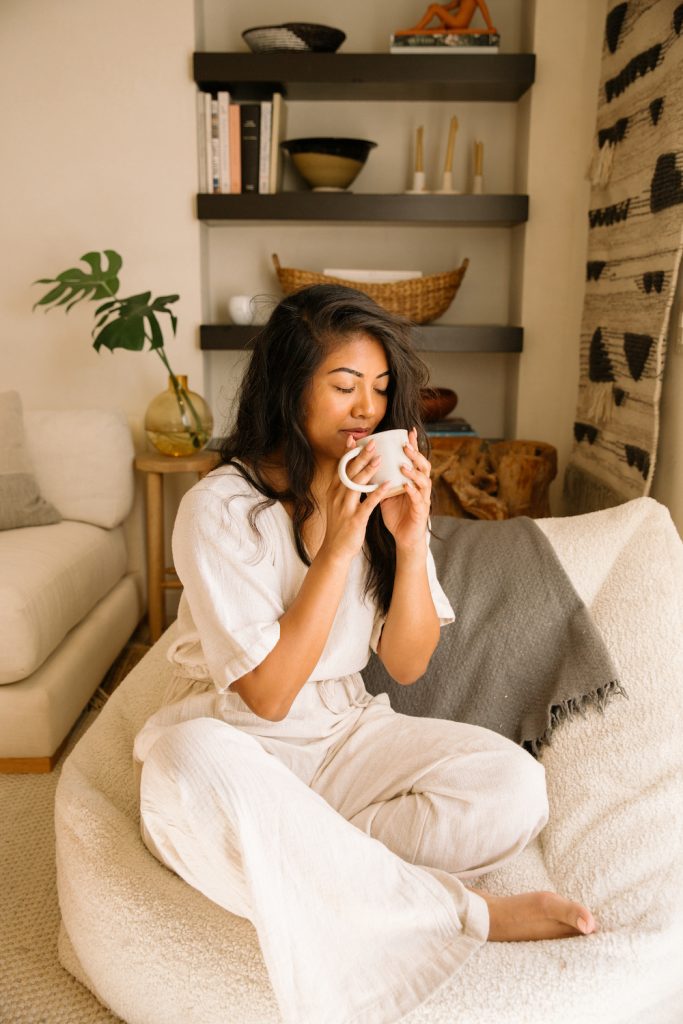
Beyond diet, what encourages a good night’s rest?
When it comes to getting a good night’s rest, your grocery basket is only one piece of the puzzle. Your habits, rituals, and stress levels all make a difference. Fortunately, there are practical strategies you can implement to inspire rejuvenating sleep.
Regular sleep schedule
Maintain a consistent sleep schedule as often as possible. Yes, even on weekends! This helps regulate your body’s internal clock and improves sleep quality.
Avoid long naps
Long—or late-afternoon—naps can disrupt your nighttime sleep. If you need to nap, keep it short (20-30 minutes).
Daylight exposure
Spending time outdoors during the day, especially in the morning, can help reset your circadian rhythm. Natural light exposure improves your body’s production of melatonin (our sleep hormone).
Limiting screen time
You know this, I know this, we all know this. The blue light emitted by smartphones, computers, and TVs can interfere with melatonin production and disrupt your sleep. Avoid screens at least an hour before sleep, or use blue light filters on your devices.
A bedtime routine
A calming bedtime routine signals to your body that it’s time to wind down. Activities like reading a book, taking a warm bath, listening to mellow classical music, or practicing relaxation techniques can be helpful.
An optimal sleep environment
This goes without saying, but ensure your sleep space is conducive to rest. This includes a comfortable mattress and pillows, a cool room temp, and minimal noise and light.
Regular exercise
Regular physical activity can improve sleep, but try to finish exercising at least a few hours before bedtime.
Stress management
Inevitably, stress and anxiety make it difficult to fall asleep. As you wind down, practice deep breathing, meditation, or yoga to alleviate stress and promote restful sleep.
Red or amber lights
Red or amber light—as opposed to blue light—is less likely to interfere with melatonin production. Opt for red or amber nightlights, dimming bright lights, or switch to candlelight where possible.
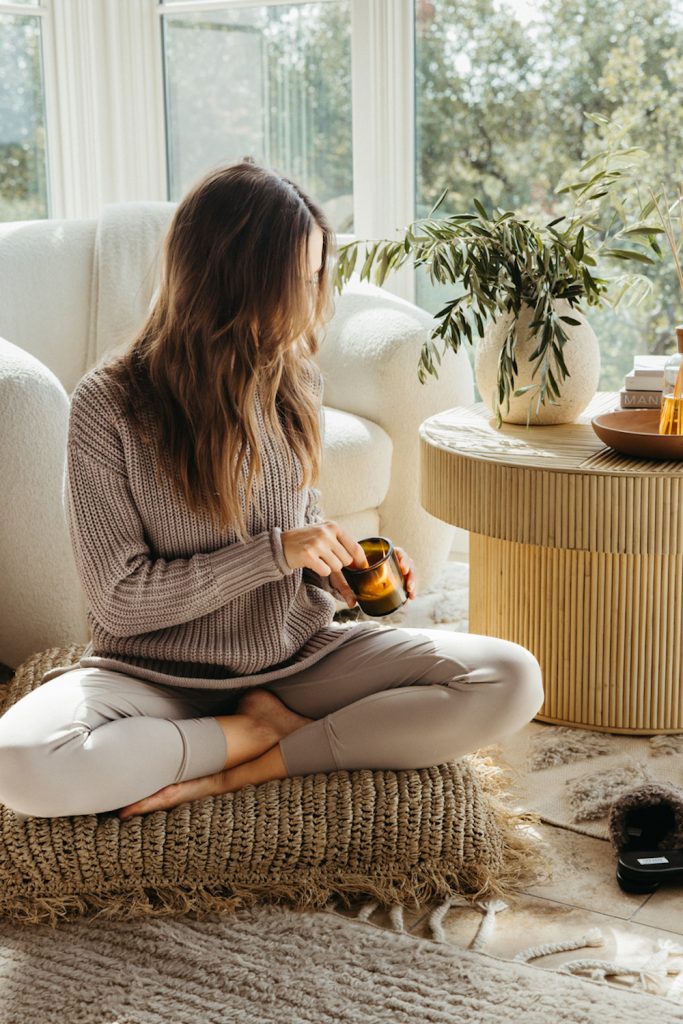
Hot and Cold Therapy for Better Sleep
Another non-food way to improve your sleep? Hot and cold therapy. Hot therapy—such as a warm bath or sauna—before bedtime, relaxes muscles and relieves tension. It’s particularly helpful for muscle soreness. Cold therapy, on the other hand, can be especially useful if you have difficulty falling asleep in a warm room. A cooler room temp (ideally no higher than 67 degrees Fahrenheit) can signal it’s time to sleep. Additionally, consider cooling pillows or bedding with moisture-wicking properties to reduce night sweats.
10 Foods That Help You Sleep
Time to elevate your sleepy time snack game. From cherries to chia seeds, stock your fridge and pantry with these bedtime wonders.
1. Cherries
As mentioned, cherries are a natural source of melatonin, a hormone that regulates the sleep-wake cycle. They’re an excellent choice for promoting sleep. Try this romaine, cherry, and feta salad for dinner.
2. Greek Yogurt
Plain Greek yogurt is high in protein, rich in tryptophan, and low in sugar, and it can help regulate blood sugar levels while you sleep. In need of ideas? We have plenty of Greek yogurt inspo. At the very least, opt for a small bowl of Greek yogurt with frozen cherries, chia seeds, and a drizzle of almond butter.
3. Chia Seeds
Speaking of chia seeds, they’re are an excellent source of fiber and healthy fats, and they’re another ingredient that can help keep blood sugar levels stable throughout the night. Prep a batch of this vanilla chia pudding to enjoy after dinner.
4. Oats
Oats contain complex carbohydrates that can increase the production of serotonin, a neurotransmitter that contributes to relaxation and improved sleep! Have a small bowl of oatmeal with nuts and seeds or keep a stash of these oatmeal cookies in your freezer.
5. Almonds
Almonds are a great source of magnesium, which helps reduce muscle tension and stress, making it easier to unwind before bedtime. Have a handful with a few pieces of dark chocolate or add a spoonful of almond butter to a small bowl of ice cream.
6. Fatty Fish
Fatty fish are high in omega-3 fatty acids, which can help reduce anxiety and improve sleep quality by regulating serotonin production. Enjoy a piece of whole-grain toast with a smear of cream cheese and a thin layer of smoked salmon. Otherwise, this hot honey-glazed salmon is a dinnertime winner.
7. Warm Milk
A warm glass of milk is rich in tryptophan, which can lead to better sleep. Add a scoop of your favorite chocolate protein powder and a drizzle of maple syrup for a decadent yet nourishing bedtime hot cocoa.
8. Leafy Greens
Leafy greens, like spinach, are high in calcium, which helps the brain use tryptophan to manufacture melatonin, enhancing sleep quality. Add leafy greens to your dinner or make a simple green smoothie prior to hitting the hay.
9. Turkey
Turkey is a good source of tryptophan, which, when combined with carbohydrates, can promote relaxation and improve sleep. Make a few turkey roll-ups to nosh on in the evening: deli turkey, a smear of Dijon mustard (or hummus), and a slice of cheddar cheese.
10. Tofu
Tofu is rich in protein, calcium, and isoflavones, a type of phytoestrogen that can increase serotonin. This study found that adults who ate two or more soy servings slept longer and reported better sleep quality! Add this banh mí bowl to your dinner repertoire or this vegan chocolate mousse for dessert.
The post 10 Foods a Nutritionist Swears by for Longer, More Restful Sleep appeared first on Camille Styles.
]]>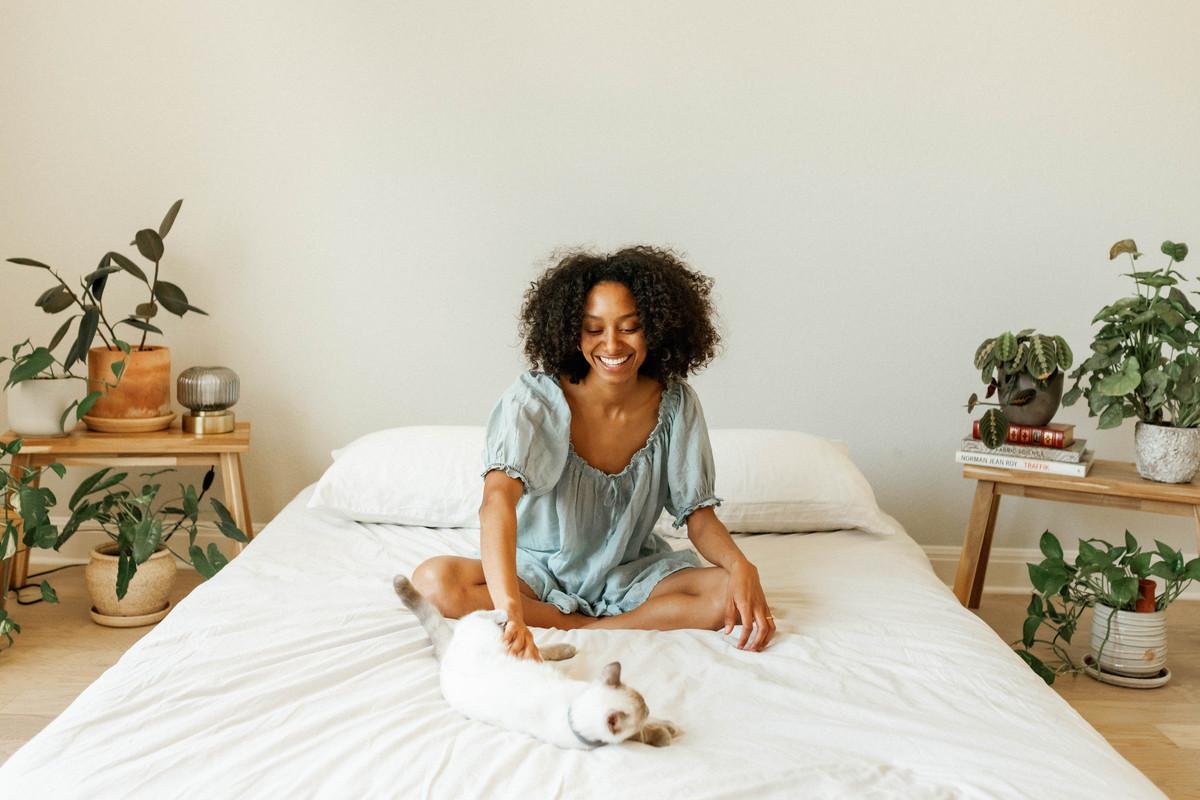
A good night's sleep within your reach.
The post Sleep Like a Pro—How to Reset Your Circadian Rhythm, Stat appeared first on Camille Styles.
]]>
In the thick of our fast-paced, modern world, most of us (a whopping 50-70 million!) find ourselves battling sleep disturbances. And these days, it seems a perpetual sense of restlessness wears like a badge of honor. But here’s the thing: your sleep hygiene matters. A lot. Unfortunately, thanks to hustle culture, social media habits, and that irresistible late-night Netflix binge, most of our circadian rhythms are out of whack. Fortunately, the path to better sleep doesn’t begin with chucking your phone and move off-grid (although that sounds peaceful, right?). Instead, it’s time to learn how to reset your circadian rhythm.
In this guide, we’re delving into the science behind circadian rhythms and unveiling practical steps to help you regain control of your sleep. Say goodbye to restless nights and groggy mornings—rediscovering restorative sleep never felt so timely.
Featured image from our interview with Sanetra Nere Longno by Michelle Nash.

What is the circadian rhythm?
The circadian rhythm is our internal biological clock (plants and animals have one too!). It regulates many physiological processes: sleep-wake cycles, body temp fluctuations, hormone production, and even aspects of our metabolism. It functions over the course of roughly 24 hours, and it’s heavily influenced by external cues. Most notably? Sunlight. In other words, think of the circadian rhythm as Mother Nature’s personal timepiece—keeping you in sync with the natural world’s ebb and flow.
Circadian Rhythm and Your Brain
To recap: the circadian rhythm is what makes you feel awake during the day and sleepy at night. But what happens when your internal clock isn’t synced? Inevitably, disruptions (i.e., artificial lighting, travel, an inflammatory diet, etc.) can lead to sleep disturbances. And being sleep deprived leaves your brain exhausted. In turn, your brain can’t function optimally. Short-term, it can impact everything from your cravings to your cognitive function. Long-term, clocking less than seven hours—consistently—can eventually raise the risk of developing Alzheimer’s.
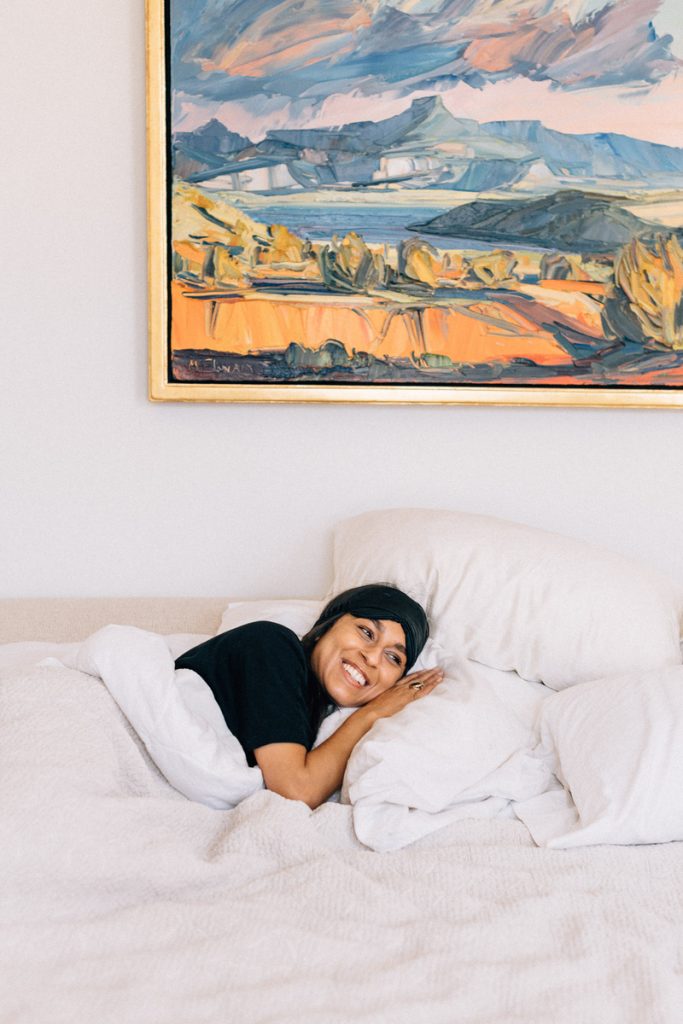
What causes disruptions to your circadian rhythm?
We hinted at them above, but quite a few factors can send your internal clock whirling:
Irregular sleep patterns
Frequent changes in your sleep schedule—such as night shifts, jet lag, or irregular sleep hours—can confuse your internal clock, leading to circadian rhythm disturbances.
Exposure to artificial light
Overexposure to artificial light in the evening (especially blue light emitted by electronic devices!) can signal your body to stay awake and interfere with your natural sleep-wake cycle.
Inadequate natural light
Insufficient exposure to natural daylight—whether due to working in a windowless environment or spending most of your time indoors—can disrupt your circadian rhythm.
Time zone changes
Hello, jet lag. Rapid travel across multiple time zones can confuse your body’s internal clock, making it challenging to adjust to the new local time.
Poor sleep hygiene
Doom scrolling in bed? Chugging coffee late in the afternoon? Engaging in activities that disrupt your sleep hygiene will interfere with your ability to fall asleep.
Stress
Inevitably, high stress levels can impact the quality of your sleep and lead to irregular sleep patterns, which, in turn, can disrupt your circadian rhythm.
Certain medical conditions
Conditions like sleep disorders (sleep apnea, insomnia, etc.), neurological disorders, and mood disorders often impact circadian rhythms.
Environmental factors
Noisy or uncomfortable sleeping environments, extreme temps, and other environmental factors are likely to affect circadian rhythms.
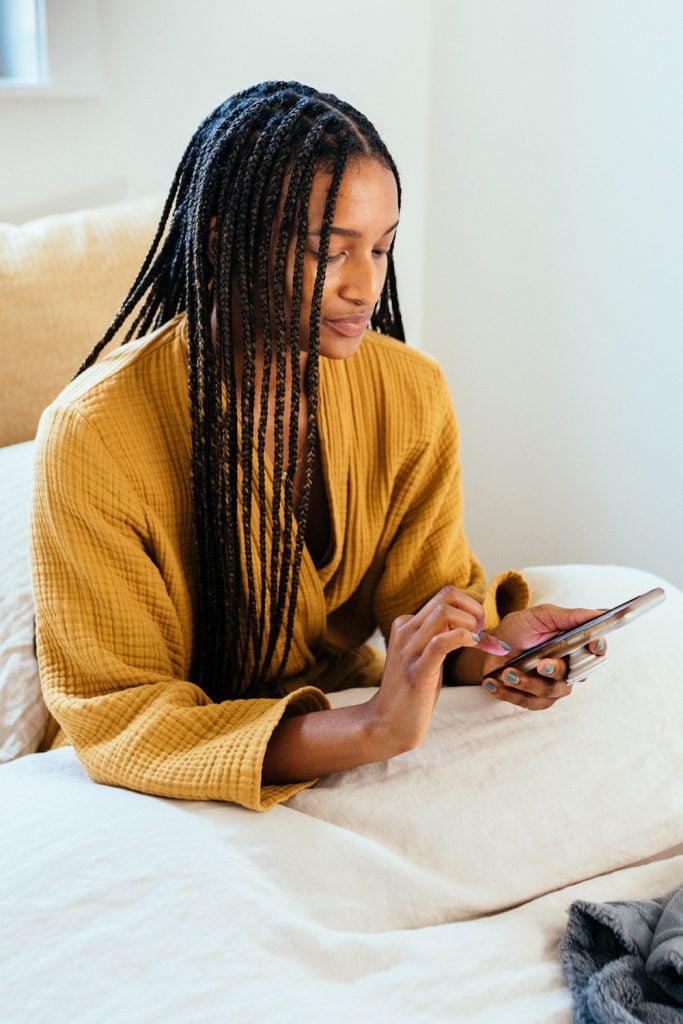
Are you getting too much blue light?
Whether you’ve stayed up late answering emails—or scrolling the ‘Tok—we’ve all spent nights glued to a screen. In turn, we’re bathed in blue light. And blue light can have unique effects on alertness, hormones, and sleep cycles. But where does it come from? Blue light is emitted by LED, fluorescent lights, and most electronic devices.
The issue with too much blue light (especially at night) is that it makes falling asleep very difficult. In fact, recent studies show it can elicit strong melatonin suppression. Not the goal! Some ways to combat blue light exposure: invest in a pair of blue blocker glasses, switch your device to “nighttime mode” after the sun goes down, and use red light therapy in your bedroom.
How to Know if Your Circadian Rhythm Is Off
Oftentimes, it’s obvious. That said, you can tell your circadian rhythm is off by paying attention to two things: your sleep patterns and daily functioning. Signs of a disrupted circadian rhythm include:
- persistent difficulty falling asleep (or staying asleep)
- frequent daytime sleepiness
- fluctuations in alertness
- mood disturbances
- concentration problems
Additionally, do you rely on stimulants—like caffeine—to stay awake? Or need sleep aids to fall asleep? If so, this may indicate a circadian rhythm imbalance.
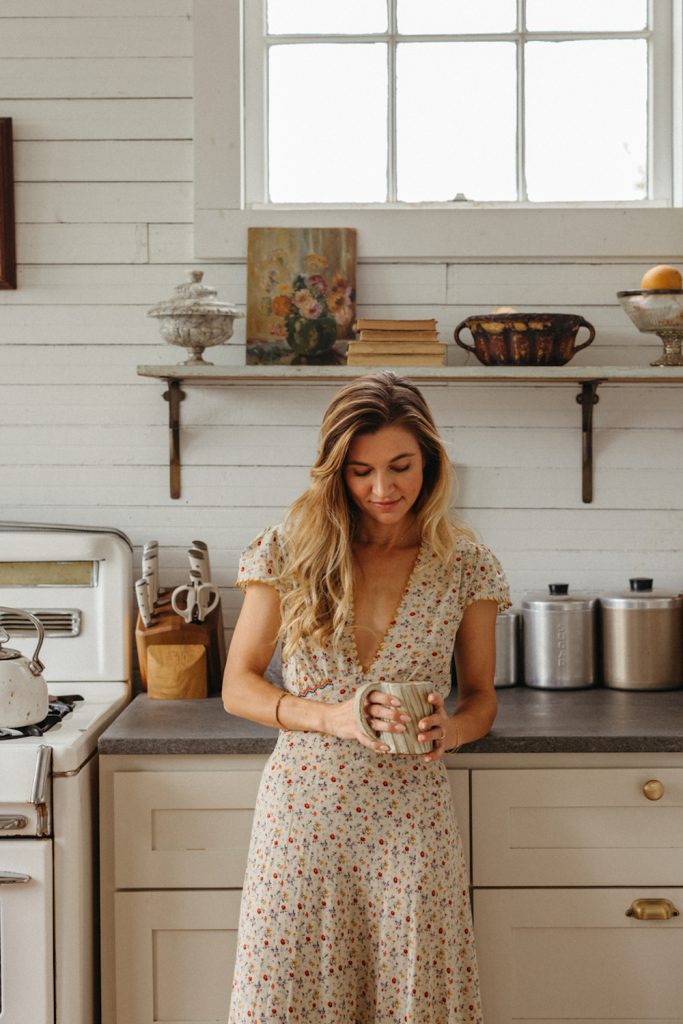
6 Ways To Reset Your Circadian Rhythm
With all of that in mind, how can you reset your circadian rhythm? Luckily, resetting your internal clock isn’t an insurmountable challenge. Rather, think simple dietary and lifestyle habits that support optimal sleep patterns. And trust—an extra 45 minutes of shut eye goes a long way.
1. Embrace Sun Exposure
Of all the tips, this is foundational. After all, the most potent regulator of our circadian rhythms is natural light. Exposing yourself to sunlight in the morning—and throughout the day—can help reset your internal clock.
Try to spend at least 30 minutes outdoors each morning. If that sounds like an impossible task, break it up into chunks: brush your teeth outside, sip your coffee on your balcony, and go for a 10-15 minute walk. Even when it’s overcast, this counts! Ideally, do this without your sunglasses on. In the evening, also go outside. Eat dinner al fresco or watch the sunset! As the sun sets, it emits higher proportions of red and yellow light, which calm the brain and signal your body clock to prepare for sleep.

2. Limit Artificial Lights
As mentioned, our screens emit a blue light that can trick our brains into thinking it’s still daytime, disrupting our circadian rhythms. To counteract this, reduce screen time at least an hour before bedtime. If you must use screens, consider using blue light-blocking glasses or enabling “night mode” on your devices. Furthermore, tune your home lighting to sync with your circadian rhythm (if this peaks your interest, here’s a great read). We also love using candles and red light therapy to further offset artificial light.
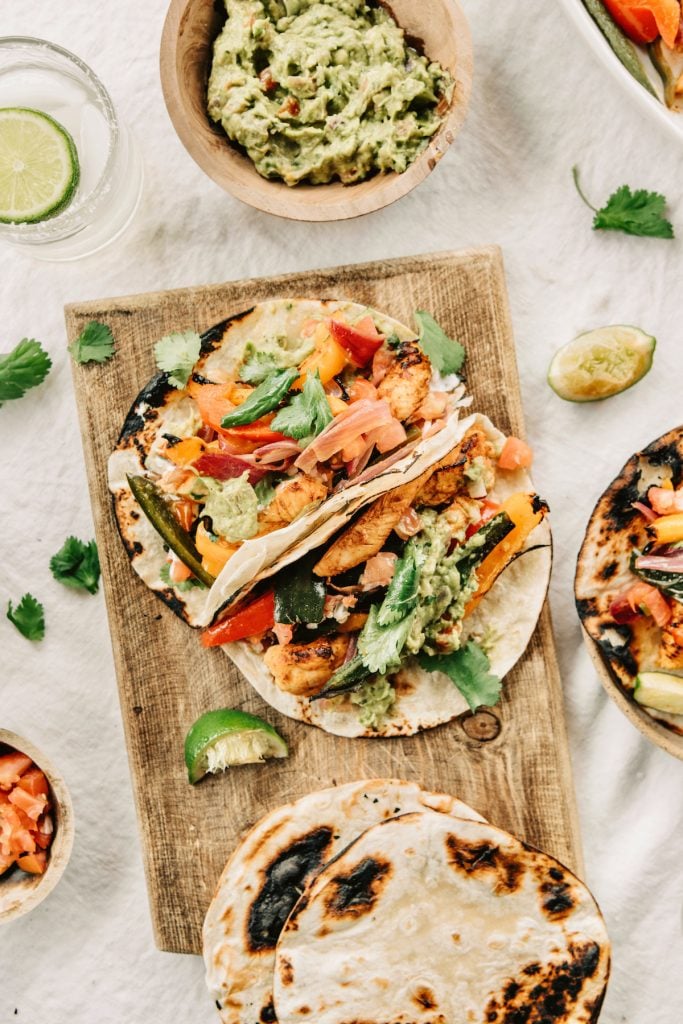
3. Keep Blood Sugar Steady
If your daily eats consist of a constant flow of sugar, you’re likely getting less restorative sleep. In one study, researchers tracked diet and sleep for a group of healthy adults. They found that—indeed—food choices during the day negatively impact sleep. In other words, what you eat can help you fall asleep, stay asleep, and wake up rested. When in doubt, keep blood sugar in check. Prioritize protein (which keeps blood glucose steady) and opt for fiber-rich meals. As far as bedtime snacks are concerned, choose something high in melatonin or tryptophan. Of course, limiting alcohol is key as well.
4. Naturally Increase Melatonin Levels
Speaking of melatonin, naturally increasing this hormone does wonders for your circadian rhythm. After all, it serves as a key regulator of our sleep-wake cycle. In response to decreasing light in the evening, melatonin increases. This surge signals to the body that it’s time to wind down and prepare for sleep. In other words, a healthy release of melatonin—at the appropriate time—contributes to a well-functioning circadian rhythm.
How to increase yours? Eat foods high in melatonin (tart cherries, pistachios, eggs, etc.), maintain a consistent sleep schedule, keep your bedroom dark and cool, and create a relaxing nighttime routine.
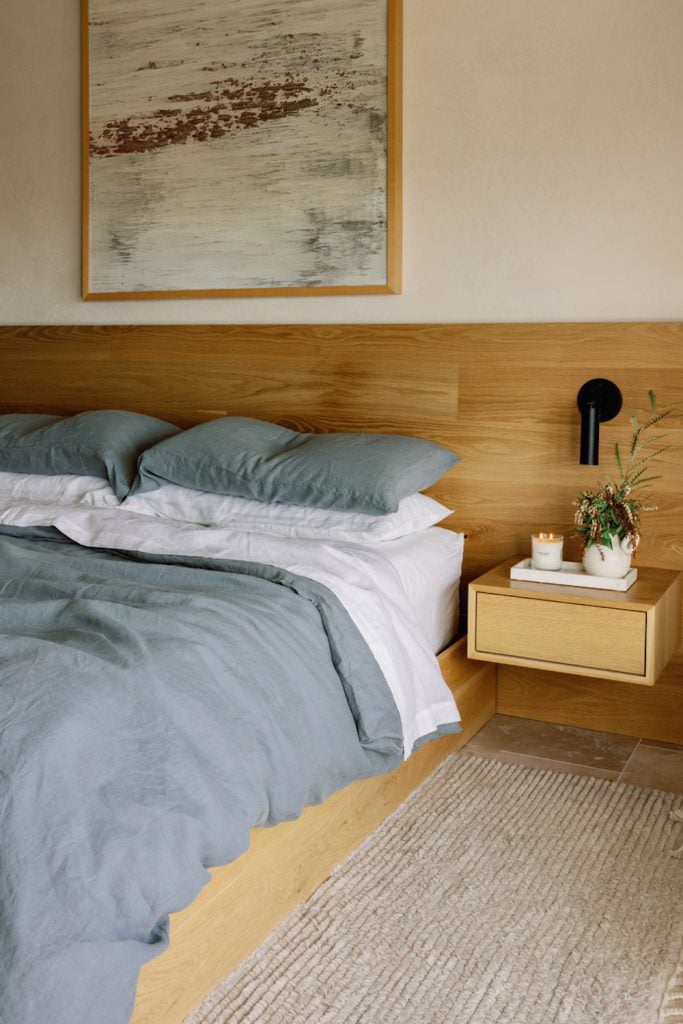
5. Optimize Your Sleep Environment
This goes without saying, but your bedroom should be a sanctuary for sleep. Yes, sanctuary. Ensure your sleeping space is dark, quiet, and cool. Invest in an eyemask, earplugs, or a white noise machine if necessary. A comfortable mattress and pillows are also essential for quality sleep! Furthermore, use essential oils—like lavender, ylang ylang, and chamomile—in your bedroom. Aim to keep your phone charged in a different room and use a traditional alarm clock instead.
6. Exercise Regularly
Exercise—like sleep—is a universal healer. And in many ways, it can positively impact your circadian rhythm. Regular physical activity, particularly when done during daylight hours, helps realign your internal clock with the environment’s natural light-dark cycle. Additionally, exercise is a stress-reducer (which can disrupt the circadian rhythm). And no, this doesn’t require daily HIIT. Low-impact exercise, including walking, is fantastic.
Overall, incorporating exercise is a win-win: it enhances physical health, balances blood sugar, and contributes to a well-functioning circadian rhythm. The result? More restorative sleep patterns.
The post Sleep Like a Pro—How to Reset Your Circadian Rhythm, Stat appeared first on Camille Styles.
]]>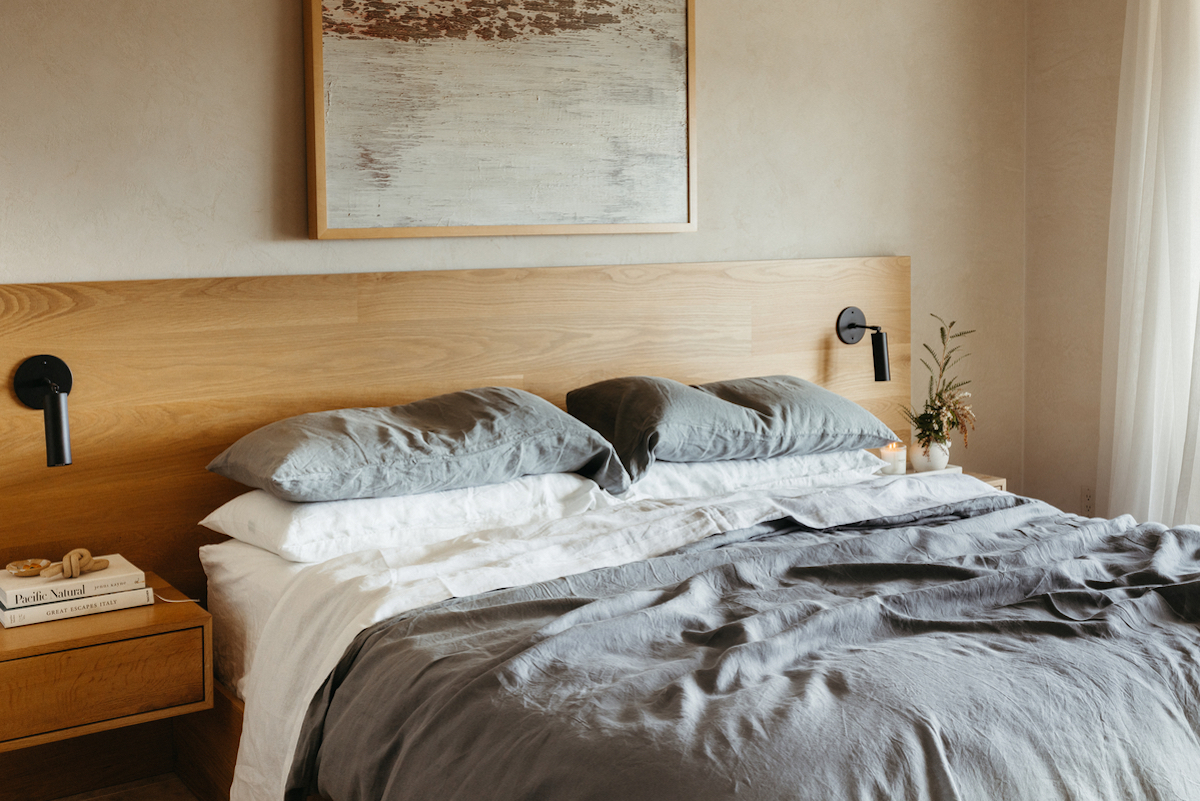
Eat well, sleep well.
The post Craving Better Sleep? 10 Melatonin-Rich Foods a Nutritionist Eats for Quality Rest appeared first on Camille Styles.
]]>
It should come as no surprise that we love our beauty rest. From tips to getting a better night’s sleep to the best alarm clocks to help you quit your nighttime phone habit, we have the tools to help you clock your zzz’s. And given the busyness of our day-to-day lives, it’s especially important to prioritize sleep. After all, not clocking enough hours can lead to slower cognitive function, more cravings, and irritability. Along with establishing good sleep hygiene—like a nighttime routine—did you know that nutrition plays a role in how well you sleep? That’s right. Your diet can greatly impact the sleep you are (or aren’t) getting. Today, we’re diving into the power of melatonin and foods high in melatonin.
Ahead, learn everything you need to know about melatonin and delicious recipes to get you started. A good night’s rest might be a handful of pistachios away.
Featured image by Michelle Nash.

What is melatonin?
Known as the “hormone of darkness,” melatonin is produced in response to nighttime. It is essential for good sleep. In essence, melatonin helps with the timing of our circadian rhythm (24-hour internal clock). Located in the middle of the brain, this unique hormone is created by the pineal gland. It functions with the sun. Meaning, more melatonin is made when the sun goes down, and less melatonin is made when the sun comes up. Although most people produce enough melatonin for their general needs, research shows that foods high in melatonin can improve sleep.
How Melatonin Affects the Body
Melatonin’s main job is to regulate night and day cycles. Said differently: Melatonin manages our sleep-wake cycles. Darkness causes the body to produce more melatonin, signaling the body to prepare for sleep. Light, on the other hand, decreases melatonin production. In turn, light signals the body to prepare for wakefulness. By viewing light first thing in the day (hello, sunlight!), you set in motion these two timers. One for wakefulness that starts immediately and one for sleepiness that starts later in the day.
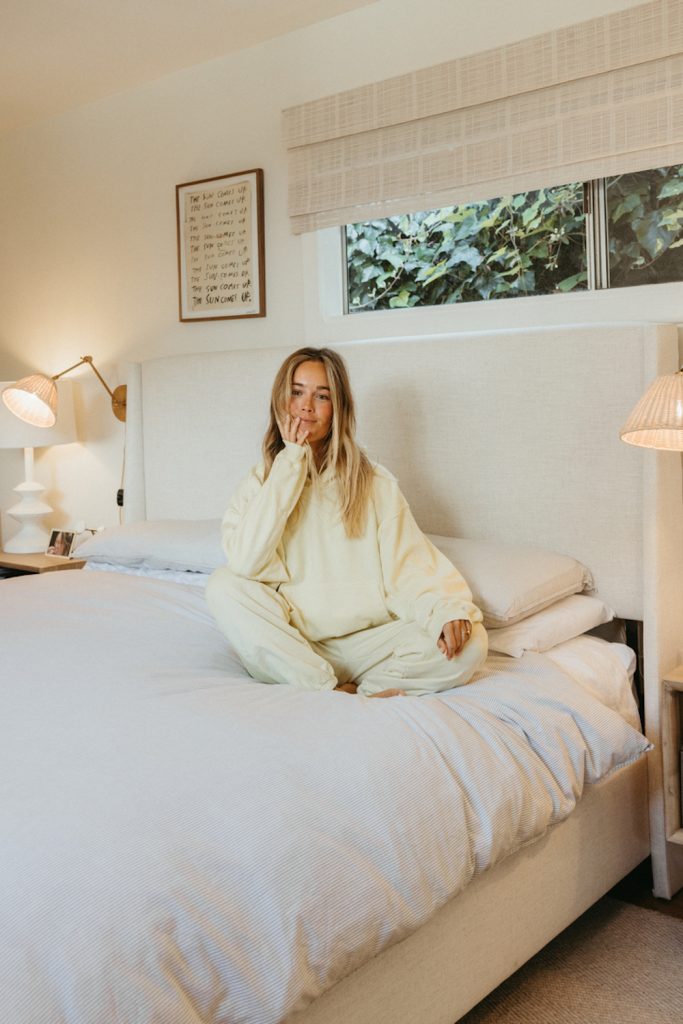
Blue Light Exposure and Melatonin Suppression
Whether you’ve stayed up answering emails, finishing a lengthy work task, aimlessly scrolling through social media, or binging episodes of your favorite shows, we’ve all spent late nights in front of a screen. Thus, we’ve all felt the effects of too much blue light. Blue light is a portion of the visible light spectrum. It can have unique effects on alertness, hormone production, and sleep cycles. This wavelength of light is emitted by LED, fluorescent lights, as well as most electronic devices.
The issue with too much blue light, especially at night, is it makes falling asleep much more difficult. In fact, recent studies show that indoor room light (i.e., blue light from fluorescent bulbs) can elicit strong melatonin suppression. This suggests that individuals who habitually expose themselves to light during nighttime hours can experience reduced melatonin levels. In turn, perturbed sleep rhythms. Some ways to combat blue light exposure include:
- Invest in a pair of blue blocker glasses.
- Switch your device to “nighttime mode” after the sun goes down.
- Make your bedroom a screen-free zone.
How Sleep Deprivation Impacts the Brain
Sleep deprivation is a typical consequence of melatonin suppression. Being sleep deprived leaves your brain exhausted and body hungry. Particularly when it comes to brain health, sleep is key. When you’re tired, your brain can’t perform its duties as well. You may also find it more difficult to concentrate or learn new things.
Furthermore, the signals your body sends to your brain may also be delayed, decreasing your coordination and increasing your risk for accidents. Long-term, clocking less than seven hours (consistently) means the brain has less time to clear beta-amyloid, and toxic levels can raise the risk of developing Alzheimer’s.
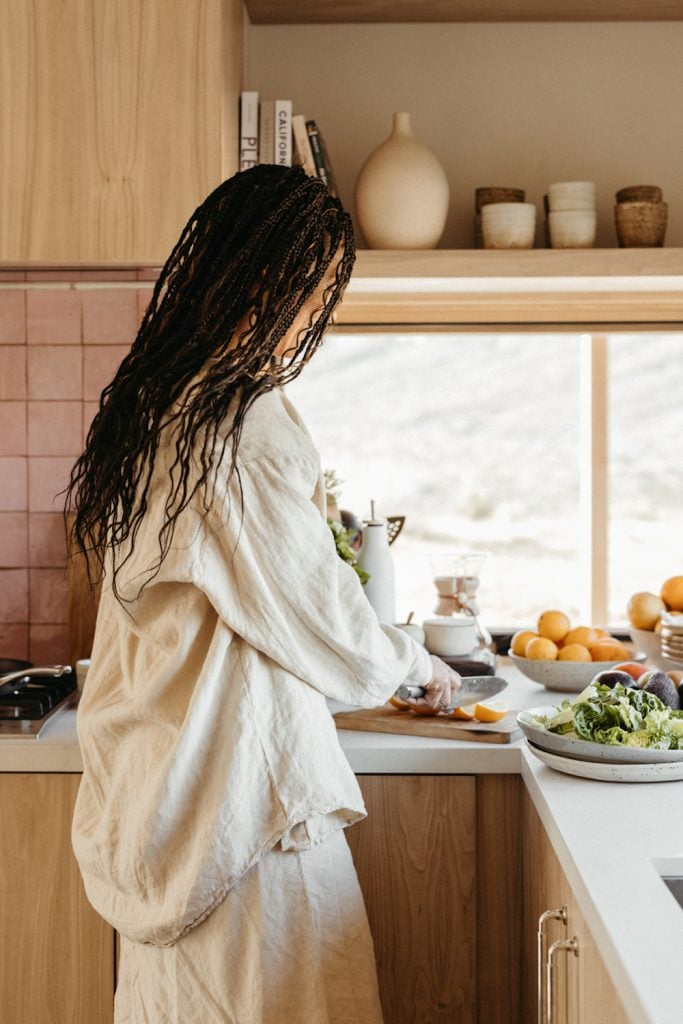
Diet’s Role in Sleep
Everything from exercise, to time spent in the sun, to how many hours we spend looking at our phones can impact sleep. All of those factors, in combination with the foods and drinks we consume, make a difference. While it may seem obvious why a double espresso after dinner (or a greasy, late-night cheeseburger) isn’t the best for restful sleep, the connection between daytime eats and nighttime sleep is less straightforward. However, we know that eating a healthy and nutrient-rich diet affects our brain health and our blood sugar levels. These, in turn, affect the quality of our sleep.
Food Helps Regulate Our Circadian Rhythm
In essence, eating less fiber, more saturated fats, and more sugar throughout the day is linked with lighter, less restorative sleep. In one study, researchers tracked diet and sleep for a group of healthy adults over the course of five nights and found that indeed, food choices during the day negatively impacted sleep.
As you can guess, there’s also a connection between sleep and how we metabolize food. Diet and food choices help regulate our circadian rhythm, meaning that what we eat helps us fall asleep, stay asleep, and wake up ready to refuel.
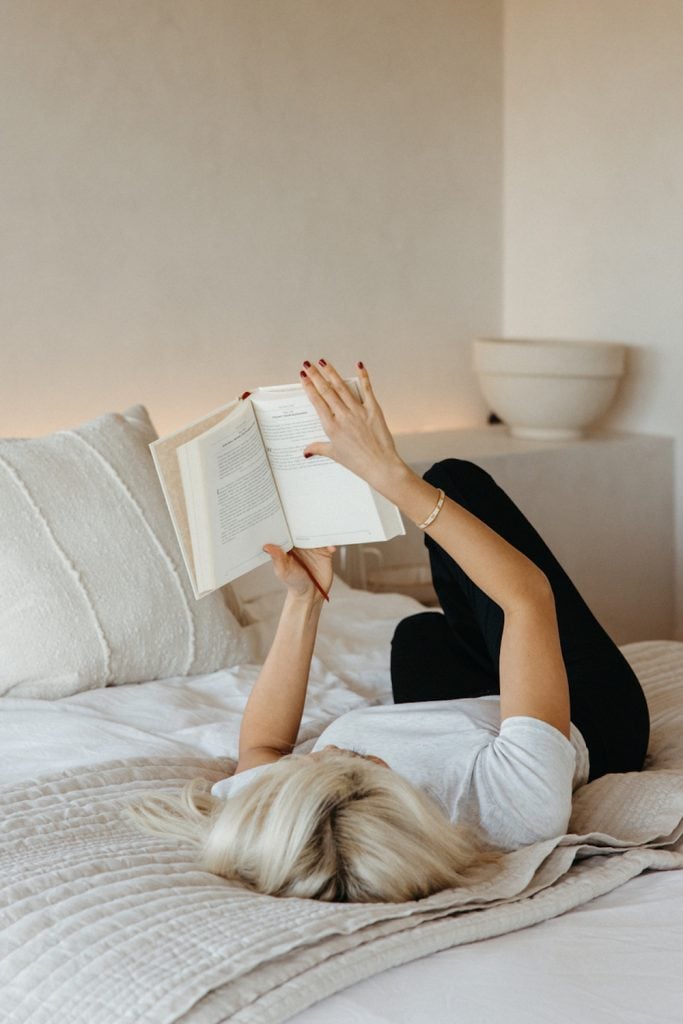
Do I need a melatonin supplement?
Stroll the vitamin aisle at your local grocery store or supermarket, and you’ll likely find melatonin supplements. Thanks in part to the pandemic, melatonin sales jumped 40% in 2020. At any rate, you might be wondering: My sleep isn’t great, should I take a melatonin supplement? This depends.
Melatonin is generally safe for short-term use, but studies on its long-term effects are limited. The immediate side effects of melatonin are typically mild, but it can cause dependency, headaches, short-term feelings of depression, daytime sleepiness, dizziness, stomach cramps, and irritability. Additionally, melatonin can have strong effects on our sex steroid hormones (the pathways related to estrogen and testosterone). All in all, there may be more downsides than upsides to taking melatonin. Of course, speak with your doctor before adding melatonin to your supplement routine.
10 Foods High in Melatonin
If you’re interested in altering your diet before trying a melatonin supplement, you’re in good hands. Luckily, you don’t need to fill your pantry and fridge with superfoods. Rather, think of the Mediterranean diet. Consuming a variety of plant and / or animal-based foods can do the trick—helping you naturally increase melatonin.
These foods are high in melatonin to help you sleep:
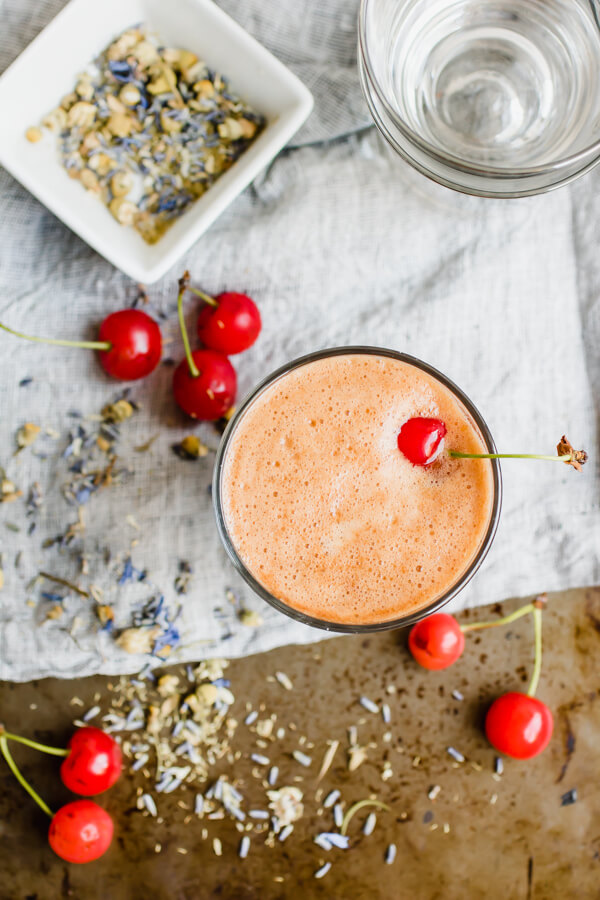
Tart cherries
Containing sleep-promoting properties, tart cherries are touted as a natural source of melatonin. In fact, researchers have found that tart cherry juice increases melatonin levels in the body and enhances sleep.
Recipe: Tart Cherry Juice Elixir by Abra’s Kitchen
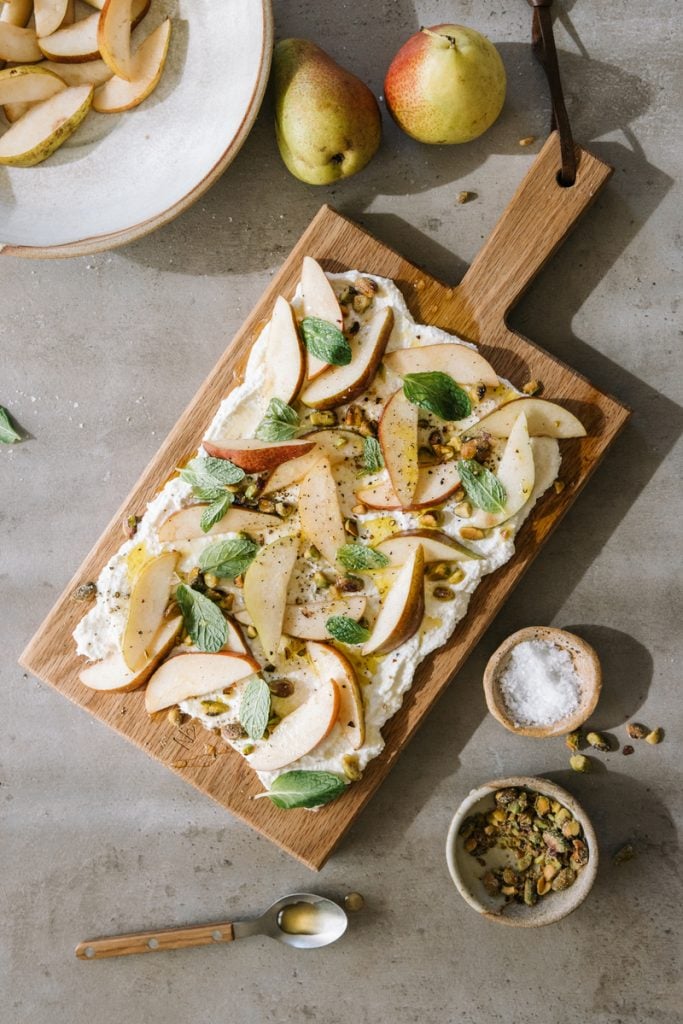
Pistachios
Pistachios hit the sleep-inducing jackpot. The melatonin found in foods like pistachios won’t make you groggy, but it may signal your body that it’s time to sleep. Furthermore, pistachios contain protein, vitamin B6, and magnesium, all of which contribute to better sleep.
Recipe: Ricotta with Pears and Honeyed Pistachios
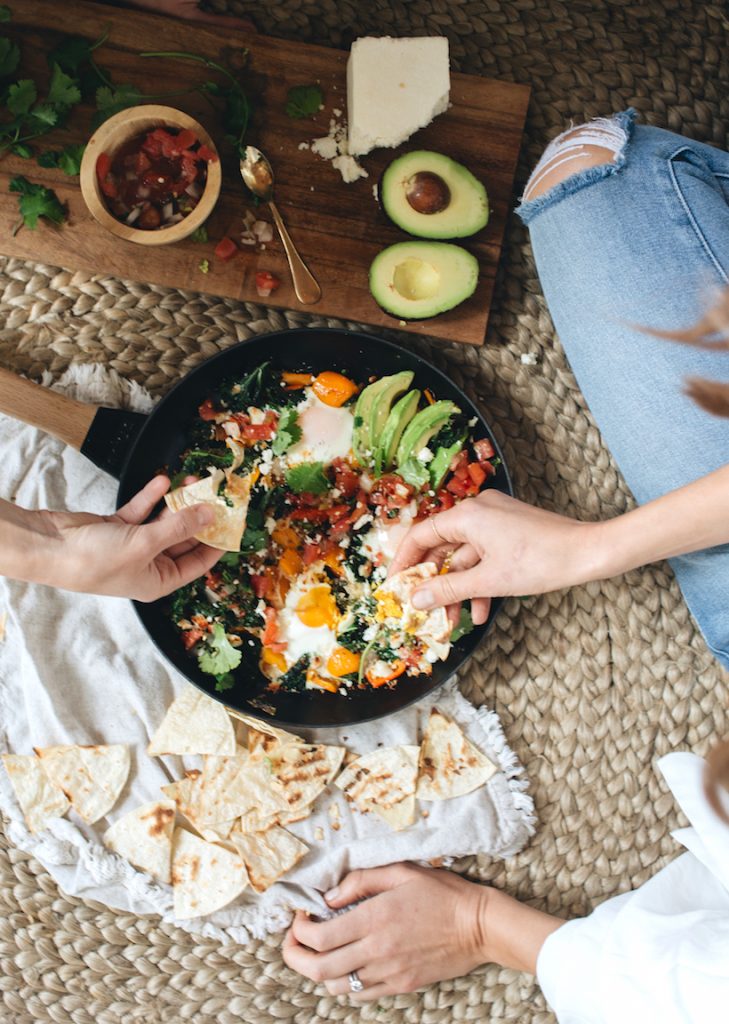
Eggs
Among animal products, eggs are one of the best sources of melatonin. Eggs are also highly nutritious, offering protein and iron, among other essential nutrients. Plus, they’re a rich source of tryptophan, necessary for restful sleep.
Recipe: Spicy Mexican Baked Eggs
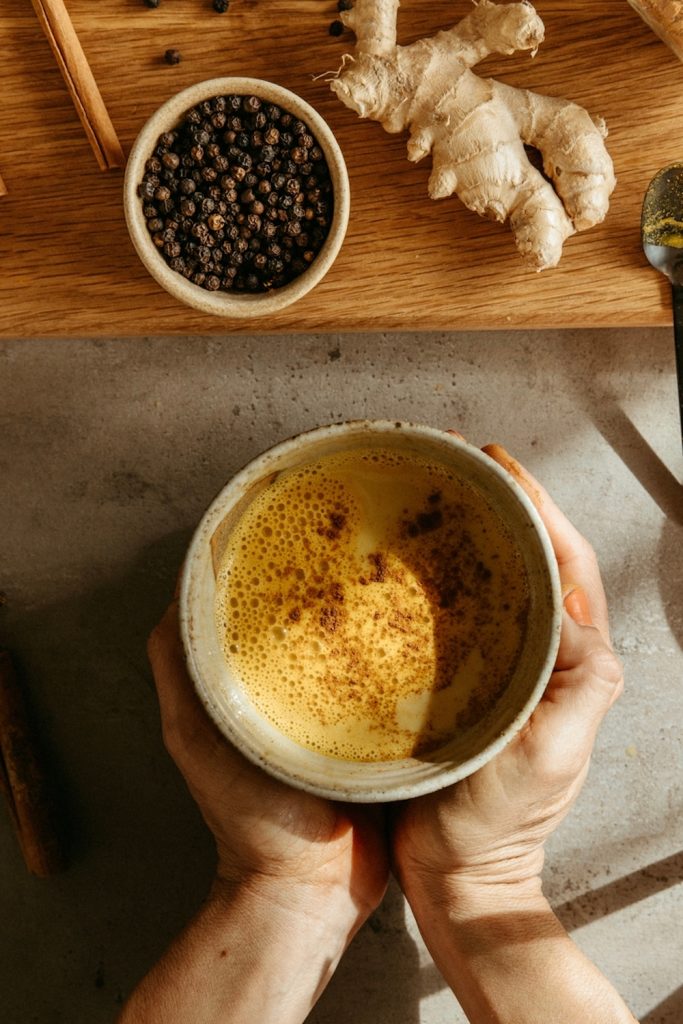
Milk
Like eggs, milk contains ample levels of melatonin and tryptophan. In fact, studies have shown that milk harvested at night (night milk) contains exceptionally high amounts of tryptophan and melatonin.
Recipe: Curcuma Golden Mylk
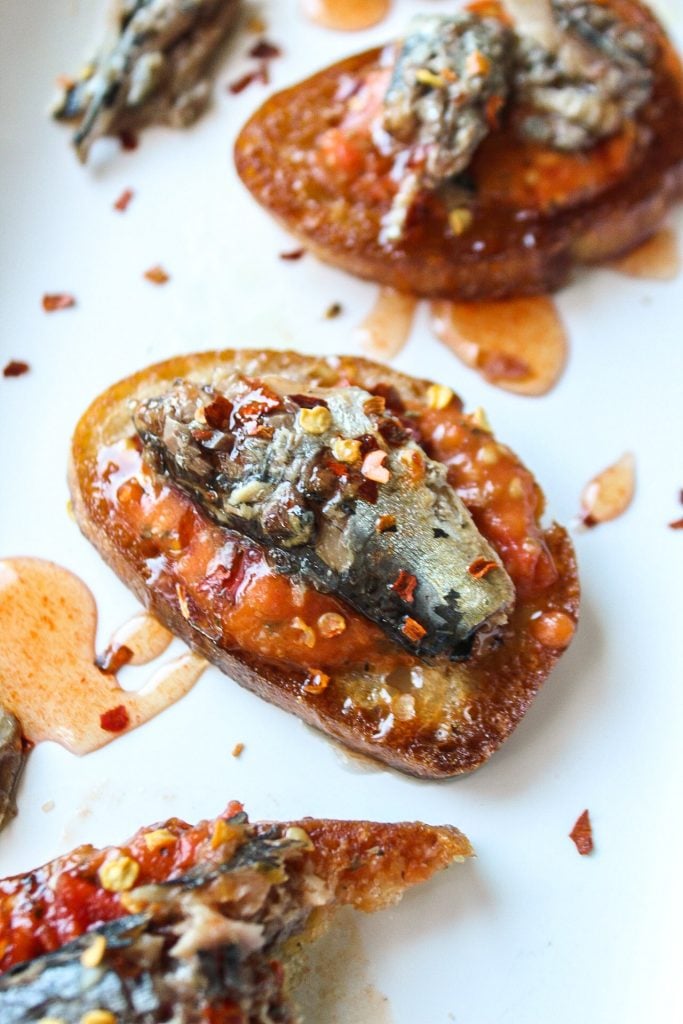
Sardines
Fish with bones, such as sardines, may help to promote healthy melatonin production when you need it.
Recipe: Tomato Sardine Toast by Nomaste Hungry

Salmon
Containing more melatonin than other meats, salmon is a good source of vitamin B6, which promotes the production of sleep hormones. Plus, salmon is high in protein, helping keep you full throughout the night.
Recipe: Hot Honey Glazed Salmon
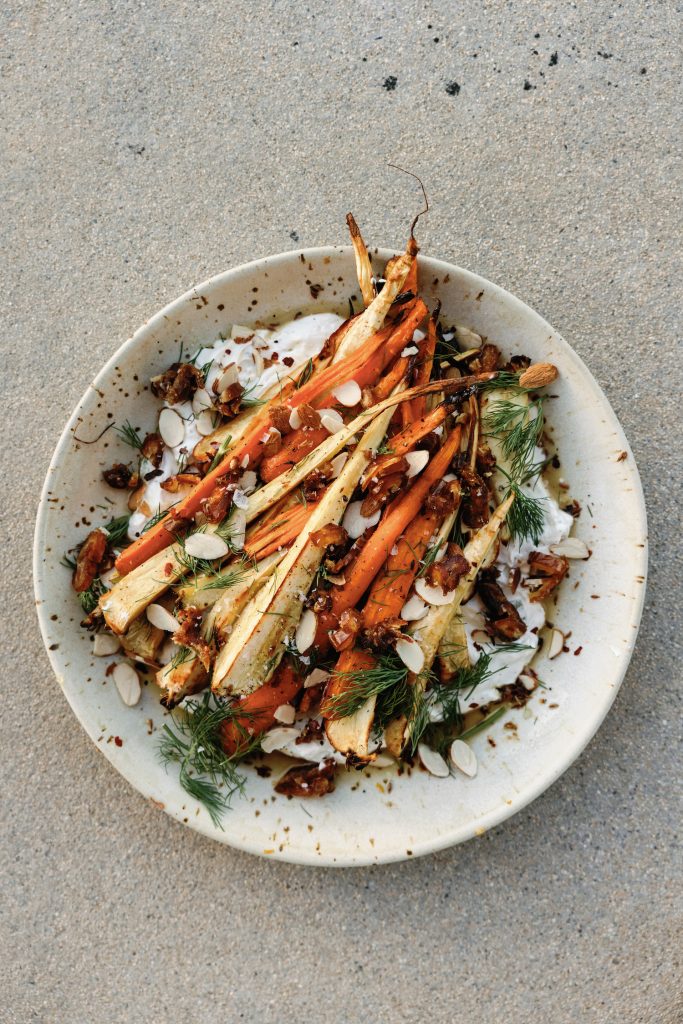
Almonds
Along with pistachios, almonds are a great source of melatonin and magnesium (sleep-enhancing mineral). Both of these properties support the notion that almonds are helpful to eat before bed.
Recipe: Charred Carrots with Honey-Lime Yogurt, Dates, and Almonds

Figs
Figs are rich in magnesium, fiber, and melatonin. These are all directly linked to improving the quality and duration of sleep.
Recipe: Get Figgy With It Smoothie
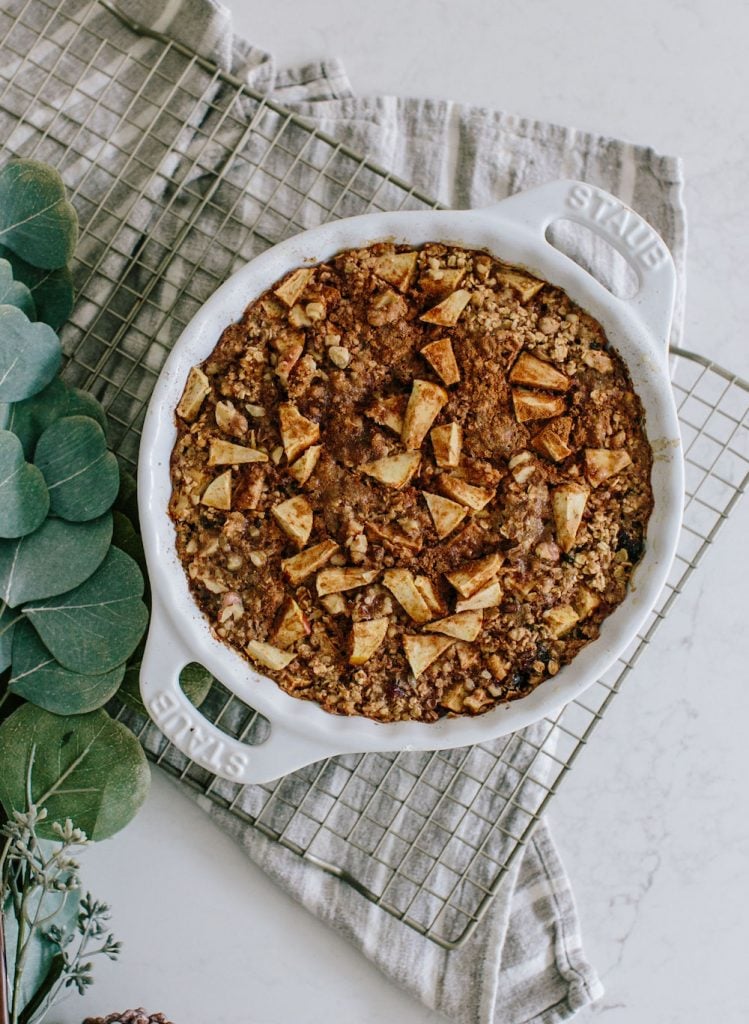
Oats
Grains in oatmeal trigger insulin production much like whole-grain bread. In essence, they raise your blood sugar naturally and make you feel sleepy. Oats are also rich in melatonin, which relaxes the body and helps you fall asleep.
Recipe: Apple Pie Baked Oatmeal
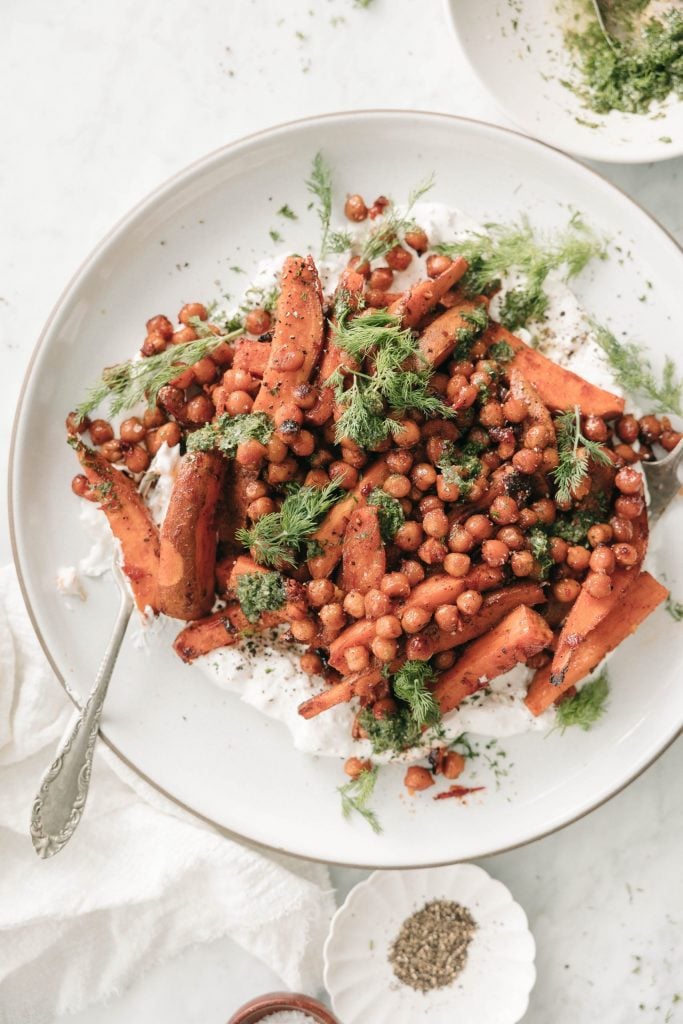
Sweet potatoes
Similar to oats, sweet potatoes stimulate melatonin production and gradually energize your body throughout the night, increasing the duration of your sleep.
Recipe: Sweet Potato and Chickpea Bowl with Feta Yogurt
The post Craving Better Sleep? 10 Melatonin-Rich Foods a Nutritionist Eats for Quality Rest appeared first on Camille Styles.
]]>
Some of these might surprise you.
The post 11 Reasons You’re Tired All the Time (And Exactly What to Do About It) appeared first on Camille Styles.
]]>
It’s no surprise: among feeling overwhelmed at work, round-the-clock stress, and news headlines that keep the concept of ‘doom-scrolling’ relevant, everyone’s asking: Why am I so tired all the time? Sure, the answer(s) might seem like a mystery, but when we start to take stock of our social media use, sleep habits, and other underlying factors, it becomes obvious that many of us aren’t prioritizing the restorative routines that keep us feeling well. The result? Throughout our day-to-day, we’re operating on empty.
In countless conversations with friends, co-workers, and family, I’ve noticed lately that when I ask how they’re doing, 75% of the time, their response is either tired, exhausted, or simply—beat. It’s almost as though being worn out is just another part of our busy, modern-day lives that we’re somehow supposed to get used to.
Featured image by Riley Blanks Reed.
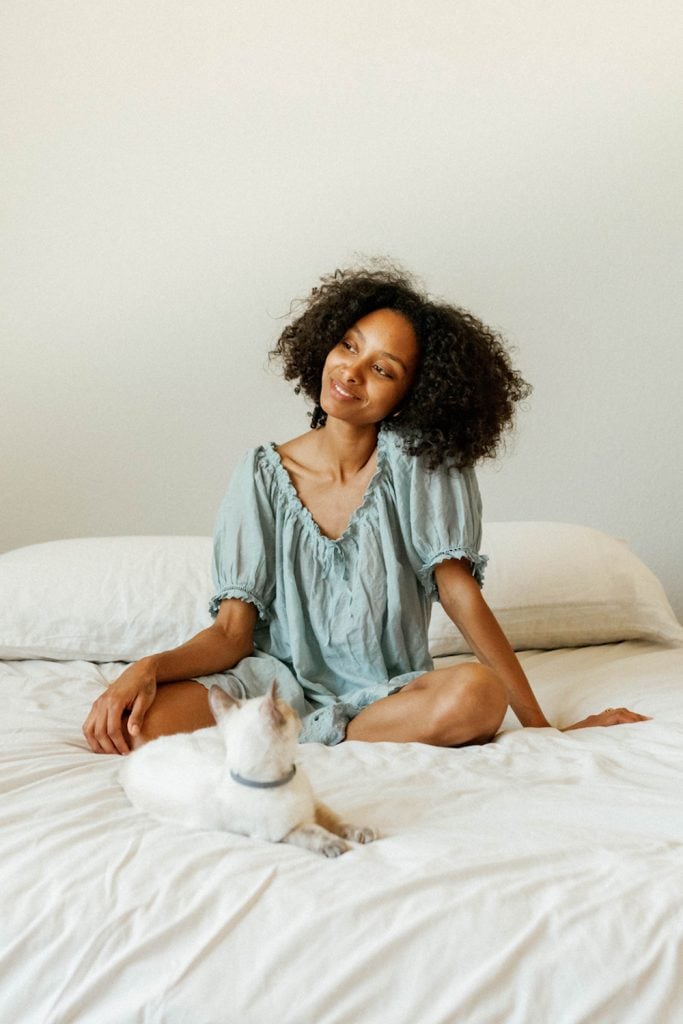
11 Reasons You’re Tired All the Time
When our bodies and minds are in sync and healthy, we should feel amazing and energized even when our schedules are full. However, as most of us know, that’s easier said than done, and there are several reasons why you may be feeling mysteriously tired. Or… perhaps it’s not so much a mystery. In fact, if we consider underlying health conditions, our sleep habits, sleep schedule, and other lifestyle factors, the reasons for our daytime sleepiness become all the more apparent.
Ahead, we’re diving into some of the most common symptoms and causes behind why you’re feeling so tired. Scroll on to discover the lifestyle interventions that will help you rediscover the energy you need to feel your very best. Good sleep hygiene—and the answers to your workday irritability—awaits.
Dehydration
Dehydration is one of the most common, but oftentimes overlooked, causes of fatigue. Even slight dehydration has been shown to cause moodiness and fatigue in women. Other signs can include headaches and inability to concentrate.
But take heart, it’s an easy fix! Just drink more fluid throughout the day! Women should consume, on average, 2.7 liters of fluids (or about 11.5 cups) a day. (Even more, if it’s hot outside or you’ve been exercising.) I try to keep a big bottle of water on my desk while I’m working or in the car when I’m driving, so I can continuously sip throughout the day. Bonus: you can also up your hydration through your diet. Discover the best hydrating foods, in case you’re tired of the 8-glasses-a-day age.
Not Getting Enough Sleep
Before you roll your eyes at how obvious this one is, think about it: are you really getting seven to eight hours every night? Because that’s the amount the National Sleep Foundation recommends most people need. Well actually, that’s the suggestion for people over age 64—they advise seven to nine hours for people between the ages 18 to 64. And if you’re not getting that much, then it’s probably the main cause of your fatigue.
Make an effort to get to bed earlier, and stick to a regular nighttime routine that encourages a restful night’s sleep.
Alcohol
Over the past few years, more and more research is coming out about alcohol’s effects on women’s bodies and minds. But among the impacts on mood, physical wellness, and mental health, it’s understood that alcohol has a negative effect on our sleep.
There’s a longstanding misconception that alcohol is a sleep aid. And while it can make us feel groggy, it disrupts the quality of our sleep. Drinking alcohol before bed causes us to miss out on crucial REM sleep (the most restorative state of sleep). As our contributing editor, Lauren Zielinski, wrote previously, “As the night goes on, there becomes an imbalance between slow wave or N-REM sleep and REM sleep resulting in shorter sleep duration and more sleep disruptions.”
So if you’re ready to ditch the feelings of tiredness throughout the day, consider swapping in a mocktail, sparkling water, or an after-dinner tea in place of your go-to glass of wine. Trust, this simple lifestyle switch can do wonders.
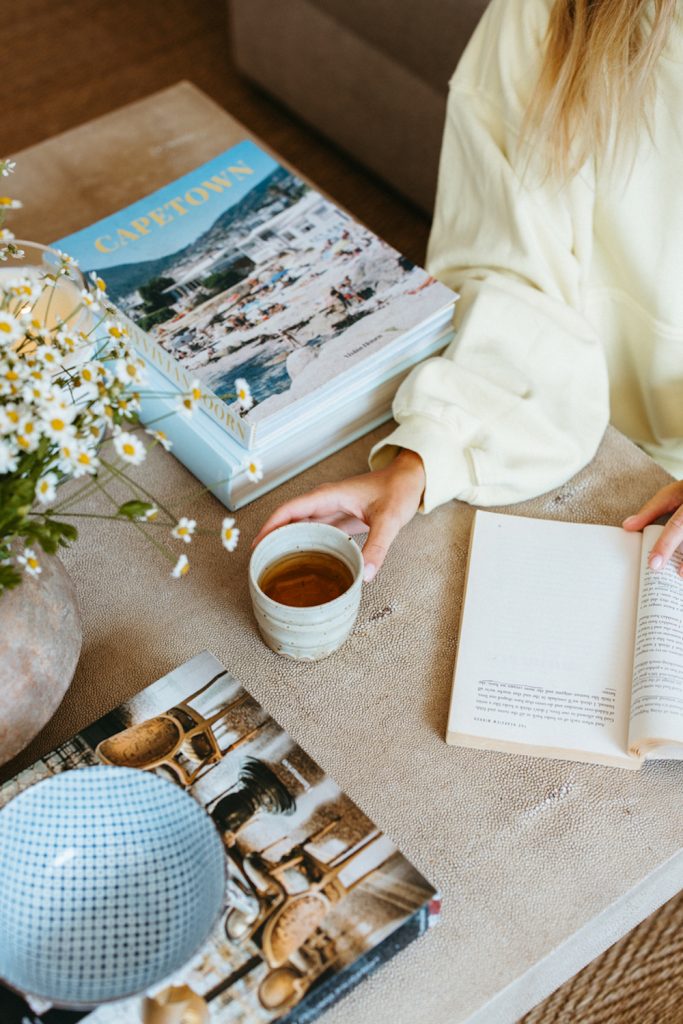
Caffeine Misuse
Like alcohol, caffeine can impact how well we sleep at night. When we explored the topic of the optimal time to drink coffee, experts agreed that, in general, 9:30 a.m. is ideal. But of course, health isn’t one-size-fits-all. And because of that, it’s important to be in touch with the messages your body is sending you. If your daily cuppa is a non-negotiable, focus on developing a healthy caffeine routine by journaling about how the stimulant affects your energy and mood throughout the day—not to mention your sleep patterns.
As nutritionist Serena Poon shared with us, “Caffeine has a half-life of about five hours and its effects may be felt for up to 9.5 hours, so you would want to drink coffee at least five hours before you go to sleep. I usually recommend that my clients get their coffee in before 10 a.m.” So, to improve sleep, keep your anxiety at bay, and reap the benefits of drinking coffee in moderation, tune in with yourself to develop your own personal, healthy relationship with coffee.
Sleep Apnea
Sometimes people think they’re getting a good night’s sleep, but if you suffer from sleep apnea, you experience short bursts of wakefulness through the night caused by brief interruptions in your breathing. It’s also not a condition that should be taken lightly. The Mayo Clinic states that sleep apnea is a potentially serious sleep disorder because your breathing repeatedly stops and starts. If you snore loudly and feel tired even after a full night’s sleep, you might have sleep apnea. Since people often aren’t even aware that they have it, a doctor may order a sleep test to diagnose.
Not Fueling Your Body With the Right Food
Eating too little is an obvious issue, but eating the wrong foods can also be a major drain on your energy levels. Data shows that eating less fiber, more saturated fat, and more sugar throughout the day is linked to lighter, less restorative sleep. In one study, researchers tracked diet and sleep for a group of healthy adults over the course of five nights and found that indeed, food choices during the day affected sleep.
Including protein (eggs, fish, meat, lentils), healthy fats (avocado, nuts), and good-for-you-carbs (fruit, slower processed grains like quinoa and oats) will give you long-burning energy. Simple carbs and sugar will make you crash and burn. It’s important as well, to keep your blood sugar levels balanced with a diet that prioritizes glucose management. What’s more, you want to ensure that you’re fueling your body with the calories it needs. (Keep that metabolism revving!) Chat with you doctor to discuss a plan that support you best.
Anemia
In particular, iron deficiency anemia is one of the common reasons for fatigue in women and is more common during pregnancy. While initially, it can be so mild it often goes unnoticed, once the body becomes more deficient in iron and anemia worsens, the signs and symptoms intensify. Some of these symptoms include extreme fatigue, weakness, headaches/dizziness, cold hands and feet, and more. See your doctor for some blood tests on your iron levels then take a high-quality supplement, and incorporate iron-rich foods into your diet.

Not Getting Enough Exercise
It may seem counterintuitive, but anyone who regularly works out will tell you that breaking a sweat actually gives you more energy throughout the day. And The Mayo Clinic backs it up: “Exercise delivers oxygen and nutrients to your tissues and helps your cardiovascular system work more efficiently.” It just makes sense—when your heart and lung health improve, you have more energy to tackle daily chores.
I try to get my heart rate up every morning, and even better if it’s outside. (Sunshine is one of the most effective natural energizers!) On days when I skip my AM workout, I definitely feel more sluggish by the time the afternoon hits.
Hypothyroidism
Your thyroid controls how fast or slow your body converts fuel into energy, and hypothyroidism (a condition in which your thyroid gland doesn’t produce enough of certain crucial hormones) means that it’s under-active which can lead to obesity, joint pain, infertility, and heart disease. Fatigue is also a side effect of this condition. Head to the doctor for a blood test if you think you may need to get your thyroid checked.
Food Allergies or Sensitivities
If you have an undiagnosed food allergy or sensitivity or suffer from environmental allergies, you could be in a cycle of inflammation and fatigue also known as brain fog. Allergist and immunologist Mark Aronica, MD told Cleveland Clinic that this disconnected feeling is fatigue, and it’s caused by the inflammation that results when your body tries to counteract your allergy symptoms. Try eliminating certain foods to test your intolerance levels and see if your fatigue improves. (A simple elimination diet is a good start.) You can also see a functional medicine doctor who can run a full spectrum of tests to help you pinpoint any sensitivities.
Depression
Many people don’t realize that depression has physical symptoms as well as emotional ones. If you’re experiencing symptoms of depression, such as consistently experiencing low mood, exhaustion, a loss of appetite, or headaches, consider seeing a doctor or speaking with someone who can help. SAMHSA’s National Helpline is a free, confidential, 24/7, 365-day-a-year treatment referral and information service. Call: 1-800-662-HELP (4357).
The post 11 Reasons You’re Tired All the Time (And Exactly What to Do About It) appeared first on Camille Styles.
]]>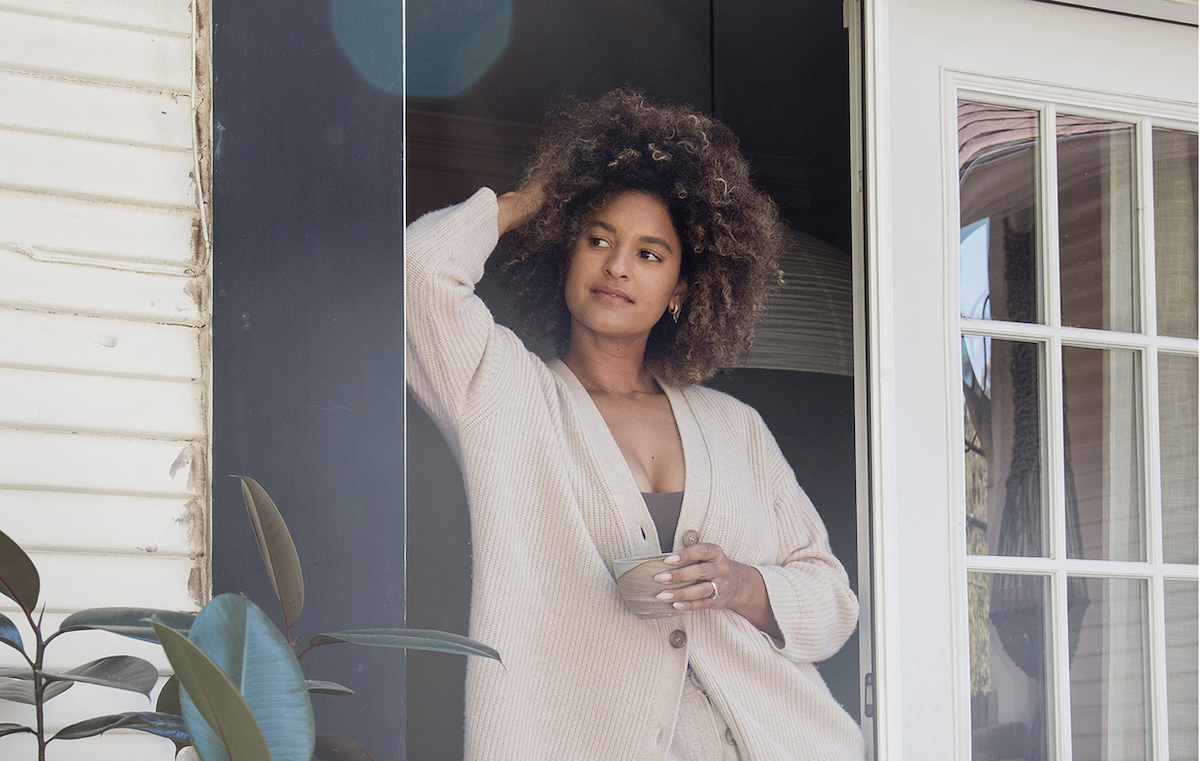
When coffee just won't cut it.
The post 5 Ways to Boost Your Energy After Getting Zero Sleep appeared first on Camille Styles.
]]>
First off, I am a major advocate of making sure that you get enough sleep. Sleep is the way our body restores itself from sickness, enhances cognition and focus, and even helps our bodies maintain a healthy weight. Consistently getting good sleep is probably the single most important step we can take toward health and vitality.
And as much as I attempt to practice good sleep habits and get a full eight hours every night, let’s be honest: sometimes it just doesn’t happen. Especially amidst running a small business and the collective uncertainty that keeps many of us up at night.
Featured image from our interview with Riley Reed by Jenn Rose Smith.
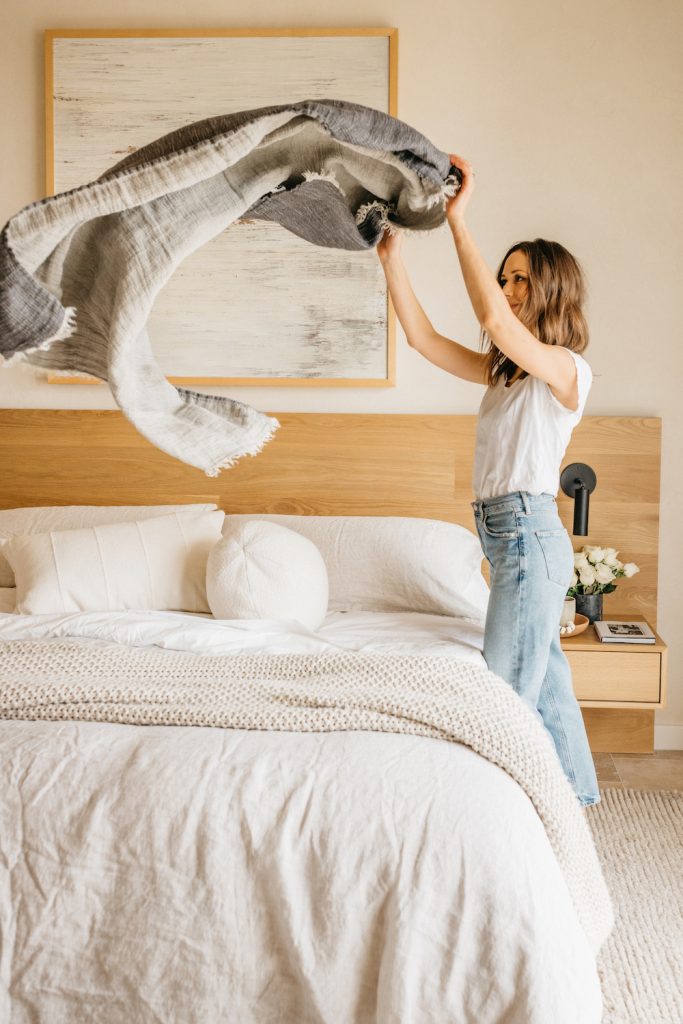
Tips to Ensure You Get Enough Sleep
But this feeling is unfortunately not new for me, either. Whether I stayed up too late ticking off my to-do list, took an overnight flight for work, or experienced one of my occasional bouts of insomnia, I’m all too familiar with that foggy feeling of my alarm going off and realizing that I’m headed into a busy workday on far too little sleep.
I used to get anxious when this happened. (What if my brain can’t function on that conference call? Am I going to be cranky with the kids all day?) But over time, I’ve learned a few hacks that help me get through the occasional restless night’s sleep without missing a beat.
Ahead, I’m sharing five things I always do to help me feel energized when I’m sleep-deprived.
P.S. Here are some great tips on how to fall asleep faster.
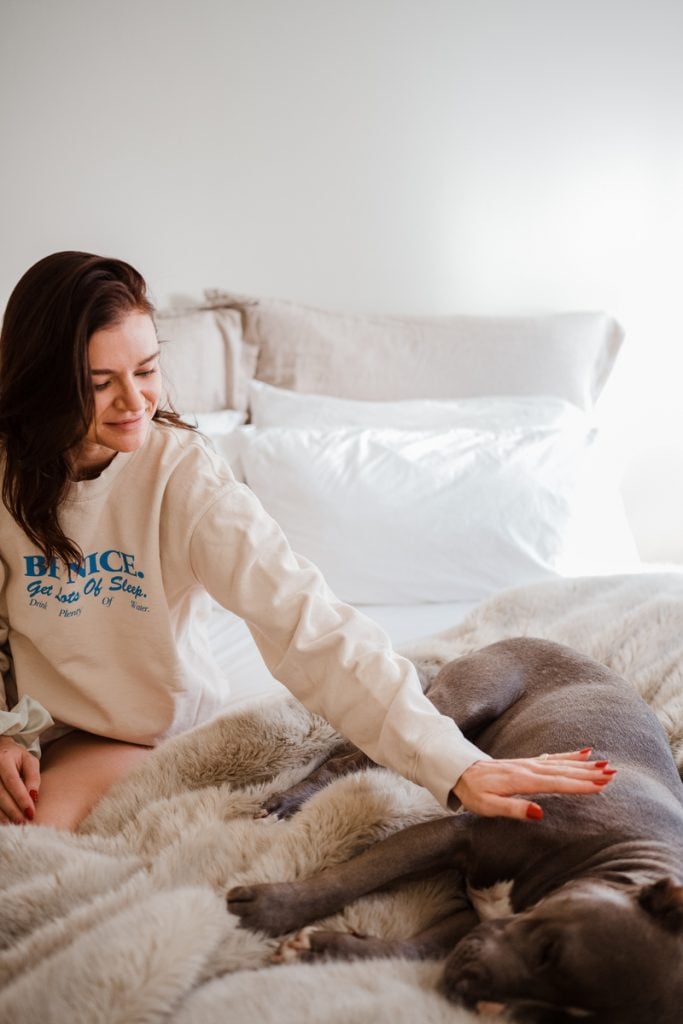
1. Drink a Ton of Water and a Moderate Amount of Coffee
Dehydration equals major fatigue, so I try to keep a huge water bottle within arm’s reach when I’m running on a lack of sleep and refill it throughout the day. It will rehydrate and wake up your organs and generally just make you feel more refreshed.
And people: now is not the time to stick to your no-caffeine goals unless you’re one of those people who truly doesn’t react well to it. Studies have shown moderate amounts of caffeine to be mood-lifting, stress-reducing, and obviously a quick way to put a pep in your step.
If you’re not into coffee, try black tea, matcha, or yerba maté for smaller yet still potent doses of caffeine. Have a cup in the morning and maybe one around midday. Just be sure you don’t overdo it! Cut yourself off by 2 p.m. so you don’t have trouble falling asleep that night.
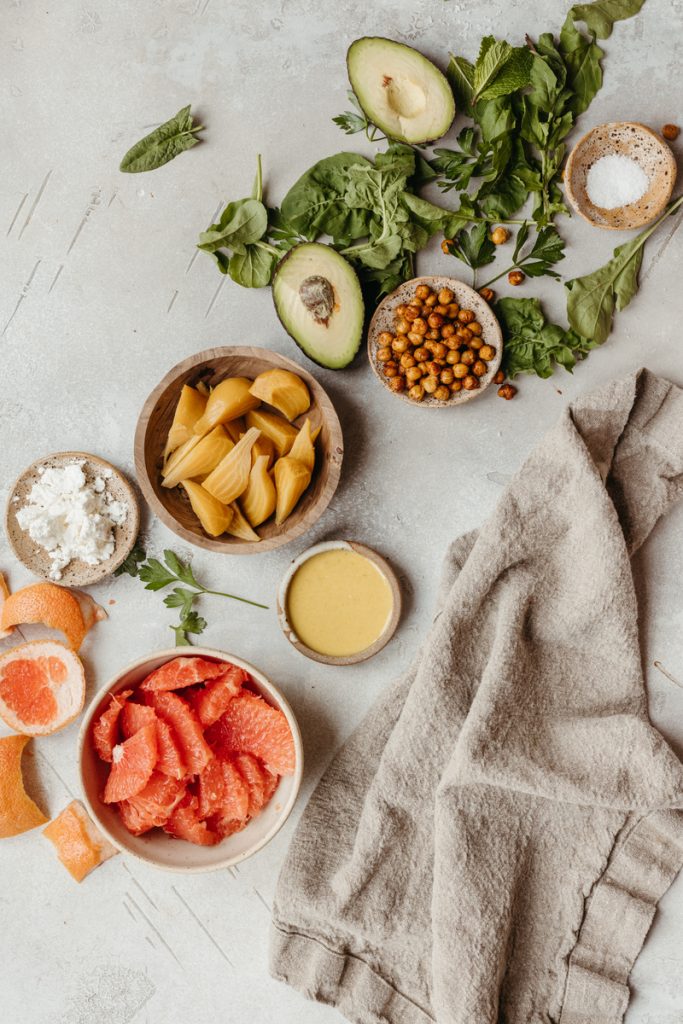
2. Eat a Meal That Includes Greens, Protein, and Healthy Fat
On a recent work trip, I had to take the redeye flight from San Francisco that arrived in New York City at 7 a.m. the next day. Just enough time to check into my hotel, take a shower, eat breakfast, and then head into a high-pressure client meeting! I barely slept on the plane and was a bit panicky when I arrived at my hotel feeling awful and so sleepy.
Thankfully, my breakfast changed all that. I ordered a combo of a kale salad with hazelnuts topped with two soft boiled eggs and avocado. Good fats, especially avocados, have been shown to repair cognitive function, which we could all use a little help with when we’re sleep-poor. Leafy greens flood your body with hydration and minerals, and protein provides energy and makes you feel satisfied. I headed out into my day feeling like a new woman!
3. Get Some Exercise, Preferably Outside
Getting your blood pumping first thing will increase circulation, oxygen, and energy levels. Even a 10-minute walk will go a long way toward helping you feel more energetic. Sunlight increases your vitamin D levels, and even more importantly, it boosts your mood, helps you focus, and reminds your body that it’s daytime so WAKE THE F UP.
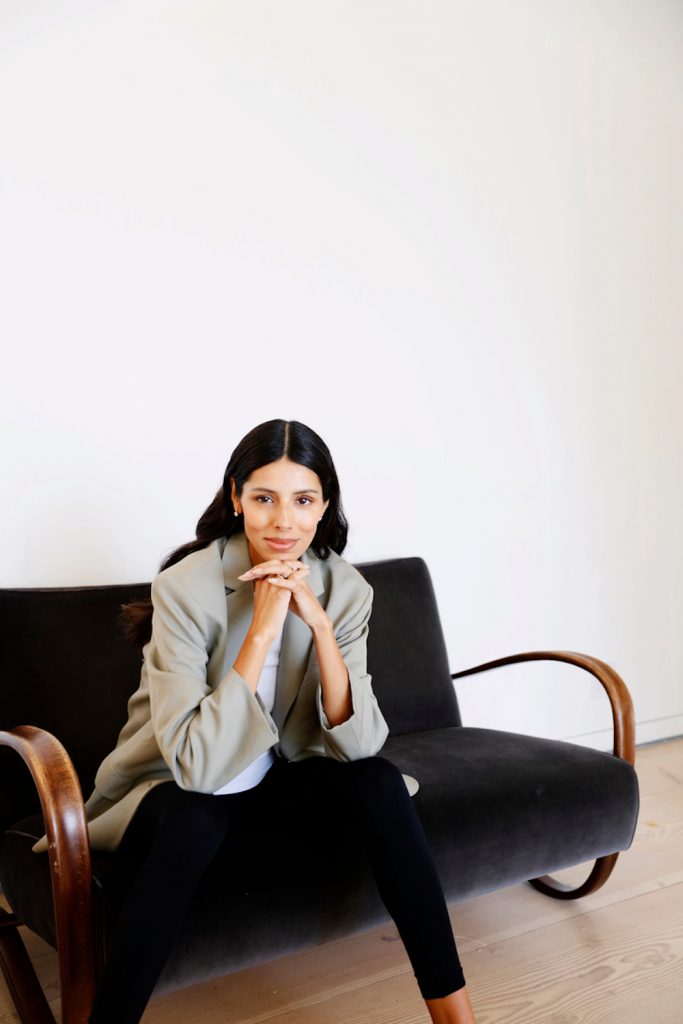
4. Fake It Until You Make It
A couple years ago, I had a tough bout with insomnia that left me feeling anxious and for the first time ever, a little depressed. The experience made me realize in an entirely new way the importance of solid sleep for total well-being. As I was navigating all this, I realized something: the more I talked about how tired and sleep-deprived I was to the people around me throughout the day, the worse I felt. My talking about it served as a constant reminder that I wasn’t on my A-game, which became a self-fulfilling prophecy.
I decided to do a little experiment, and even on those nights when I’d slept terribly, I would just show up to work acting like everything was normal and not mention my sleepless night. And you know what? Even though I didn’t feel great necessarily, I found that I’d mostly forget how sleep-deprived I was and just get on with the rest of my day!
5. Simplify Your Schedule
Today is not the day to try and be superwoman. Take a look at your schedule, cross out the things that aren’t essential, and cut yourself some slack. When you’re running on suboptimal sleep, you’re not going to be your most productive.
Don’t try to give a suboptimal version of yourself to activities that could wait for another day.
I’ve found that making an extra effort to ditch multitasking and focus on a single task at a time goes a long way when I’m feeling tired. Keep it simple and go to bed early tonight!
The post 5 Ways to Boost Your Energy After Getting Zero Sleep appeared first on Camille Styles.
]]>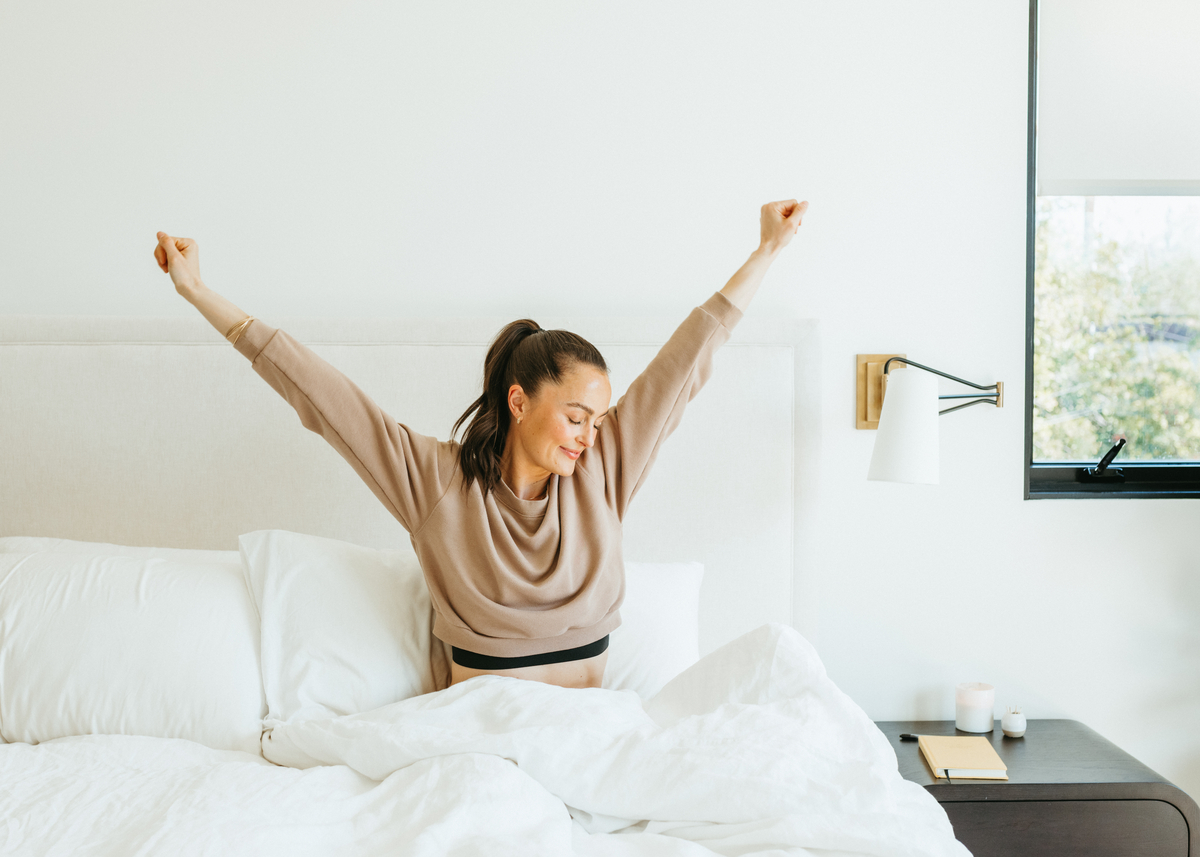
Sleep secrets you've been searching for.
The post Power Nap Like a Pro—8 Tips to Getting the Energy and Rest You Need appeared first on Camille Styles.
]]>
Love a mid-afternoon nap? You’re in impressive company. Margaret Thatcher, Winston Churchill, John F. Kennedy, Aristotle, and Leonardo da Vinci weren’t shy about getting their afternoon shut-eye. From revolutionary thinkers to astounding artists, these leaders prove that power napping is far from a lackadaisical personality trait. In fact, it might *just be* the secret sauce. Entrepreneurs swear by this unconventional productivity hack to beat fatigue and maintain focus throughout the day. Because time is of the essence (ahem, my power nap is calling), let’s dive into how to power nap like a pro. Plus, get the secrets for your best night’s sleep. The days of feeling tired all the time are a thing of the past.
Featured image from our interview with Megan Roup by Michelle Nash.
- Why Sleep Is So Important
- How the Circadian Rhythm Works
- 7 Tips to Maintain a Healthy Sleep-Wake Cycle
- What is a power nap?
- What are the benefits of power napping?
- How long should you power nap for?
- Is power napping for everyone?
- How Power Napping Boosts Productivity
- Napping During the Workday
- 4 Steps to Becoming a Power Napper
- The Best Products to Help You Power Nap

Why Sleep Is So Important
There’s no denying how important quality sleep is. Our sleep-wake cycle (also known as our circadian rhythm) impacts everything. Think: appetite, blood sugar, metabolism, hormone health, and more. This is no surprise, but most of us aren’t getting enough sleep. Nor, for that matter, are we getting enough sunlight. Distractions abound throughout the day, putting many of us in a sleep deficit. Instead of prioritizing a good night’s sleep, we reach for multiple cups of coffee throughout the day to keep us going.
It bears repeating: our current lifestyle habits aren’t doing us any favors. Working at night and being exposed to artificial light before bed disrupts our circadian rhythm. In turn, this disruption downgrades our overall health and well-being. Ultimately, an inconsistent and dysregulated circadian rhythm causes stress on the body. One way to relieve this stress and get your energy levels back into check? A solid midday nap.
How the Circadian Rhythm Works
As mentioned, our circadian rhythm influences everything from our eating habits to our body temp, hormone release and digestion. It’s our internal timekeeper. The circadian rhythm maintains our sleep-wake cycle, helping us fall asleep and wake up in the morning. While it differs from a woman’s infradian rhythm (also known as our ‘second clock’), the circadian rhythm deserves just as much love and attention as any other facet of our self-care routine. This rhythm ebbs and flows during the day, but it is best supported by sleep-promoting habits.
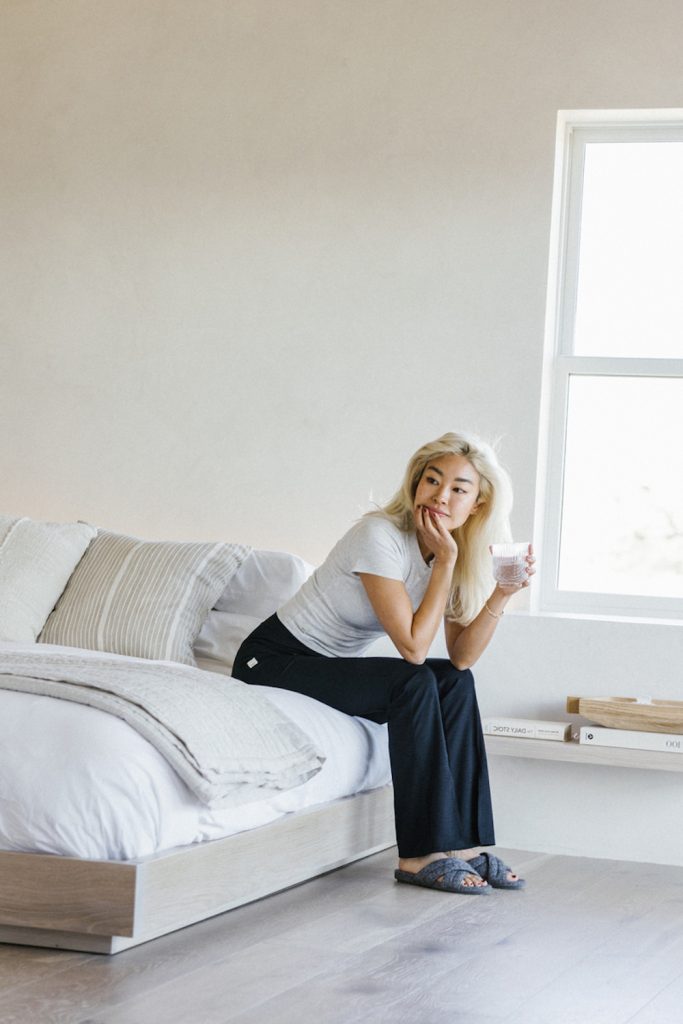
7 Tips to Maintain a Healthy Sleep-Wake Cycle
When it comes to a healthy circadian rhythm, look no further. The following habits create a nourishing environment for the tiny yet mighty part of the brain that controls our sleep-wake cycle.
1. Get sunlight—especially in the morning
Even if it’s overcast, head outside! Research shows that (bright) morning light can be effective against insomnia, premenstrual syndrome, and seasonal affective disorder. The melatonin precursor, serotonin, is also affected by exposure to daylight.
2. Eat a healthy breakfast within 30-60 minutes of waking
This keeps our blood sugar happy, metabolism revved, and takes the body out of fight-or-flight mode. The energy from what we eat also wakes us up.
3. Incorporate movement throughout the day
It’s a crucial part of any healthy daily routine. Exercise has a myriad of benefits, but it’s also been shown to improve sleep efficiency and duration in both kids and adults.
4. Keep naps short
While we’ve all been tempted to indulge in a longer nap, a quick snooze is often best. More on this, below!
5. Avoid caffeine in the afternoon and alcohol before bed
Caffeine can delay the timing of your body clock and alcohol disrupts our sleep architecture. Learn more about the best time to drink coffee to optimize your caffeine rituals.
6. Limit electronics in the evening
Or, be sure to wear blue-blocking glasses. Blue-blocking glasses, specifically, encourage your body to produce optimal melatonin levels close to your desired bedtime. That way, you can fall asleep faster and stay asleep throughout the night.
7. Build a consistent sleep schedule
We are creatures of habit. Routines—including a bedtime routine—offer a way to promote health and wellness through structure and organization. Having a routine can greatly improve your health. Experiment with different tools that can support a solid night’s sleep. Splurge on a sleep mask you love, try out a weighted blanket, invest in an alarm clock, and explore the best earplugs on the market.
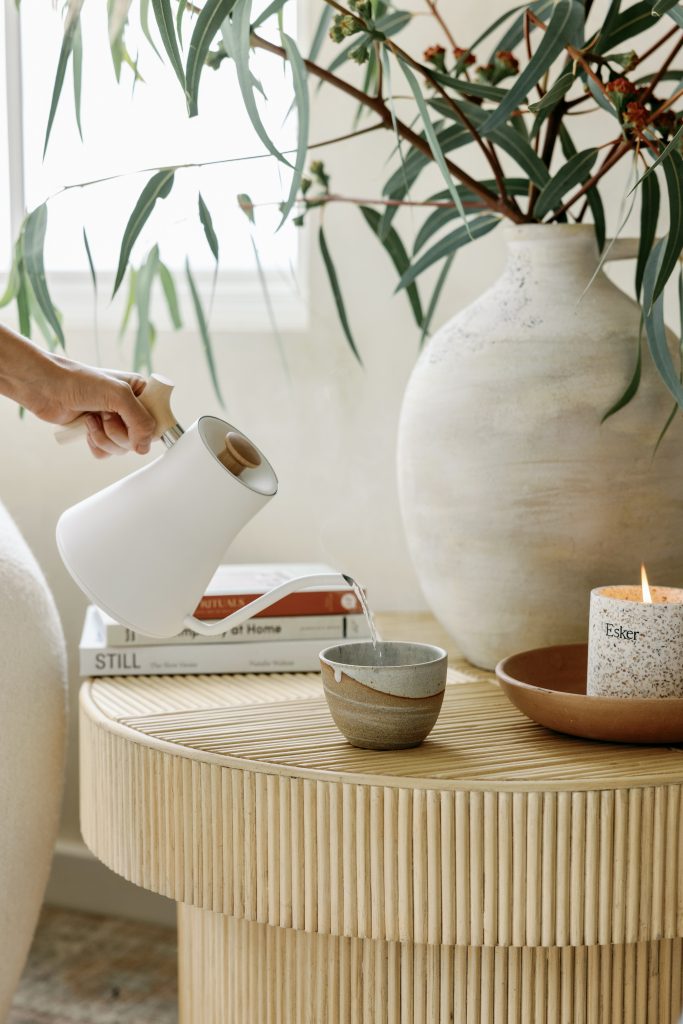
What is a power nap?
Armed with an understanding of why sleep is so important, let’s talk about the ever-coveted power nap. Even if it’s not something you can prioritize during the week (or even in this season of your life), it’s helpful to know what it is, how to implement it, and why it could be a total game-changer.
While there’s no medical definition of a power nap, in general, the term refers to short naps ranging from about 10 to 30 minutes. It isn’t long enough to make you groggy or interrupt your sleep cycle—rather, it’s meant to encourage a full-body reset.
What are the benefits of power napping?
Even if you aren’t sleep deprived, a power nap can be beneficial. In essence, they help refill your tank. An efficient (yet effective) afternoon nap has many benefits. If you’re a seasoned power napper, you know the perks. An afternoon nap can help you feel less sleepy and lead to improvements in: mood, alertness, productivity, creativity, reaction time, short-term memory, focus, concentration, and more.
While there aren’t many cons to power napping, it’s important not to sleep too long during the day. (Or to view power napping as a substitute for a good night’s sleep.)
How long should you power nap for?
Depends, but most agree that over 60 minutes can disrupt your circadian rhythm. Furthermore, studies show that a 10-minute afternoon nap is the most effective in improving alertness and productivity. Many experts advise a 15-30 minute nap, as anything longer gets you into deeper stages of sleep, making it that much harder to wake up. If you’re looking for restorative sleep and have the time to spare, see how you feel with an hour-long nap. Compared to a shorter nap, 60 minutes can lead to greater improvement in cognitive functioning.
All of that said, if you only have five minutes to spare, just close your eyes! A brief rest is better than no rest.
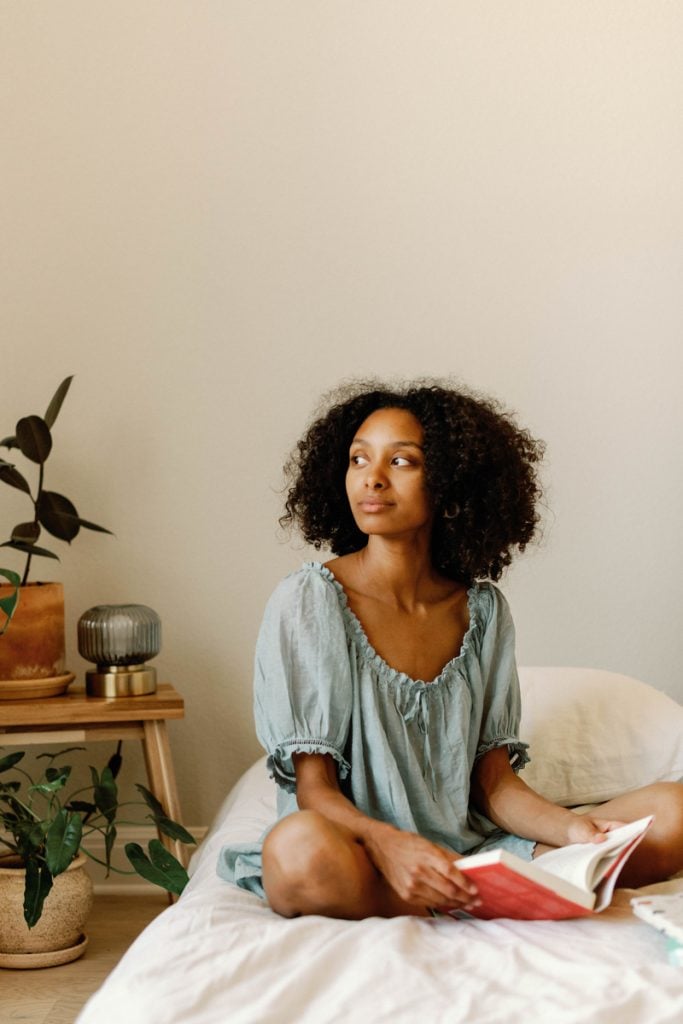
Is power napping for everyone?
The hard truth: power napping might not be for you. Be it your work schedule, parenting responsibilities, or the stress it causes (because you’re ruminating over your to-do list), consider a different reset activity. Rather than napping, you may reap the benefits of a brisk walk, a minute of squats and pushups, or brewing a cup of calming tea. Furthermore, if you tend to wake up feeling disoriented—or more tired than before the nap—focus on clocking your zzz’s at night.
How Power Napping Boosts Productivity
A study conducted by the National Sleep Foundation found that a 40-minute nap improves productivity by 34%. Relatively speaking, that’s not a small percentage. Are you an employer? If so, consider how a power nap could work its way into your company’s handbook. With sleep deprivation negatively influencing the global economy—and studies showing that instituting sleep-friendly policies can improve productivity by over 30% (and alertness by up to 100%!)—allowing employees to rest in the workplace is a win-win. A power nap could drastically change your workplace and directly influence profits. You heard it here first.
Napping During the Workday
Speaking of napping at work, did you know that a weekday nap is encouraged in countries around the world? For example, there is the tradition of the siesta in Spain. In China, people take an hour break midday to rest. In Japan, inemuri means napping while present and is seen as a sign of hard work.
In the United States, the CDC recommends dedicated physical space—as well as scheduling—to allow for napping. Many organizations have already incorporated nap rooms into their offices. Google, NASA, and Ben & Jerry’s support napping by providing specific spaces like “napping pods” for their employees.
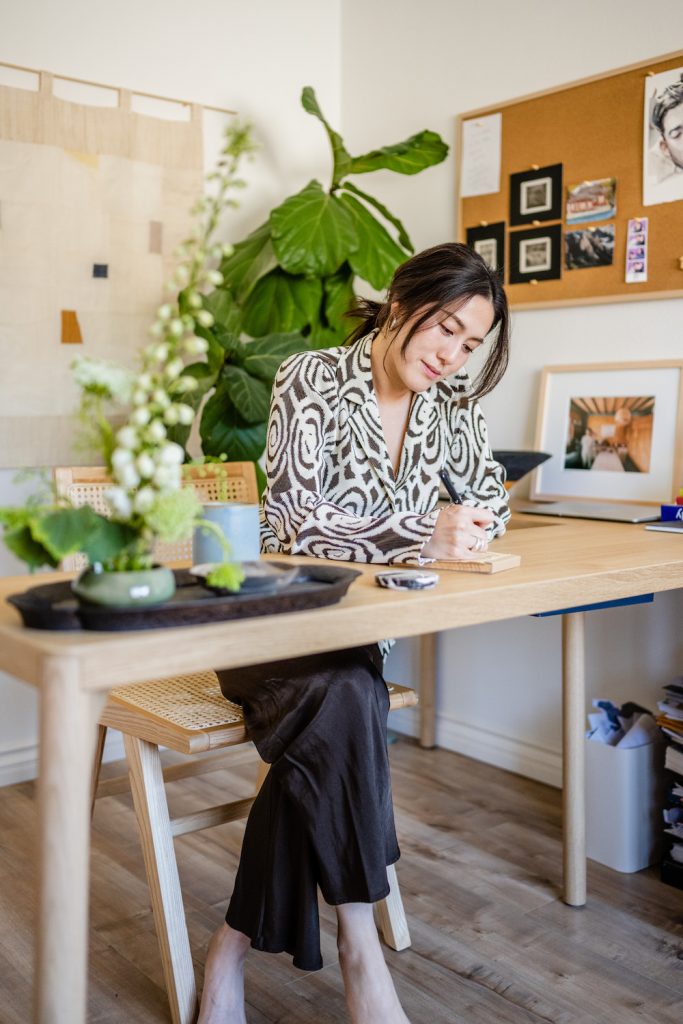
4 Steps to Becoming a Power Napper
Ready to take the perfect power nap and wake up feeling refreshed? Follow these four rules to get the most bang for your power nap buck.
- Get the time right. The circadian rhythm is low between 2-4 p.m. To improve your alertness, productivity, memory, and function, aim to take your nap in the early-to-mid afternoon. There are many activities you can do to beat the afternoon slump, but a quick power nap could be the golden ticket.
- Recharge with the ideal duration. One of the keys to successful power napping is its length. Too much takes you into deep sleep mode, leaving you tired and groggy afterward. Too little is not enough. Experts explain that the maximum power nap recharge is achieved by going from stage one sleep (that lovely ‘drifting off’ feeling) to stage two (slowdown of brain activity). In most people, that’s 15-30 minutes.
- Create a dark environment. Just like ideal nighttime sleep comes from a cold, dark room, so does your afternoon nap. The fewer intrusive sounds, the better.
- Turn your phone on ‘Do Not Disturb.’ Because we all know how easy it so to get distracted by messages, alerts, etc., block your calendar during nap time and silence your messages. Trust that you can clock 15-30 minutes of rest without tending to other people’s needs. In fact, I bet you’ll tend to their needs with extra enthusiasm after your power nap.
The Best Products to Help You Power Nap
Lunya Washable Silk Sleep Mask
The sleep mask to end all sleep masks. We’ve come a long way in the world of light-eliminating masks, and it’s all thanks to the OG, silky Lunya fave. Not only does the oversized style keep light out, but the naturally moisturizing silk helps you get the best beauty sleep of your life. Bonus: the wrap-around mask reduces exposure to noise pollution as well.
Loops is revolutionizing how we think about earplugs. While we may have once scoffed at or looked over the flimsy, ineffective plugs of yore, Loops intentionally designed beautiful, comfortable earplugs to promote a calming, quiet environment for your best-ever power nap.
One of our favorite picks in our line-up of the best alarm clocks on the market, the Loftie is for those who want a little something more from their bedside companion. Select from calming, nature-inspired sleep sounds to establish the perfect power napping environment. Bedtime stories, meditations, and affirmations help round out the ultimate napping ritual.
Weighted blankets as a trend may have slowed down, but our obsession with the rest-promoting tool knows no bounds. If you’re someone who doesn’t like getting completely under the sheets for your power nap, we recommend draping this weighted blanket over your bed for a quick, anytime sleep option. The calming colors and organic cotton construction look beautiful in any space and the chunky, soft design helps you wake up feeling rejuvenated and replenished—with energy to take on the rest of your day.
As someone who loves lighting a non-toxic candle to set the mood and establish a calming scent scape, I was overjoyed to discover this peaceful blend of jasmine, bergamot, and neroli. A few spritzes on the pillow before my power nap helps me wind down quickly and transforms my space into a five-star hotel. (Ideal sleeping conditions, if you ask me.)
The post Power Nap Like a Pro—8 Tips to Getting the Energy and Rest You Need appeared first on Camille Styles.
]]>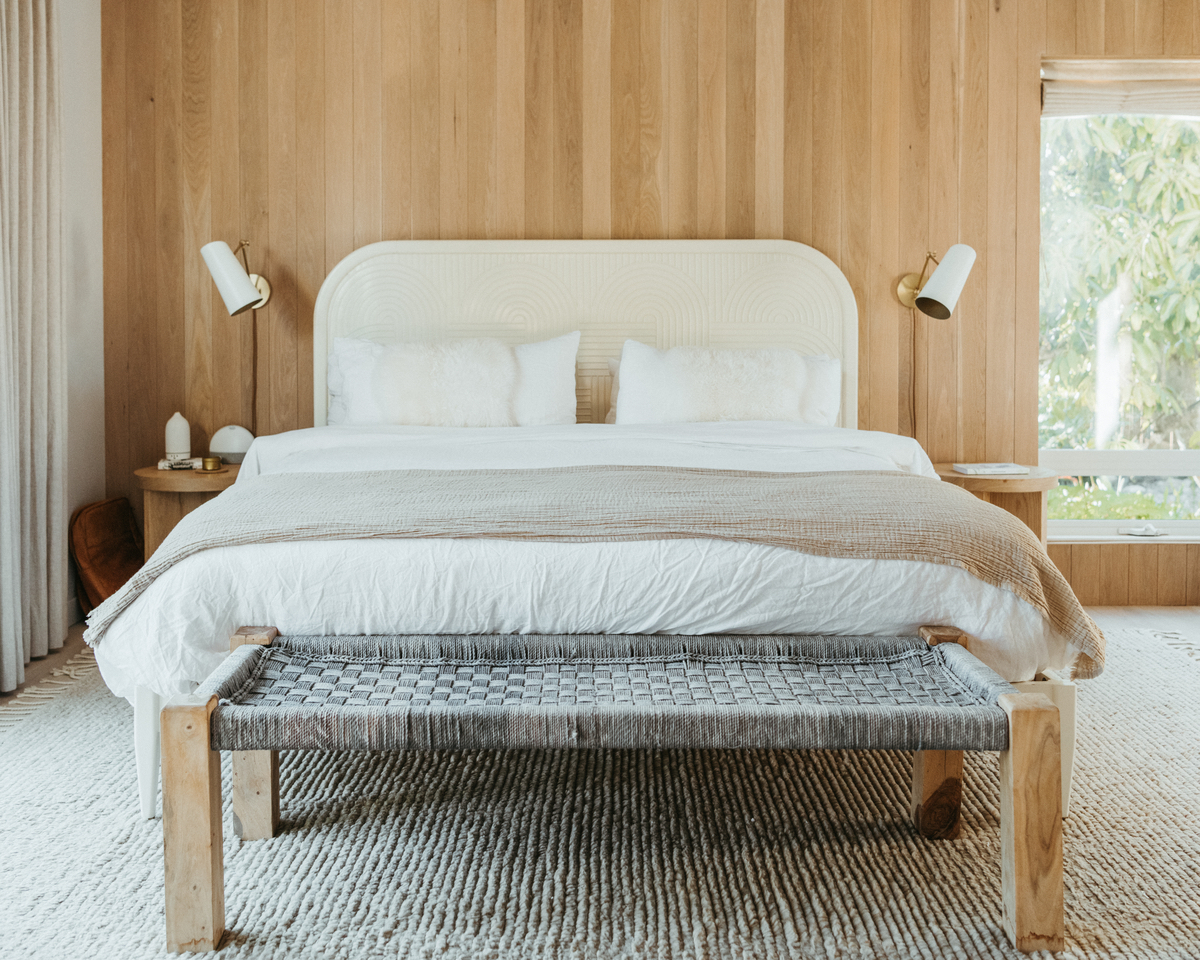
No snoozing!
The post These Alarm Clocks Will Help Kick Your Nighttime Phone Habit—and Get Your Best-Ever Sleep appeared first on Camille Styles.
]]>
Like many, I know I need to stop falling asleep with my iPhone on my nightstand. And like most of us, I continue to keep it there. Why? Because I was too busy spinning my wheels, weighing the best of the best alarm clocks against one another. (Analysis paralysis—my hyphenated middle name.) I’ve long believed that the best sleep products can only do so much in helping me get a good night’s rest. But… I’ve also been ready for the best alarm clocks to change my tune.
I’ve gazed at the Hatch longingly, fielding friends’ five-star recommendations left and right. And despite visualizing the details of just how *aesthetic* my Loftie Clock would look in a morning routine Reel, the price tag turned me away. I’ll admit: it’s easier to keep a not-so-great habit instead of starting a new one. But in the pursuit of more restful, restorative sleep, it should make sense that I would do everything I can to wake up feeling ready to take on the day.
Well, in committing to my August refresh, that’s exactly what I’ve set out to do—one snooze at a time. To determine the best of the best alarm clocks, I shook the internet upside down, heeded my friends’ recommendations, and bit the dang bullet. Ahead, I did the hard work for you to determine the best alarm clocks for your sleepy needs.
Featured image by Michelle Nash.
- Smartphones and Sleep Don't Mix, An Expert Explains
- How to Minimize Temptation When Using Your Smartphone as an Alarm
- What to Look for in the Best Alarm Clock
- The Alarm Clock Worth the Hype: Hatch Restore 2
- Best Design-Driven: Loftie Clock
- Best Budget: Capello Digital Alarm Clock
- Best Affordable Smart Alarm: Philips Smart Sleep Wake-Up Light
- Best Analog Alarm Clock: Braun Classic Alarm Clock
- Bonus: Best Alarm Clock App: Sleep Cycle

Isabella Gordan is a certified sleep science coach and co-founder of Sleep Society. She teaches people to improve the third of their lives by sleeping better, for a healthier life.
Smartphones and Sleep Don’t Mix, An Expert Explains
If you’ve also wondered whether or not you should make the switch from smartphone to alarm clock, keep reading. In speaking with Isabella Gordan, certified sleep science coach, and co-founder of Sleep Society, I learned the ins and outs of why we should leave our smartphones out of the bedroom—and use a dedicated alarm clock instead.
1. Smartphones disrupt your sleep cycle. It’s intuitive but bears repeating: scrolling on your smartphone’s glowing screen late into the evening isn’t doing your sleep patterns any favors. Gordan notes that this habit can have the effect of tricking your body into thinking it’s daytime. The result? Feeling restless at the exact time you should be winding down.
2. Blue light can cause long-term eye damage. “The blue light emitted from our phones suppresses melatonin production more than any other type of artificial light,” notes Gordan, “leading to sleep disruptions and difficulty falling asleep.” With prolonged exposure, Gordan cites the link to long-term eye damage, manifesting in macular degeneration and cataracts.
3. Smartphone exposure increases anxiety levels. PSA: sleep and anxiety don’t mix. And, as Gordan observes, “notifications on smartphones are known triggers for higher stress and anxiety levels.” Conclusion? If you’re trying to prioritize rest and a restorative nighttime routine, keeping your smartphone within arm’s reach isn’t the solution.

How to Minimize Temptation When Using Your Smartphone as an Alarm
Of course, many of these adverse health effects of using your smartphone as an alarm clock imply that you’re on your phone up until the moment you try to close your eyes. If you’re able to set your alarm and place your phone facedown on your nightstand (and not grab for it in the middle of the night), props to you.
Gordan also suggests turning your phone on airplane mode after setting your alarm and placing the phone out of reach. Or, she suggests “setting a strict usage policy for yourself.” Creating boundaries and barriers around when you can use certain apps can help mitigate risk.
But, for many, simply being in close proximity to our devices is temptation enough. If that’s the case for you, keep reading for our review of the best alarm clocks—and choose the one that fits your needs best.
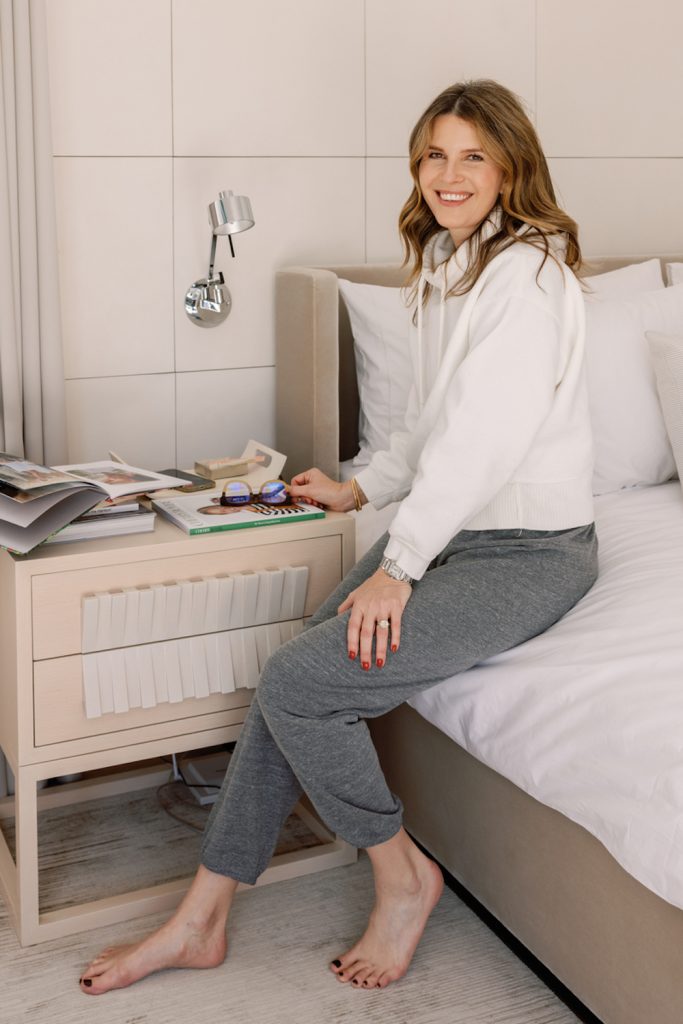
What to Look for in the Best Alarm Clock
Below, Gordan shares her tips when shopping for the best alarm clock. For a restful night’s sleep, prioritize the tips below and keep your personal needs in mind.
- Multiple settings. With all the alarm clocks on the market today, many of the bells and whistles they offer to set themselves apart aren’t simply accessories. What’s necessary? Gordan says to prioritize alarm clocks with multiple settings, such as variable alarm sound or a snooze option.
- Dual alarms. If you’re like me, you and your partner like to wake up at different times. (I’m a morning person—he, decidedly, is not.) In that case, Gordan prefers alarm clocks that allow you to set multiple alarms, for your wake-up time as well as your partner’s.
- Pre-programmed music. Depending on what you like to wake up to, it can be convenient to have an alarm clock that you can set to wake you up with your preferred music or news station.
The Alarm Clock Worth the Hype: Hatch Restore 2
Called “the ultimate bedside sleep companion” the Hatch has gotten plenty of hype. The brand positions its collection of sunlight alarm clocks (multiple generations of clocks designed for children or adults) as the wake-up call nature intended. The sunrise alarm is designed to work with your natural circadian rhythm and is a far cry from the cortisol-bumping wake notifications of yore. Though it’s pricey, you’re getting more than simply an alarm clock out of your purchase. Featuring sleep sounds, settings to help you establish not only a peaceful morning routine but a restful nighttime ritual, and different lighting settings, this is an all-in-one smart clock.
What We Love:
- Sunrise alarm and peaceful alarm sounds promote a gentle morning wake-up call.
- Nature-inspired sleep sounds and bedtime light settings help you create a peaceful oasis.
- Minimal design supports a calming space.
- Optional Hatch Sleep Membership features guided breathing exercises, peaceful music, and more ways to help you wind down.
What We Don’t:
- While we feel that the price is justified, it’s the most expensive alarm clock of the ones selected.
- Some users note that the sunrise alarm isn’t enough to wake them up. If you’re a heavier sleeper, we recommend opting for the different noise alarm options.
Best Design-Driven: Loftie Clock
In the same vein as the Hatch, the Loftie Clock is for those who prefer to keep their spaces and routines minimal and streamlined. While it’s a noise-driven alarm versus a sunrise clock, the vibes are just as peaceful. You can select from options such as birds chirping, bells, or ambient sounds—noises that feel organic and calming to the circadian rhythm. While the features feel more limited than the Hatch, this is a great alarm clock if you’re looking for something more affordable but that still goes beyond your basic wake-up.
What We Love:
- Loftie+ membership gives you access to unlimited personalized content including stories, horoscopes, affirmations, and meditations for a comprehensive wellness routine. Content is regularly updated each month.
- Everything is fully customizable. You can change everything from the tone, brightness, and volume to help you curate a fully personalized experience.
- Streamlined design integrates seamlessly into any space.
- Features a two-phase alarm, helping you wake up naturally so you can feel more well-rested.
What We Don’t:
- Given the amount of personalized content and features available, it’s a steep learning curve until you get fully comfortable with your alarm clock.
- Many users note that the app doesn’t add to the experience. Along with the clock itself, the app can be a bit difficult to integrate and feels like an unnecessary feature.
Best Budget: Capello Digital Alarm Clock
All hail the ever-expansive availability of just about everything you could need at Target. Case in point, this minimalist, beautifully-designed device that clocks in (see what I did?) at $20. The extra-large time display feels decidedly chic without disrupting your aesthetic nightstand set-up. Though it doesn’t offer anywhere near as many features as the Hatch or Loftie (nor did we expect it to be given the price), it’s a solid, basic option for teenagers, college students, and working adults alike.
What We Love:
- The adjustable dimmer display lets you go as bright or dim as you prefer. The result is a soft glow that promotes a restful, calming sleep environment.
- Because this alarm clock is so basic, it’s extremely easy to set up and operate.
What We Don’t:
- The design, while sleek, is clearly plastic and feels slightly cheap.
- The alarm sound itself can be jarring.
Best Affordable Smart Alarm: Philips Smart Sleep Wake-Up Light
If you love the concept of a sunrise alarm clock but don’t need all the features of the Hatch (nor do you want to pay the price), the Philips rough equivalent could be the clock for you. As Jordan Thomas wrote in her review for the New York Times, “It’s beauty, it’s grace, it’ll wake you up without screaming in your face.” And it’s true—she went so far as to claim it’s her reason for transforming into a morning person. The clock operates similarly to the Hatch, waking you up with a combined sunrise-simulated light and your pick of nature-inspired sounds.
If you’re after what the Loftie or Hatch promises in terms of customization and a gentler wake-up (minus the additional cost and design features), this is a solid pick for your sleep routine.
What We Love:
- Customizable features allow you to select from a range of nature-inspired alarm tones.
- In addition to the gentle wake-up, this clock features a sunset function to help you prepare for sleep. You can set the 30-minute wind-down function when you hop into bed with your book, and the light will incrementally dim until it’s completely dark.
What We Don’t:
- The clock itself is bulky and will likely dominate the majority of your nightstand space.
- Similar to the Hatch, if you’re a heavier sleeper, a sunrise-mimicking alarm clock may not be the best option.
Best Analog Alarm Clock: Braun Classic Alarm Clock
Design-driven, analog affordability at its finest. This ultra-stylish, retro alarm clock was designed in 1984 by Dieter Rams, a German designer closely associated with the functionalist school of industrial design. In this clock, he blends function and form, softening what at first appears to be purely a utilitarian aesthetic. We love, despite the analog display, how clear and easy it is to read the time. What’s more, the beeping alarm is paradoxically soothing. Though it’s not all birdsong and nature sounds, it’s a pleasant way to wake up. If you’re looking for something that gets the job done of waking you up while looking gorgeous on your nightstand, make it this alarm clock.
What We Love:
- The small, minimalist design seamlessly fits into any space.
- The alarm, while not customizable, offers a calming, gradually increasing tone.
- Continuous backlit creates a soothing glow at night.
What We Don’t:
- Extremely pared-down design. If you’re after an alarm clock and nothing more, this is for you.
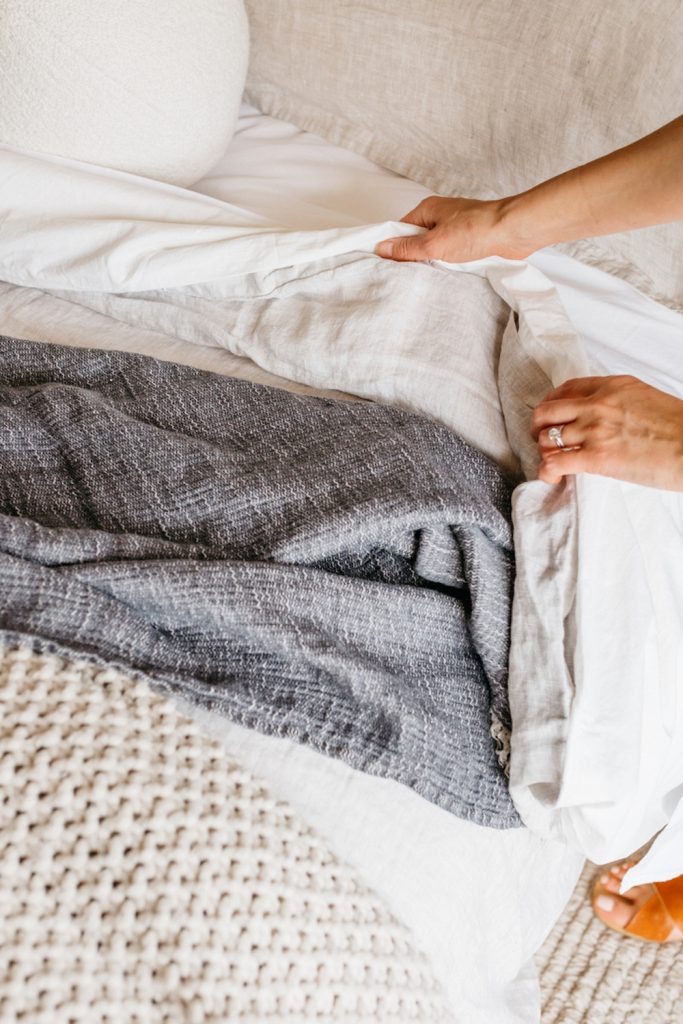
Bonus: Best Alarm Clock App: Sleep Cycle
If you truly can’t part with your phone at bedtime, good news: there are alarm clock apps designed to be as non-disruptive as possible. What’s more, many also offer additional features that help you track your sleep patterns to help you address your problem areas. And as Gordan notes, sleep tracking can help you “become more mindful of your own sleep patterns and behaviors,” letting you shift where necessary.
With that in mind, we named Sleep Cycle the best alarm clock app. While many solid options exist and provide different features based upon your needs, Sleep Cycle is a beautifully designed app that not only gives you a gentle wake-up, but also provides you with a comprehensive breakdown of your sleeping habits. Trust: if you’re like us and love to nerd-out on sleep, this app was designed for you.
What We Love:
- Sound recordings offer audio snippets of your sleep (including sleep talk, snoring, etc.) to help you understand your sleep habits.
- Advanced sleep tracking technology and personalized coaching helps you identify areas of improvement.
- Smart Alarm Clock wakes you up gradually and during your lightest sleep phase. Because of this, it’ll feel like you’re waking up naturally without an alarm.
- Integrates and operates seamlessly with wearable devices.
What We Don’t:
- Pricier than other sleep apps once the free trial period is over.
The post These Alarm Clocks Will Help Kick Your Nighttime Phone Habit—and Get Your Best-Ever Sleep appeared first on Camille Styles.
]]>
Maximize your morning.
The post This Is the Perfect Energizing Breakfast, According to Your Sleep Chronotype appeared first on Camille Styles.
]]>
You know your zodiac sign, Ayurvedic dosha, and Myers-Briggs type. (If not, have fun!) But, are you familiar with your sleep chronotype? If you’ve ever wondered why you naturally rise before the sun—but your bestie is a night owl—it’s because each of us has a sleep chronotype. Fascinating, right? Ultimately, knowing your sleep chronotype is the key to optimizing your energy levels, getting a better night’s sleep, and improving your overall well-being. With that in mind, we’re geeking out on all things sleep and the best breakfasts for you—based on your sleep chronotype.
Whether you’re an early riser or a night wanderer, it’s time to embrace your sleep chronotype. In turn, you’ll learn how to make a morning meal to keep you thriving all day long.
Featured image from our interview with Kimberly Snyder by Teal Thomsen.

All About the Circadian Rhythm
You’ve heard of it, but what exactly is it? In essence, the circadian rhythm is an internal timekeeping system. It governs two things: our biological processes and behavioral patterns. This mesmerizing phenomenon creates a 24-hour, bodily rhythm. Primarily influenced by external cues, such as light and darkness, the circadian rhythm regulates our sleep-wake cycle. That said, it also modulates our body temperature, hormone secretion, and more. Think of the circadian rhythm as a steadfast conductor, synchronizing our bodies with the natural world around us.
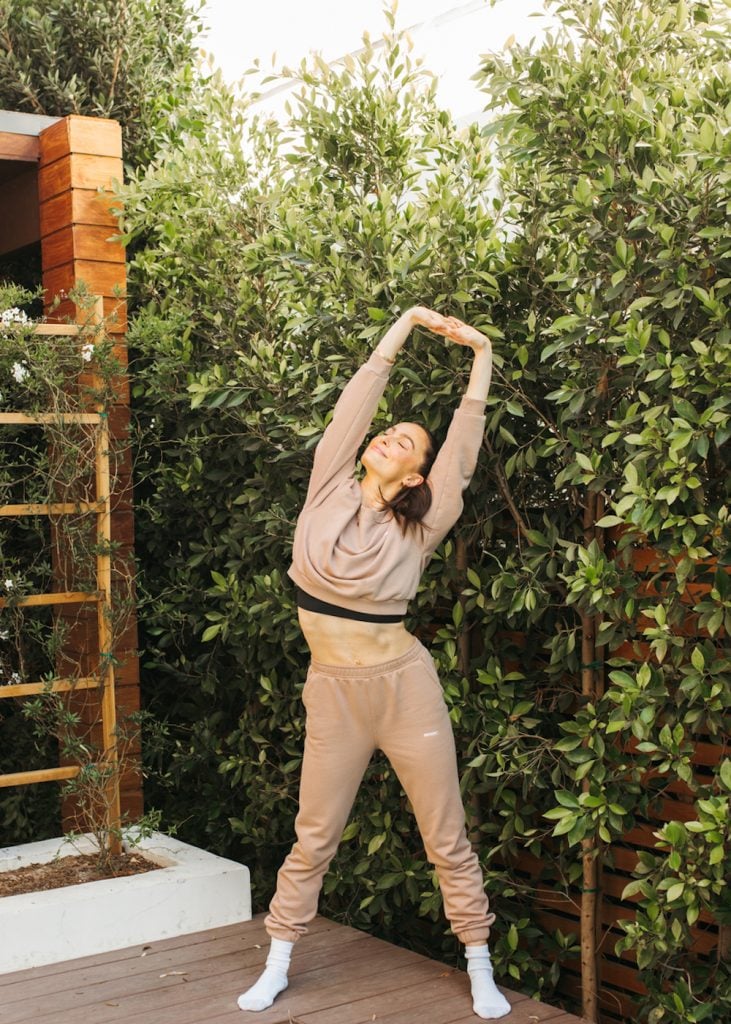
Why does a consistent sleep routine matter?
Before we dive into the four sleep chronotypes (and how to determine yours), let’s talk about the power of a consistent sleep routine. In many ways, prioritizing a regular sleep schedule allows your body—and mind—to reap the full benefits of restorative sleep. In turn, this sets the foundation for a healthier life. Below are the benefits of a consistent sleep routine:
- Optimal sleep quality. A (mostly) unwavering sleep schedule allows your body to establish a regular circadian rhythm, ensuring you get the right amount of sleep at the right time. This leads to deeper sleep cycles.
- Enhanced performance and productivity. A consistent sleep routine results in better cognitive function, improved focus, and increased productivity.
- Mental and emotional well-being. Quality sleep is closely linked to emotional well-being and mental health. It helps regulate mood and reduces the risk of mood disorders, anxiety, and depression.
- Physical health benefits. Adequate and consistent sleep is essential for physical health. It supports immune function, helps with weight management, and reduces the risk of various chronic conditions.
- Hormone health. Sleep is crucial for happy hormones! Regular sleep patterns help maintain the hormones responsible for appetite regulation, stress response, and fertility.
- Improved memory. A consistent sleep routine allows your brain to effectively process and retain information. In fact, you’ve probably noticed how sleep deprivation impacts your alertness, focus, and memory.
- Decreased risk of sleep disorders. This goes without saying, but a consistent sleep routine can reduce the risk of developing sleep disorders, as irregular sleep patterns may contribute to conditions like insomnia or circadian rhythm disorders.
- Longevity. Numerous studies correlate consistent, sufficient sleep with increased longevity and a higher quality of life in the long run.

The Four Sleep Chronotypes
As mentioned, each sleep chronotype relates to our body’s biological clock (aka circadian rhythm). But what are they? The four types are lions, bears, wolves, and dolphins.
- Lions: Morning people who like to wake up early, and are typically most productive in the morning.
- Bears: Their sleep schedule is synced with the sun, with most productivity in the morning.
- Wolves: They prefer to wake up later in the day, and are most productive in the afternoon or evening.
- Dolphins: They have trouble waking up and falling asleep, and are most productive around midday.
Sleep Chronotypes, Explained
According to board-certified sleep specialist, Michael J. Breus, Ph.D. (who coined the four sleep chronotypes!), lions, bears, wolves, and dolphins each have their own unique daytime and nighttime rhythms.
1. Lions
A true morning person, this individual can easily (read: naturally) wake up at the crack of dawn. Most days, they’re keen on a 6 a.m. wake-up time and roughly a 10 p.m. bedtime. These folks also sleep for five full sleep cycles and fall asleep quickly. Because this sleep chronotype is prone to sluggishness in the afternoon, it’s best for them to get outside after lunch to beat the afternoon slump. With that in mind, lions are most productive in the morning.
2. Bears
Bears are characterized by waking and sleeping with the sun. They’re not night owls and prefer to wake up relatively early. When it comes to waking up and going to bed, bears typically get five full sleep cycles (like lions) and like to wake up around 7 a.m. and go to bed around 11 p.m. Because they like to operate with the sun, bears are most productive in the morning and should try to avoid scheduling bigger tasks in the afternoon.
3. Wolves
Unlike bears, wolves usually sleep for only four full sleep cycles. This sleep chronotype likes to wake up around 7 a.m. and go to bed at roughly midnight. If this is your type, you may notice morning grogginess. A hot tip: instead of reaching for a cup of coffee, hydrate as soon as you wake up and get sun exposure to signal to your body that it’s time to be alert! You may also consider a sleep-supporting supplement to help you fall asleep faster. Wolves tend to be the most productive later in the day. They do best with calm, slow mornings and bigger tasks late in the day.
4. Dolphins
Last but not least, dolphins. These folks often struggle with waking up and falling asleep. With this sleep chronotype, their optimal wake-up time is 6:30 a.m. and an 11 p.m.(ish) bedtime. If this is your type, keep a journal on your nightstand to get your thoughts out before bed. This type is also the most focused and productive from mid-afternoon to evening, so keep your morning responsibilities light. P.S. Dolphins love a power nap.
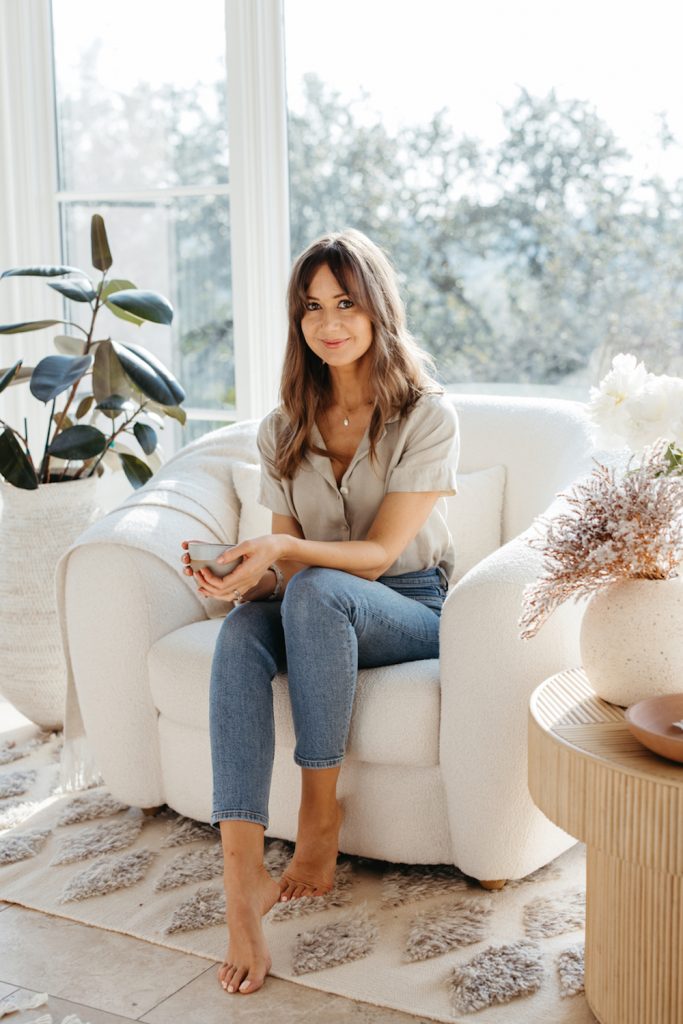
Which sleep chronotype am I?
Based on those descriptions, you probably have a good idea. That said, you can also take this quiz to find out. Inevitably, knowing your type can help you create a schedule that truly works for you and—further—why your current schedule might not be working.
But remember, circumstances are never perfect. Whether you’re a new mom, work a nighttime shift, or have to stay up late studying, have grace with yourself. Prioritize sleep as best you can. When possible, allow your sleep chronotype to boost your productivity and support your sleep needs.
Why align your breakfast with your circadian rhythm?
Before we talk meal inspo, it’s worth a reminder that breakfast is important no matter your chronotype. Skipping breakfast—or eating overly processed foods—can cause blood sugar issues. However, aligning your morning meal according to your natural circadian rhythms can promote stable blood sugar. Hello, better daytime energy and night’s rest! In other words, the right breakfast can help your cortisol in the morning, which can promote greater productivity throughout the day. Plus, we need a nourishing breakfast for overall hormone health and a robust metabolism.
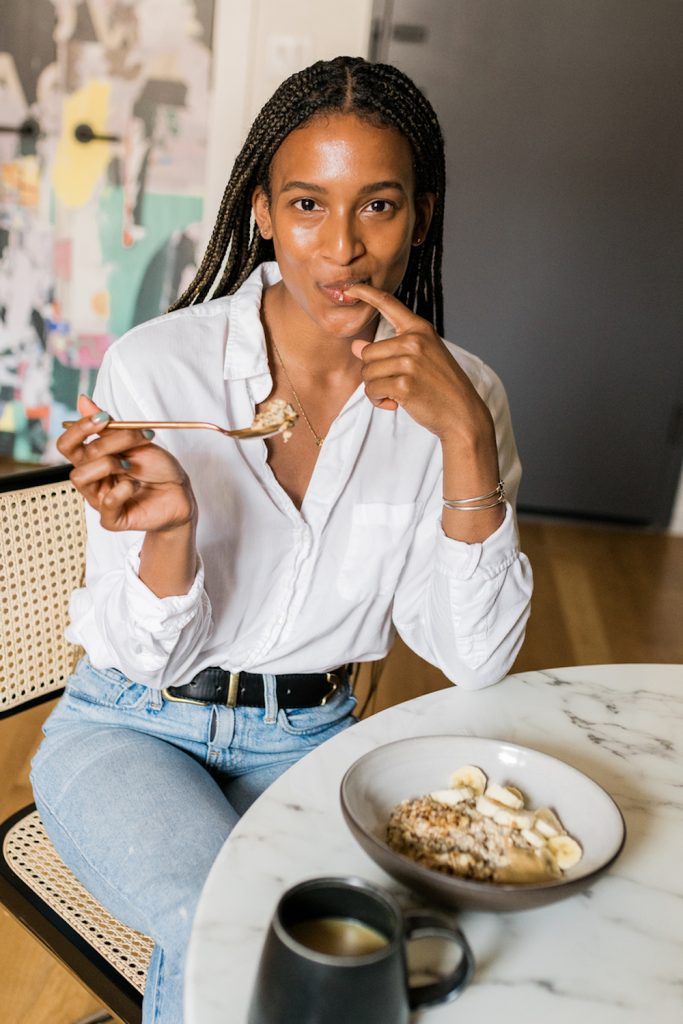
Breakfast Ideas for Your Sleep Chronotype
Ready to use your sleep chronotype to design the most energy-boosting, nourishing morning meal for your body? Look no further.
Lions
Rise and shine, lions! Since this sleep chronotype tends to wake feeling energized, they may choose to exercise before breakfast. Regardless, lions should eat a protein-focused breakfast within 30-60 minutes of waking to aid in stable energy levels throughout the day. What does a sample plate look like for a lion? A hearty egg (or tofu) scramble with spinach, mushrooms, and peppers with a side of cottage cheese topped with berries and nut butter. Otherwise, a protein smoothie and avocado toast will do the trick. For on the go: opt for a slice of a frittata and a banana or a container of overnight oats.
Recipes for Lion Chronotypes:
- Chocolate Banana Almond Butter Smoothie
- Savory Cottage Cheese Bowls
- Avocado Toast with Kale Pesto and Crunchy Veggies
- Pumpkin Overnight Oats
- Vegetable Drawer Goat Cheese Frittata
- Tofu Scramble with Shredded Cabbage & Chili Sambal on Sourdough Toast
Bears
Bears are prone to eating a sugar-forward breakfast, which can work against them in a few ways. This will eventually lead to daytime fatigue (blood glucose crash) and sugar cravings. If you prefer a sweeter breakfast—and this is your sleep chronotype—prioritize something more protein-forward. Think: Greek yogurt with fruit and hemp seeds or eggs and turkey breakfast sausage. For bears to get their sweet fix, try naturally sweetened muffins with a filling smoothie or bowl of keto chia pudding on the side.
Recipes for Bear Chronotypes:
- Vegan Nutty Banana Muffins
- Almond Butter Green Smoothie
- Keto Chocolate Chia Seed Pudding
- Swirled Yogurt & Smoothie Bowl
- Baked Green Eggs with Roast Tomato & Chilli Salsa
- Shakshuka
Wolves
Although this sleep chronotype often prefers to guzzle a cup of coffee before eating, a jittery wolf isn’t ideal. Since wolves have low energy levels in the morning, they tend to rely heavily on caffeine for energy. Instead, hydration will trigger digestion and increase their core temperature, making them feel more energized. Follow up a glass of H20 with a balanced breakfast that doesn’t require a lot of preparation, such as hard-boiled eggs and fruit or a fiber-rich bowl of oatmeal. Afterward, enjoy your coffee or matcha!
Recipes for Wolf Chronotypes:
Dolphins
Like bears, dolphins may gravitate toward a sugar-laden breakfast. Reason being? A lack of sleep triggers cravings for refined carbs. While a stack of pancakes may help temporarily, they’ll wind up more exhausted by mid-morning. Dolphins especially need to build a balanced plate. Think: adequate protein (20-40 grams), 1-2 sources of healthy fats, and complex carbohydrates to help stabilize blood sugar. Breakfast ideas for this sleep chronotype include a veggie-packed quiche, Greek yogurt toast, or challah French toast with a protein shake on the side.
Recipes for Dolphin Chronotypes:
- Spring Onion and Goat Cheese Quiche
- Yogurt Toast with Peanut Butter and Banana
- Chai Challah French Toast
The post This Is the Perfect Energizing Breakfast, According to Your Sleep Chronotype appeared first on Camille Styles.
]]>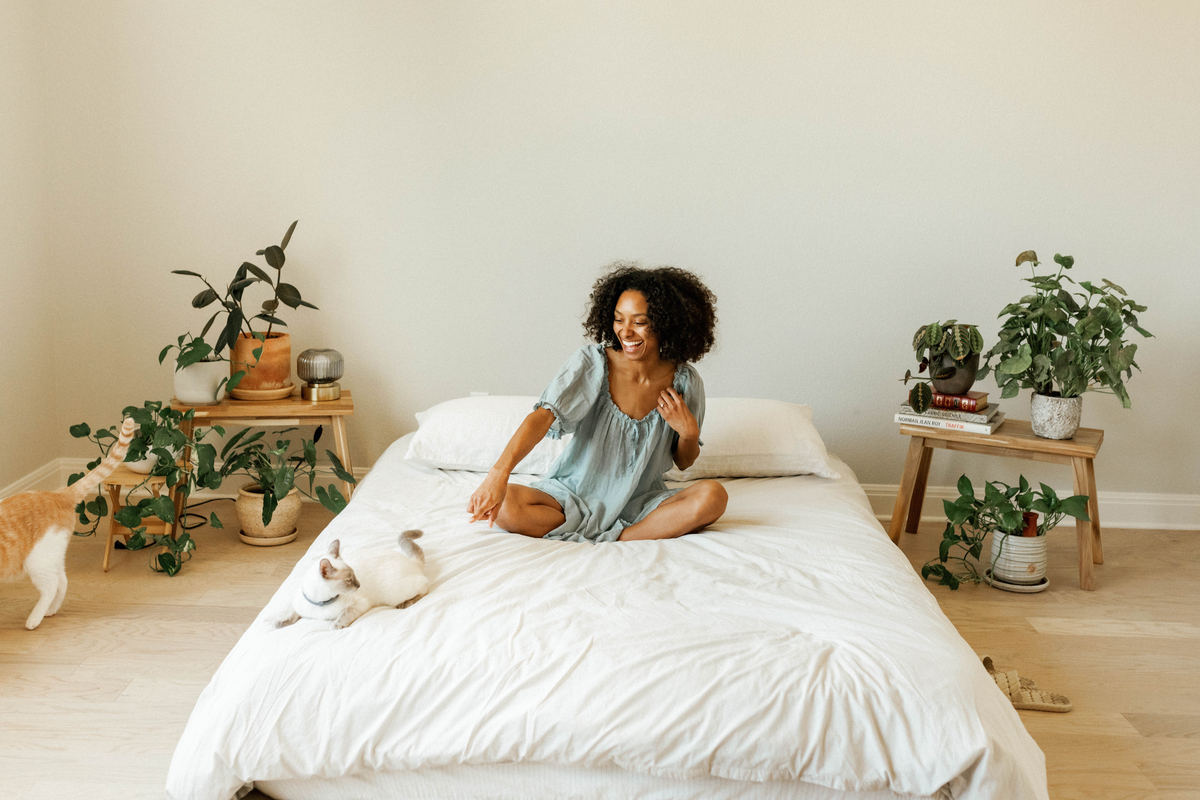
Wake up refreshed.
The post Can a Pillow Help Prevent Wrinkles? Experts Say, Yes—Here Are the 16 Best On the Market appeared first on Camille Styles.
]]>
I used to think waking up with bright, uncreased skin and gorgeous next-day hair was nothing more than pure luck and positive alchemy. Like good karma you got from the day before. Little did I know a few game-changing sleep products could do me a whole lot of good. Pillowcases, in particular. It wasn’t until the idea of silk pillowcases and uniquely shaped designs entered my almost exclusively Wamsutta world that I understood you could take action in the name of beauty sleep. And thus, my quest for the perfect “anti-wrinkle pillow” was launched.
Featured image of Sanetra Nere Longo by Michelle Nash.

What to Look For in an Anti-Wrinkle Pillow
An anti-wrinkle pillow comes in—quite literally—many shapes and sizes.
In terms of an actual pillow, there are loads of contoured options made of down or memory foam that cradle the head to prevent the dreaded face smush. (A few of the funkier-shaped products may have caught your eye on Instagram.) Some even offer the kind of neck support that helps train back sleeping.
Then there are the pillowcases, featuring low-friction fabrics made with silk, satin, bamboo, or copper ions that absorb far less oil than your typical cotton or sateen pillow. Cooling memory foam is another way to wake up more refreshed.
Ultimately, the goal of every anti-wrinkle pillow is to prevent the tugging, creasing, and added moisture that exacerbates deep creases, fine lines, and acne. In essence, they’re tools to perfect the art of beauty sleeping.
To help you find your perfect fit, we’ve broken down some of the best options in every category, including a few products that stand out across the Internet.
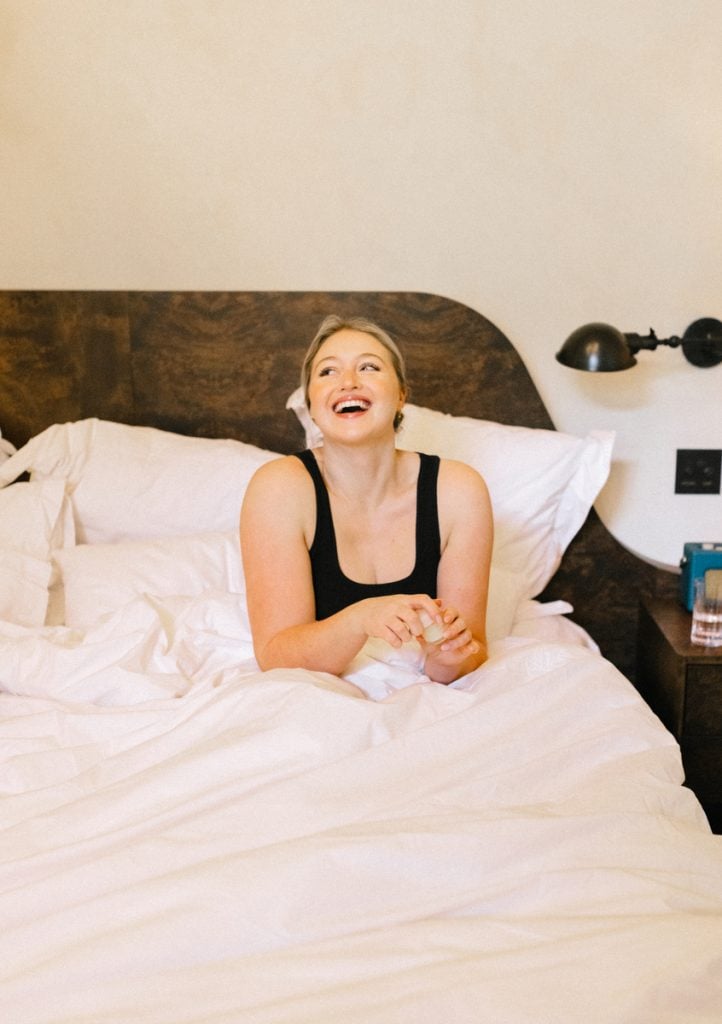
The 16 Best Anti-Wrinkle Pillows (and Pillowcases) of 2023
Best Customizable Anti-Wrinkle Pillow: The Pillow Bar
The Pillow Bar team takes gender, height, and age into consideration when crafting their hybrid pillows, designed in collaboration with a physician to offer personalized support. The hypoallergenic down or down alternative pillows cradle your neck whether you’re a back or side sleeper, and keep your skin well above the fray.
Perhaps the biggest draw of all is that, despite its contour, the pillow fits into a standard-sized pillowcase (opt for a silk or satin option from The Pillow Bar for added beauty sleep insurance), so it blends right into your pillow display.
The Best Copper-Infused Pillow: enVy
Instead of pitting copper against silk, enVy embraced the antimicrobial, friction-fighting power of both for an ultra-clean, ultra-luxury product that keeps your neck in line.
Best for a Little Bit of Everything: The Night Pillow
Beyond its apt name and sexy aesthetic, The Night Pillow truly does it all. Air-light memory foam helps cradle the head, while a 90% mulberry silk pillowcase keeps skin and hair from tugging or snagging.
Contoured Anti-Wrinkle Pillows
Flawless Face Pillow
Kudos to the social media team behind Flawless Face, who’ve helped make a viral sensation of the butterfly-shaped pillow. But five-star reviews mean a lot more than double taps—fortunately for Flawless Face, the satin-covered pillow has them all.
YourFacePillow
While Flawless Face might dominate social media, YourFacePillow rules Amazon. Thousands of five-star reviews praise the padded design for helping with wrinkles, backaches, and even acne.
Emircey
Another Amazon five-star review contender, the uniquely-shaped pillow hugs the head and neck no matter what position you sleep in—and has overwhelmingly positive reviews. One verified purchaser wrote, “As I lay my head down onto the pillow, it initially felt odd (let’s face it, all new pillows do) but after just a few minutes I relaxed and my brain reacted like this was a sleeping position it remembered from long ago and it felt so natural.”
Nurse Jamie Beauty Bear
With all the beauty of thoughtfully contoured memory foam and the low-friction magic of a satin finish, this travel-friendly pillow is a must-have among beauty obsessives.
PureComfort
While most anti-aging pillows focus on keeping you on your back, PureComfort fully embraces the side sleepers with hypoallergenic memory foam and ear holes that help relieve pressure in the night. (This may also be a nighttime savior for any side sleepers who recently got an ear piercing.)
Save My Face
Given its petite size, this one may work better as a travel pillow than your nightly go-to, but the fully machine-washable product and its graceful “wings” keep you supported (and unsmushed) at every angle.
The Best Anti-Wrinkle Cooling Pillows
Cooling may not be high on your list of beauty pillow qualifiers, but they’re excellent options for hot sleepers wanting to wake up more refreshed.
Coop
The adjustable pillow fluffs up beautifully and Coop’s vegan, gel-infused memory foam and microfiber fill blend keep you cool through the night. Multiple Amazon reviewers hunting for the perfect pillow claimed this as their ultimate find, though they did note the memory foam can have a bit of an odor.
Snuggle-Pedic
The highly-rated and adjustable pillow’s Snuggle-Pedic’s breathable Kool-Flow Tech keeps things cool, while a moisture-wicking bamboo case keeps skin and hair moisturized.
The Best Bamboo, Silk, and Copper Pillowcases
ilumage (Copper)
Loads of positive reviews for this pillowcase, which is infused with smart patented anti-aging copper technology, point to how well it protected their hair, particularly when it comes to curls.
Ettitude (Bamboo)
The Instagram-famous brand is known for its silky smooth, sustainably made bamboo fabric, which keeps things beautifully breathable and temperature controlled.
Slip (Silk)
Kourtney Kardashian is obsessed with it—and so are we.
Fishers Finery (Silk)
A staggering amount of five-star Amazon reviews matches a staggering momme count: 25. Bonus points for offering Fishers Finery’s undyed option, which makes this silk pillowcase even better for sensitive skin.
Kitsch (Satin)
Kitsch’s rabidly reviewed pillow offers many of the same benefits as silk for a fraction of the price—and in a much livelier color range.
The post Can a Pillow Help Prevent Wrinkles? Experts Say, Yes—Here Are the 16 Best On the Market appeared first on Camille Styles.
]]>